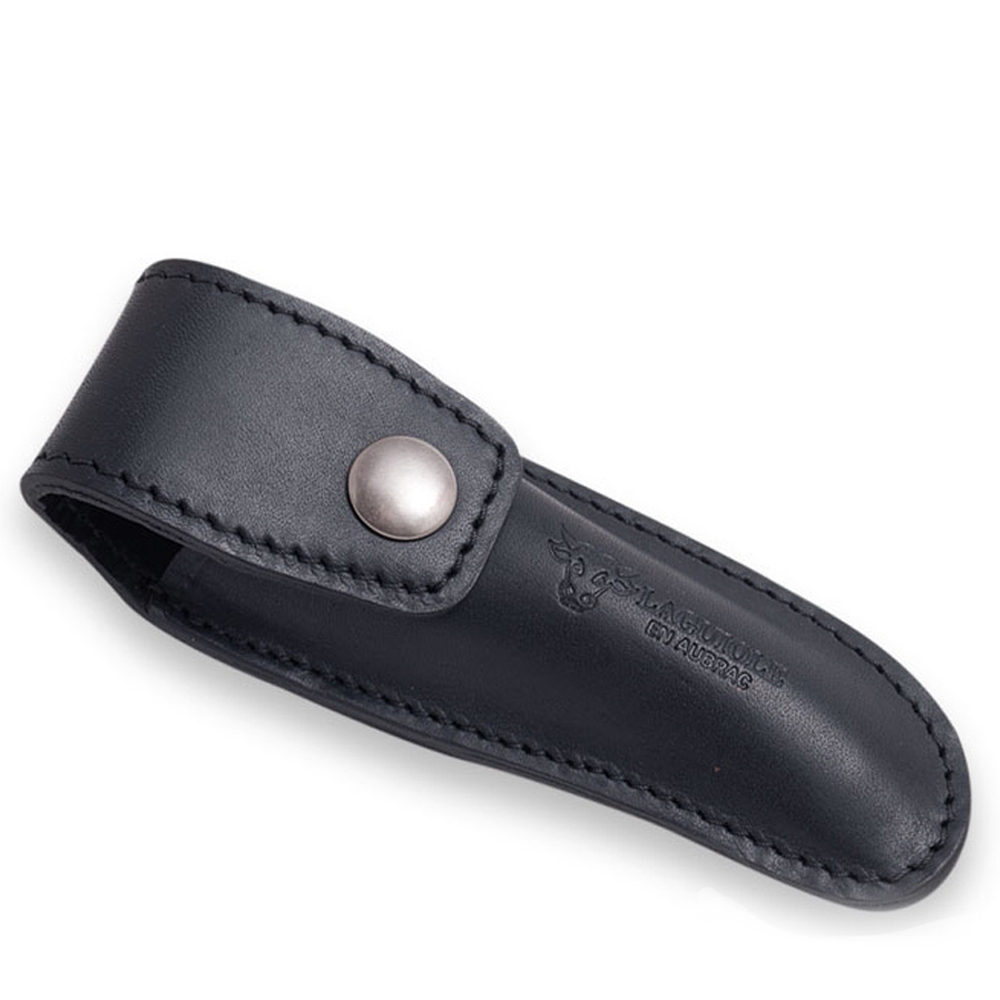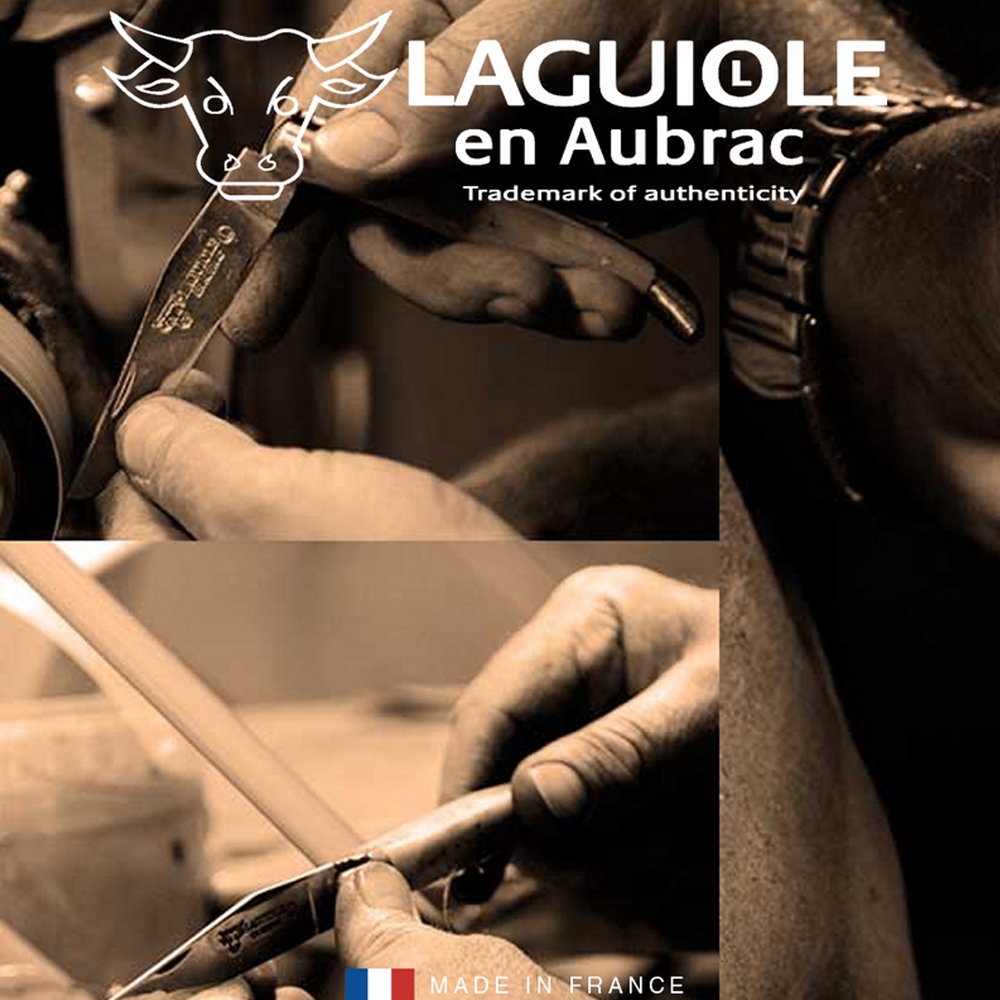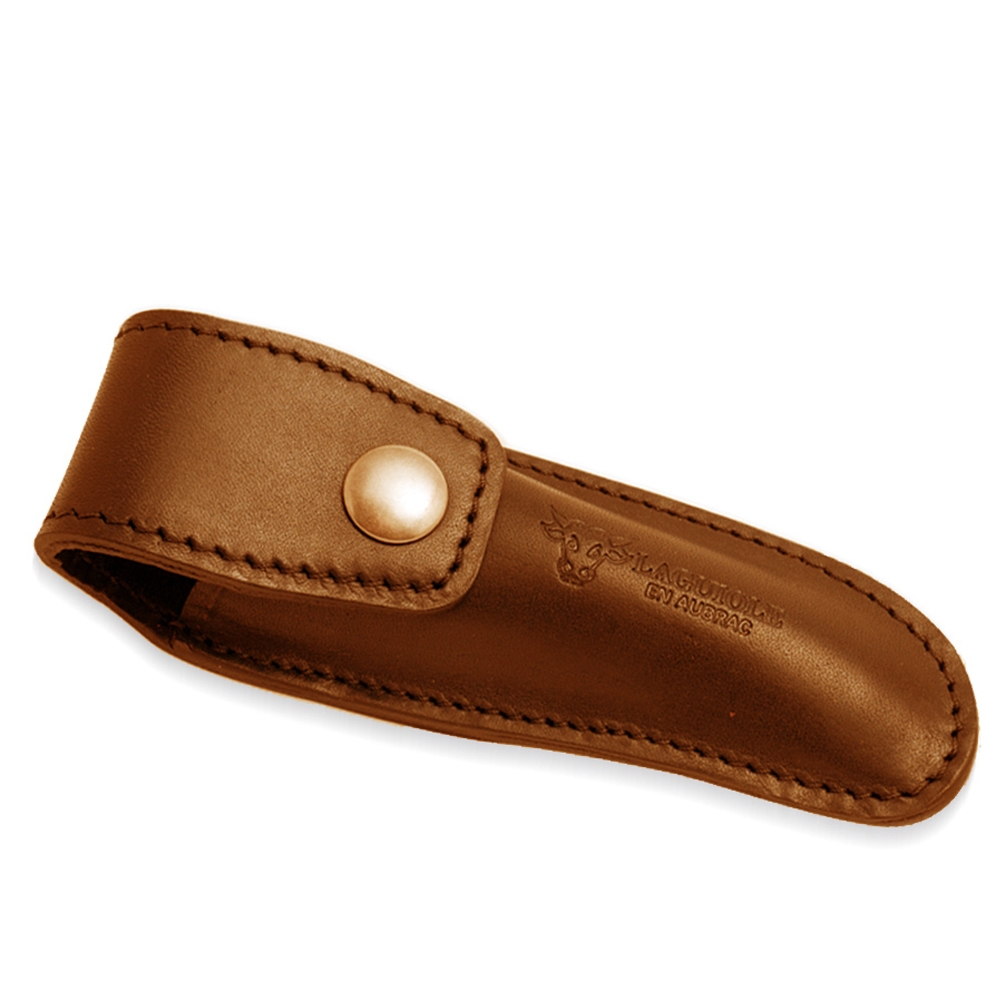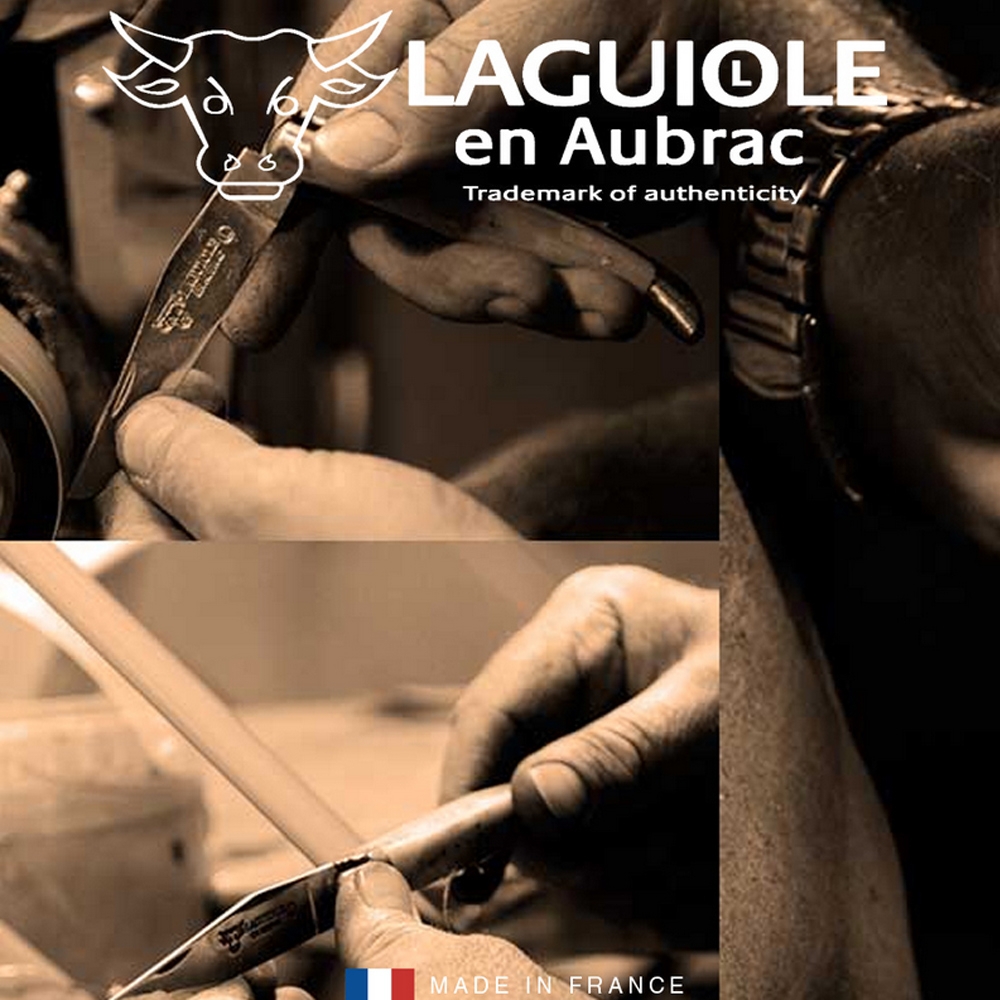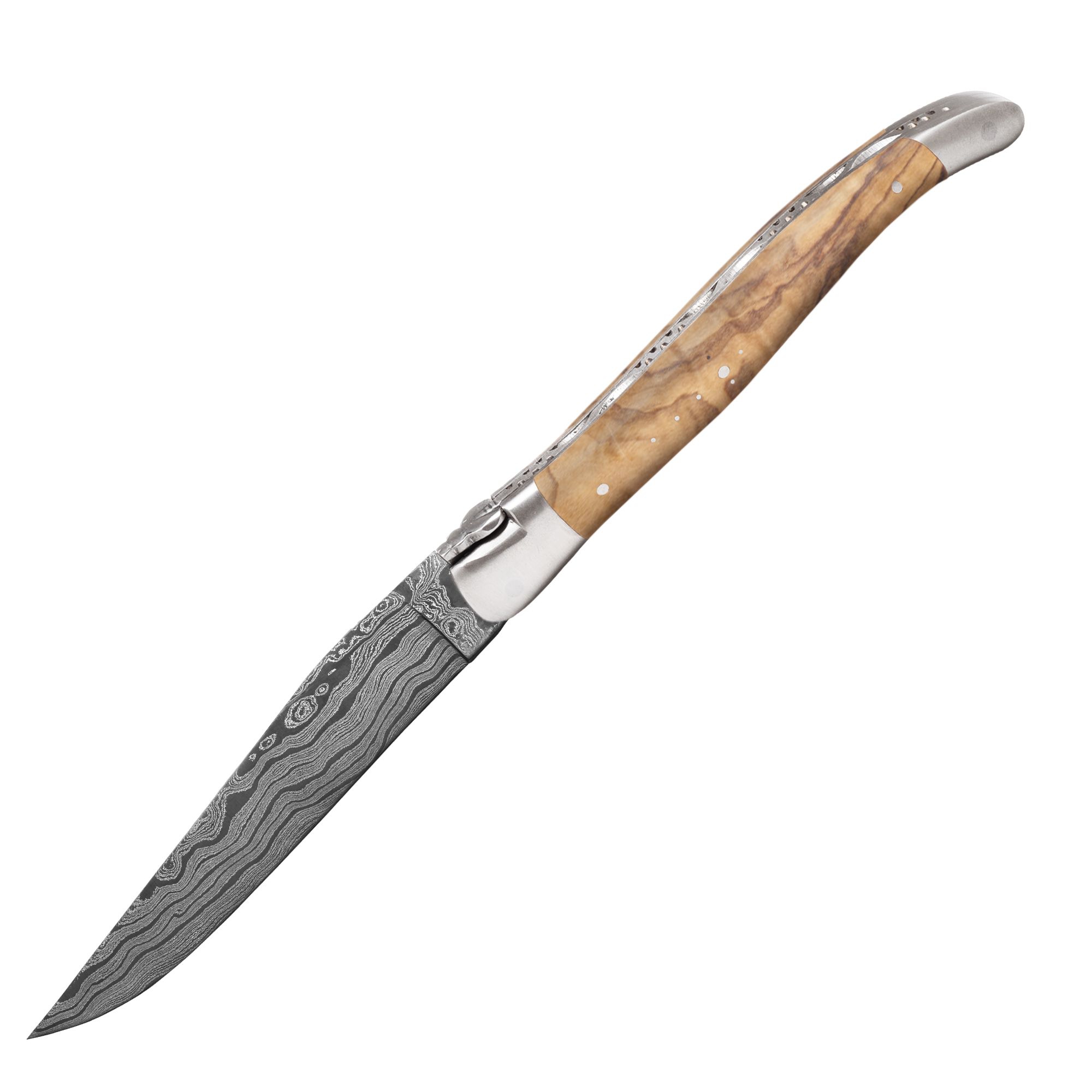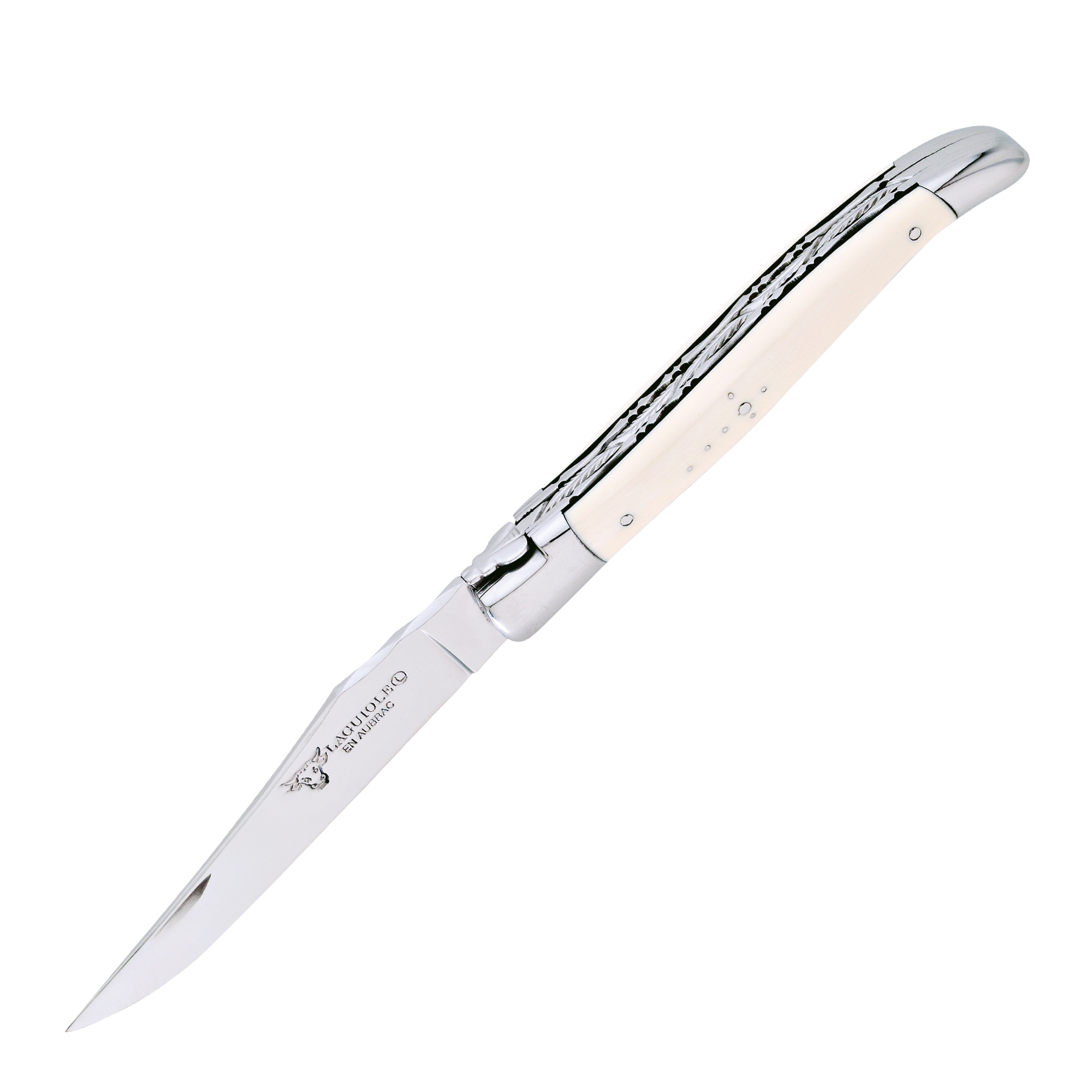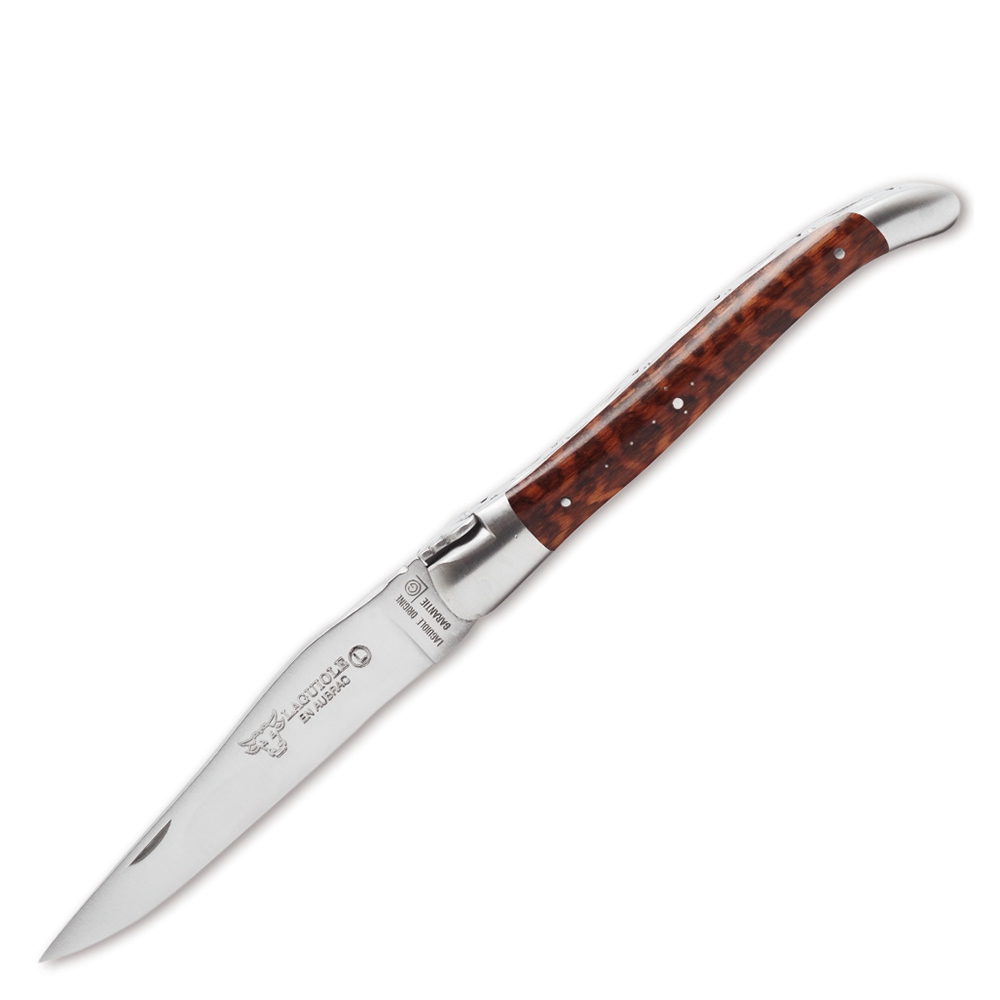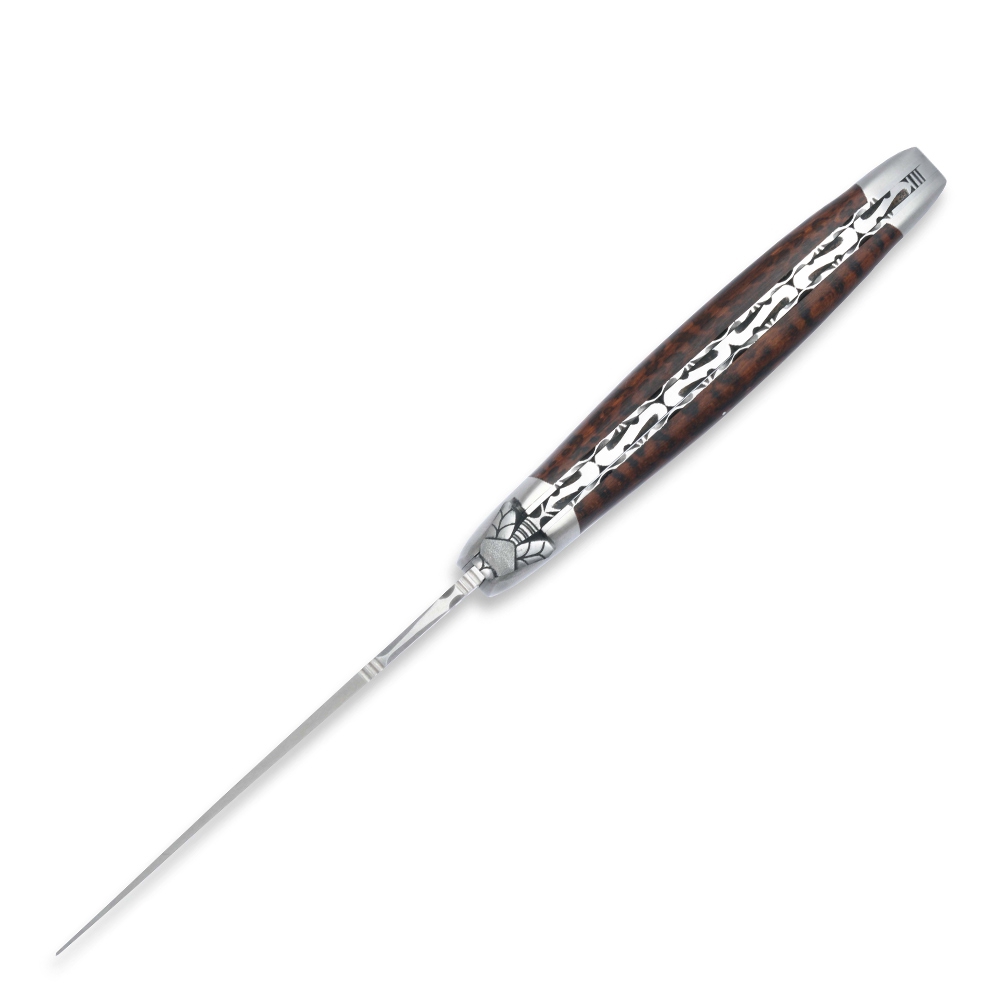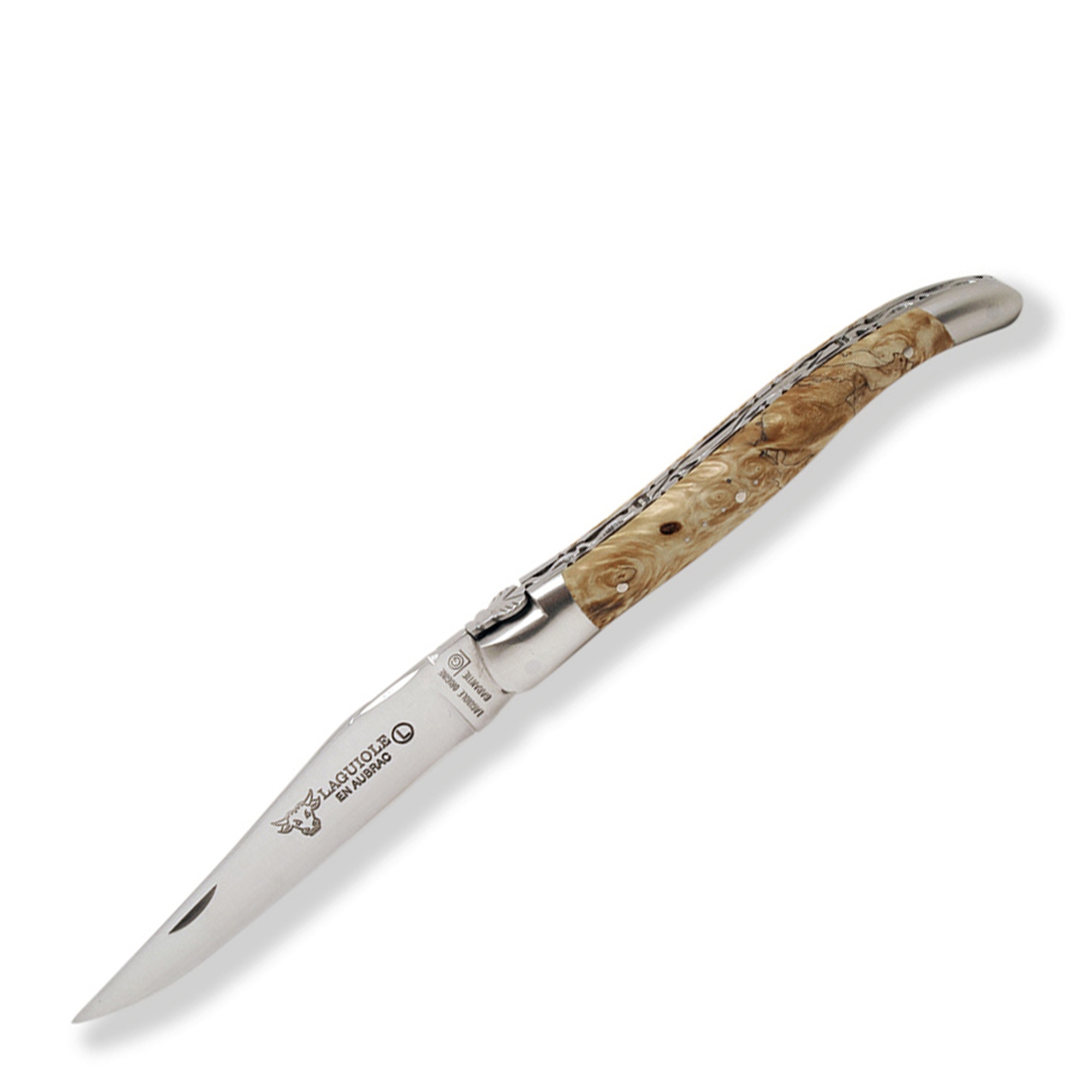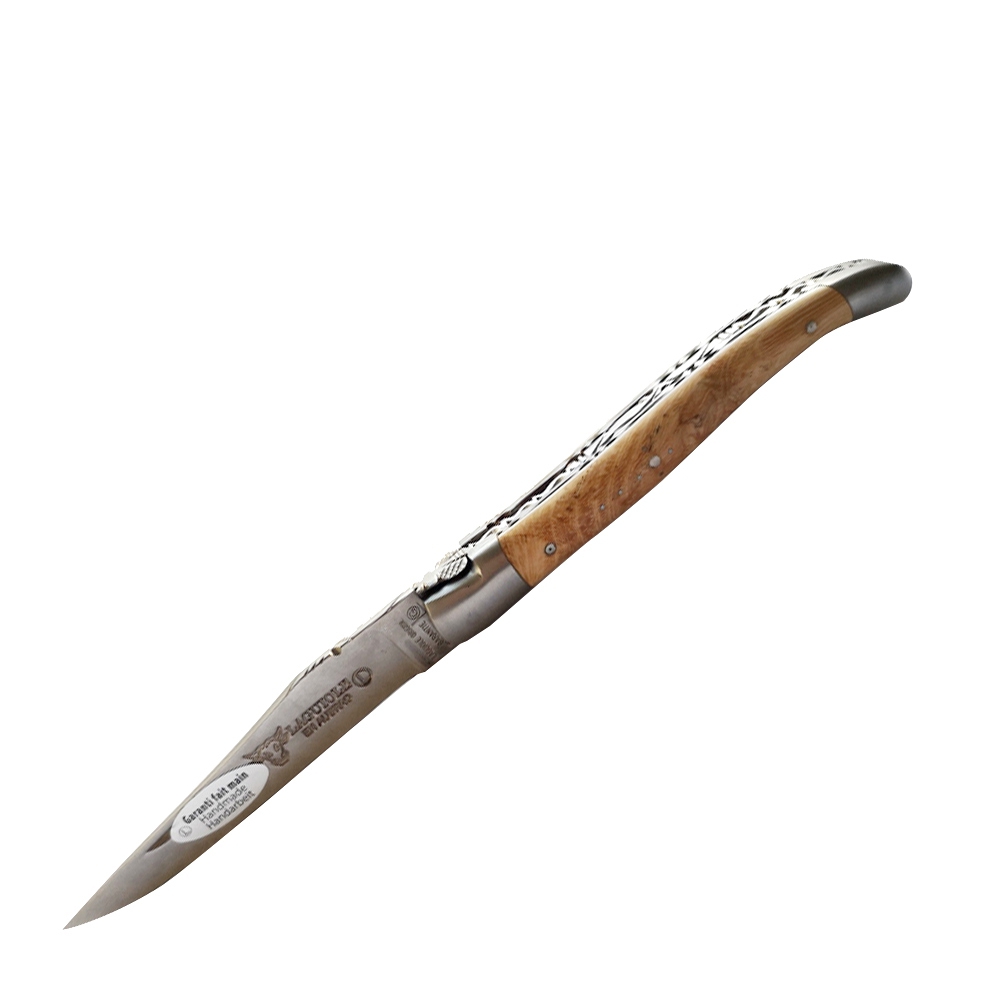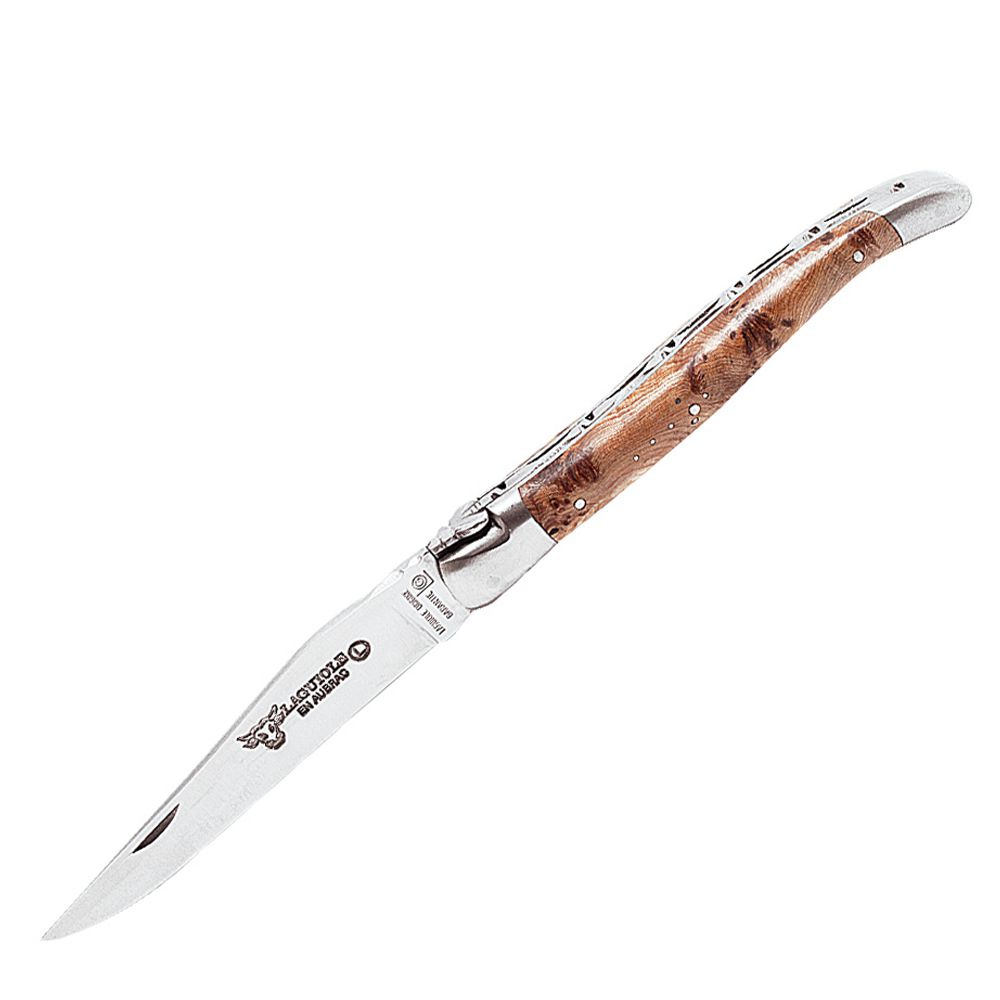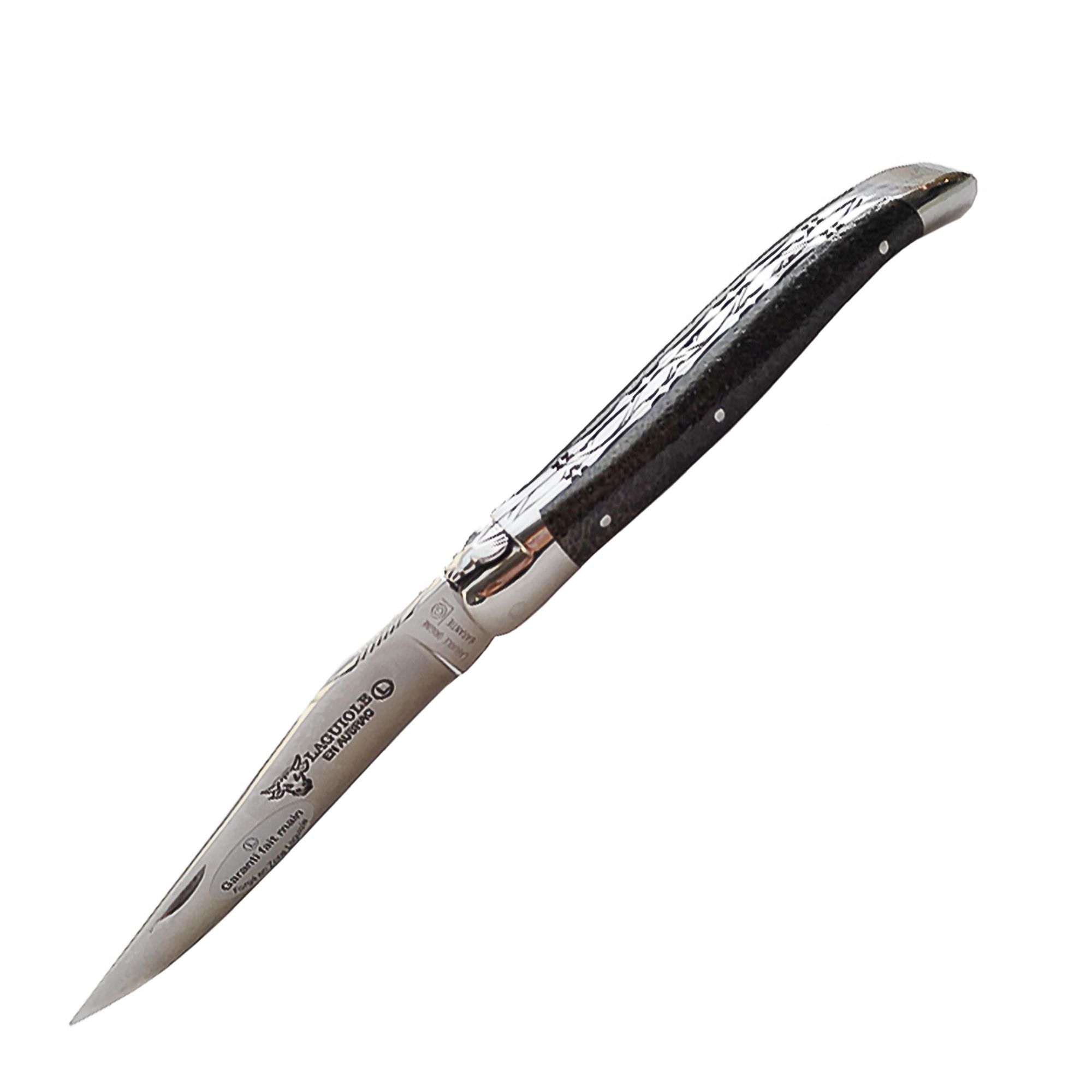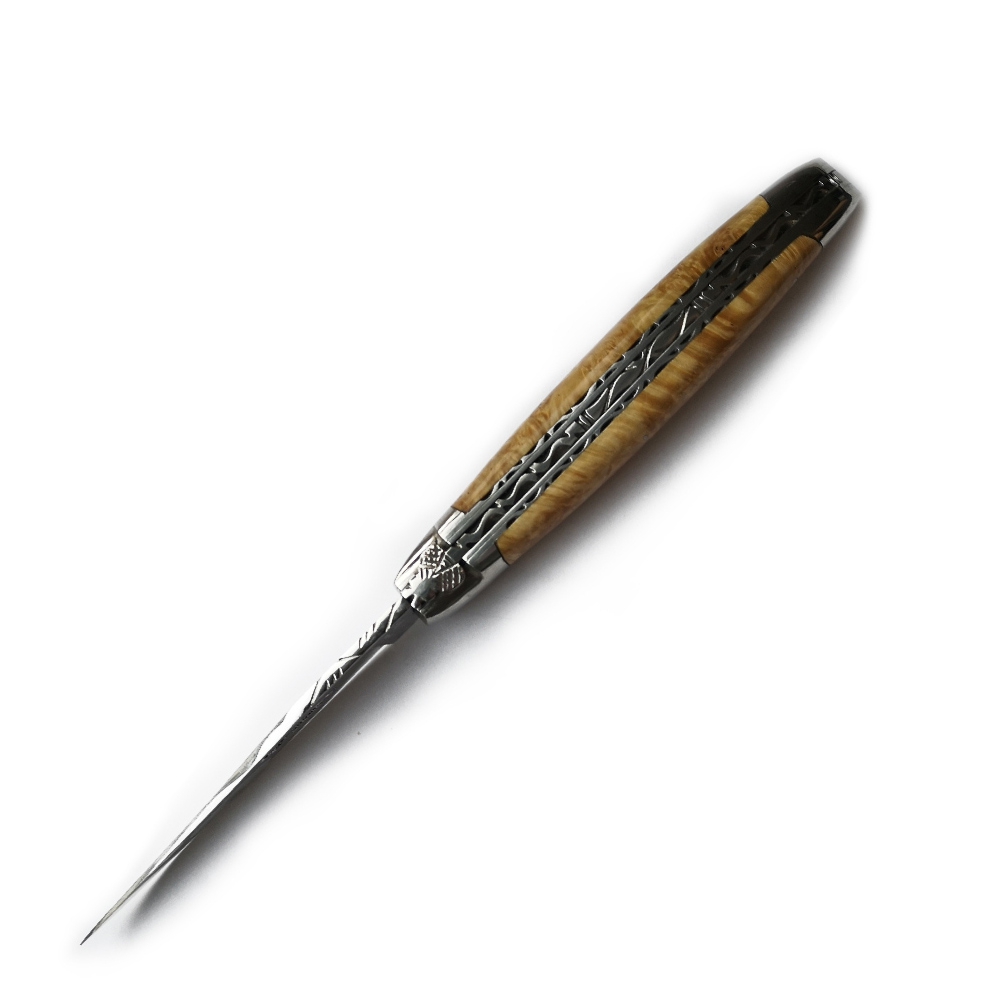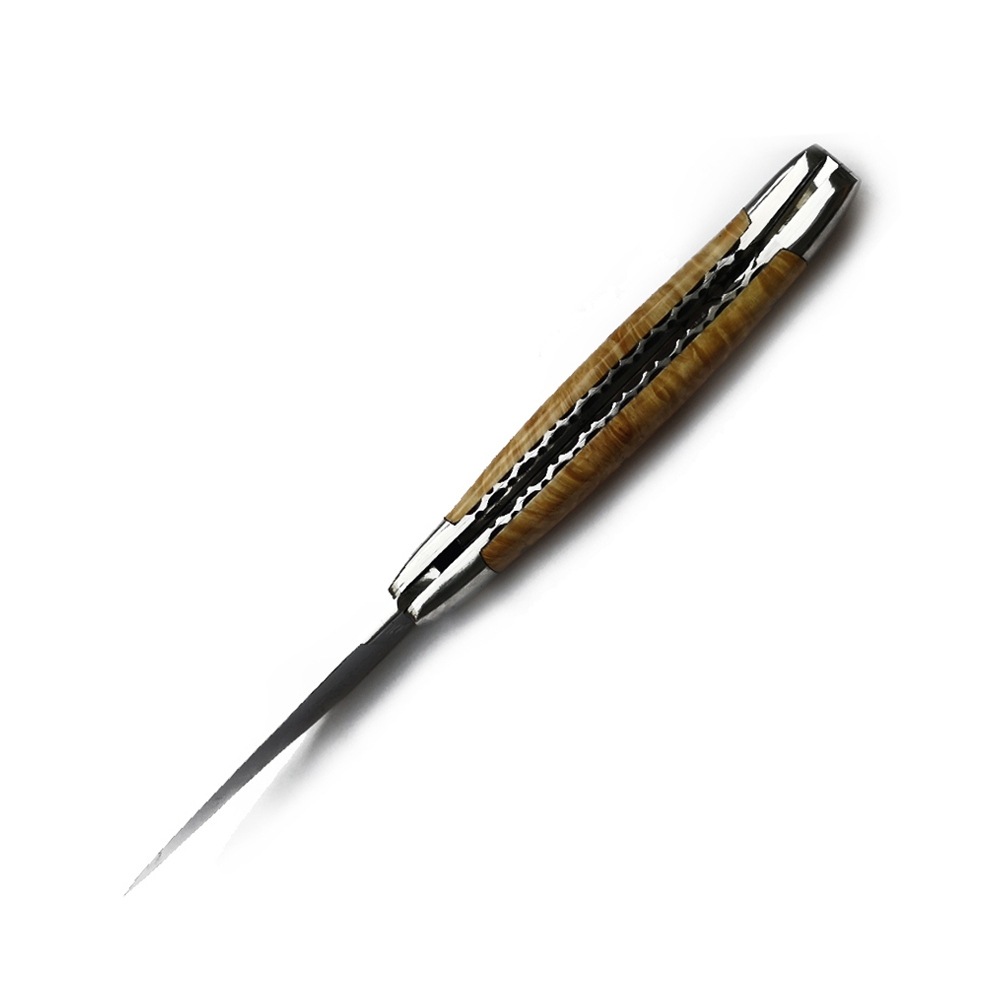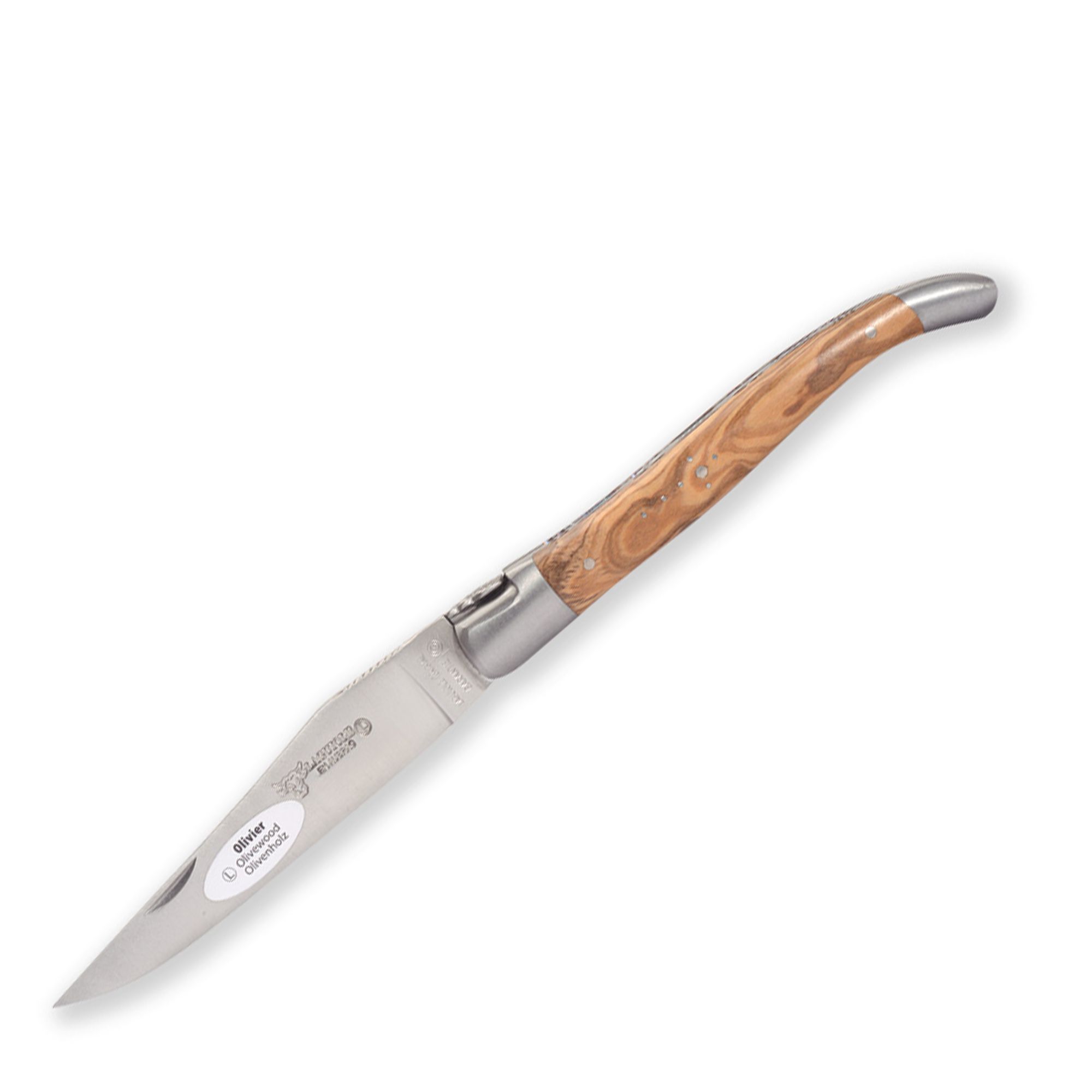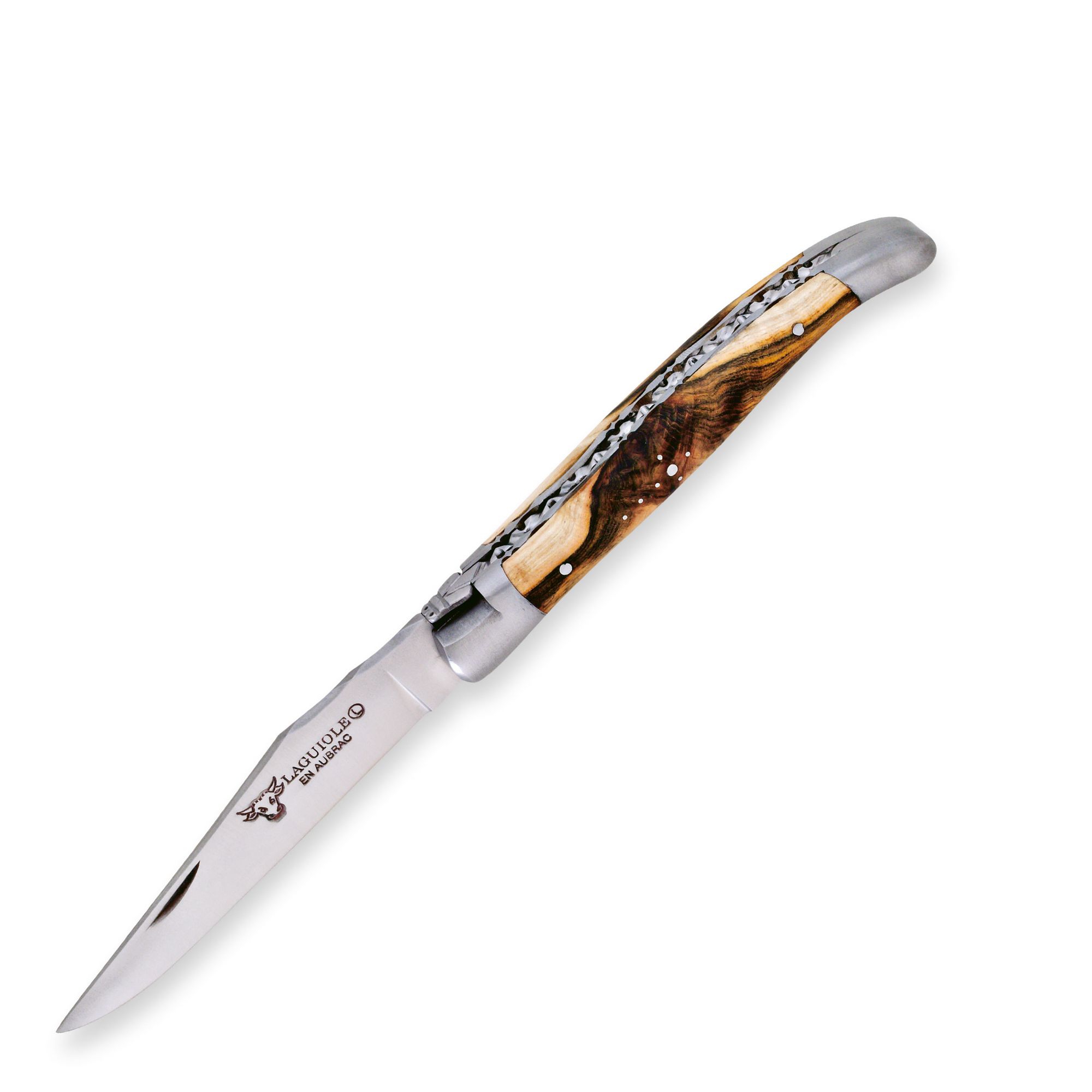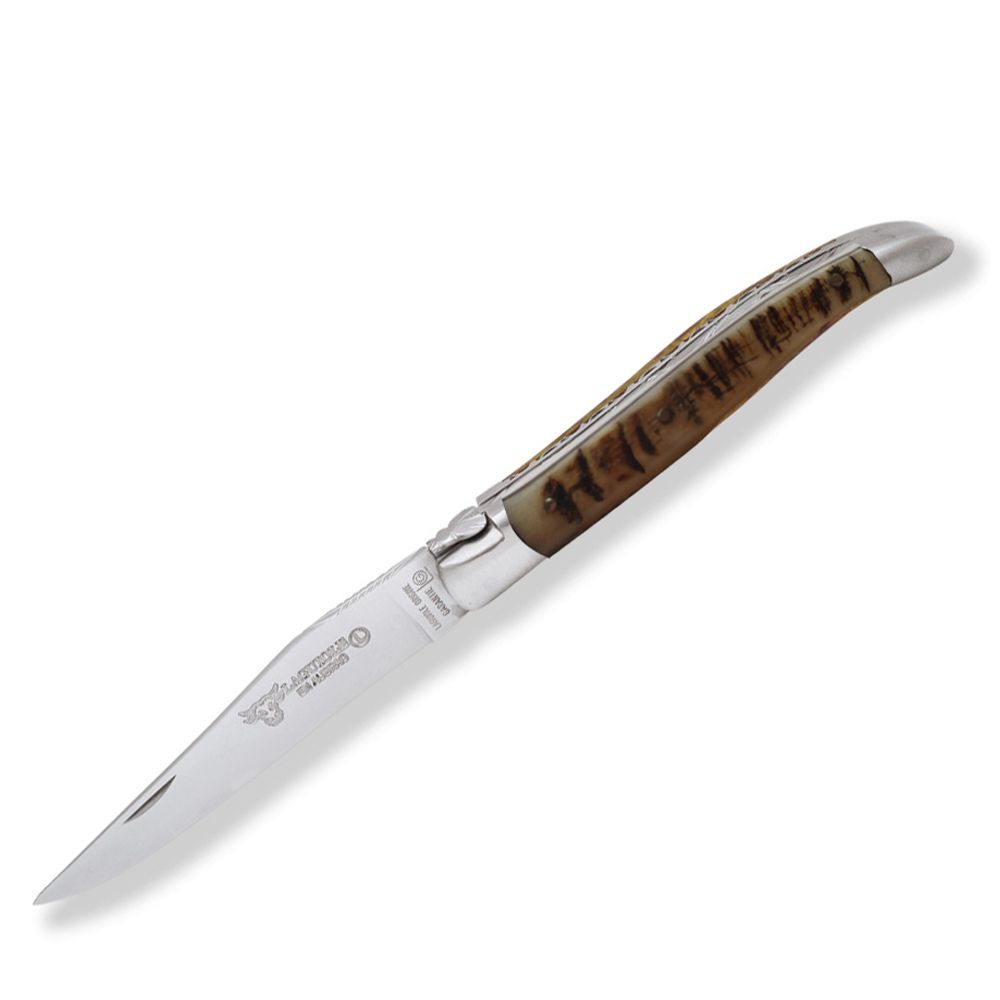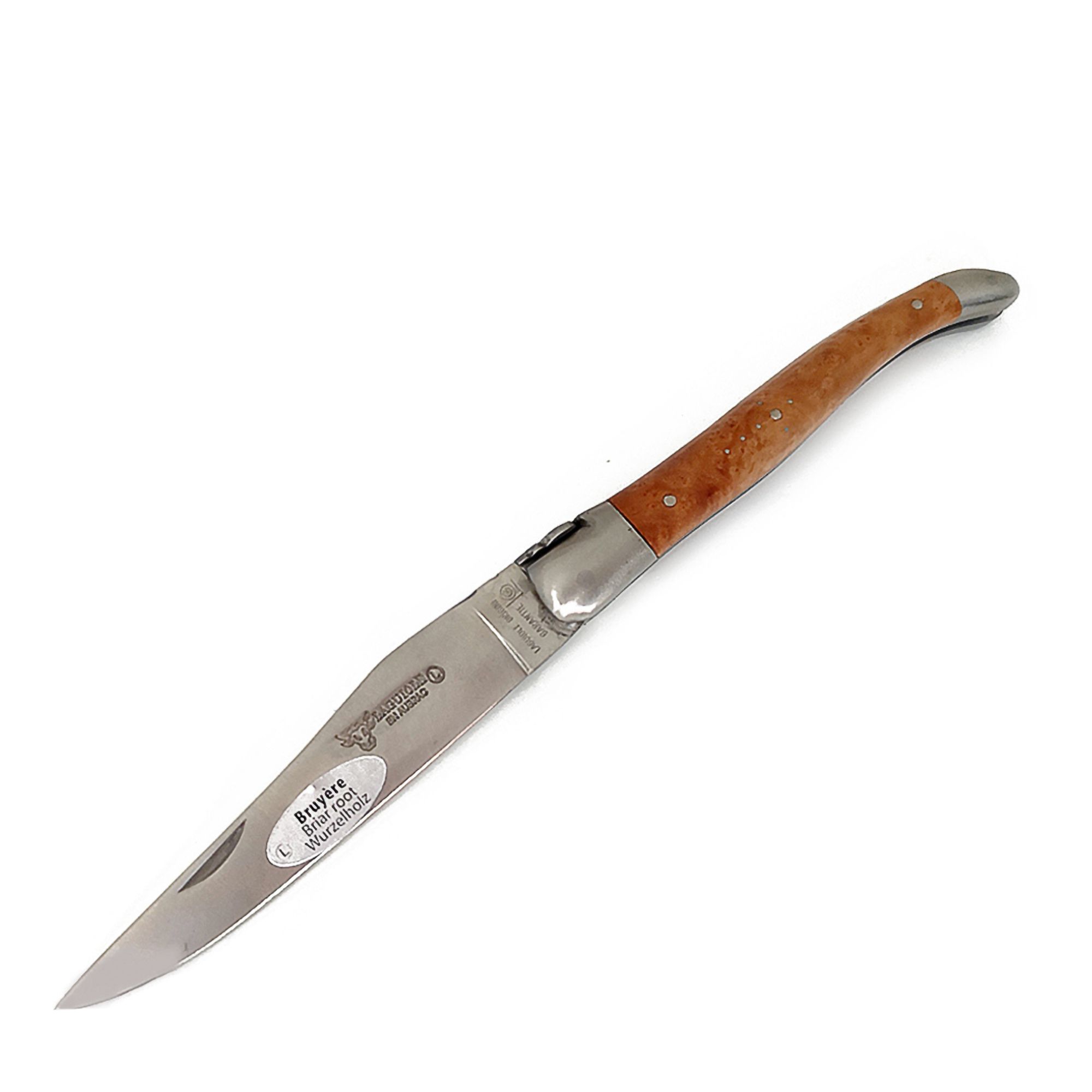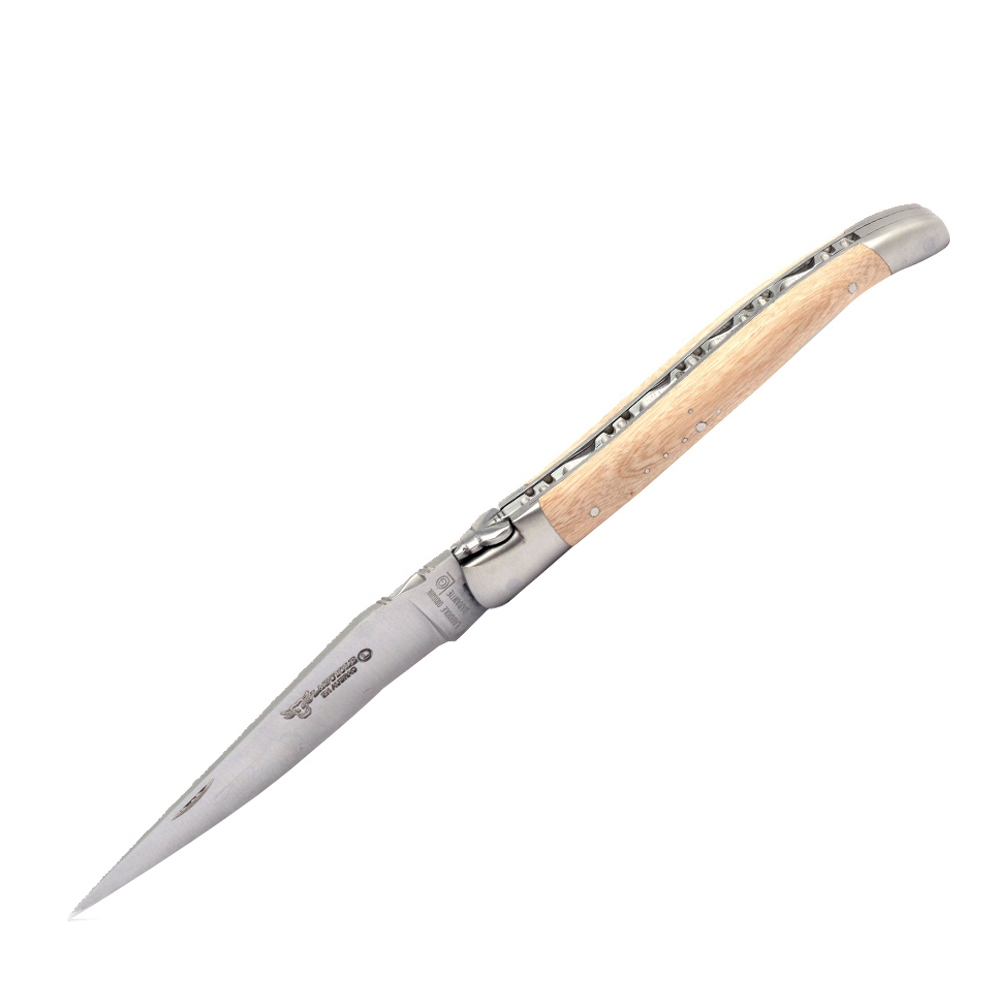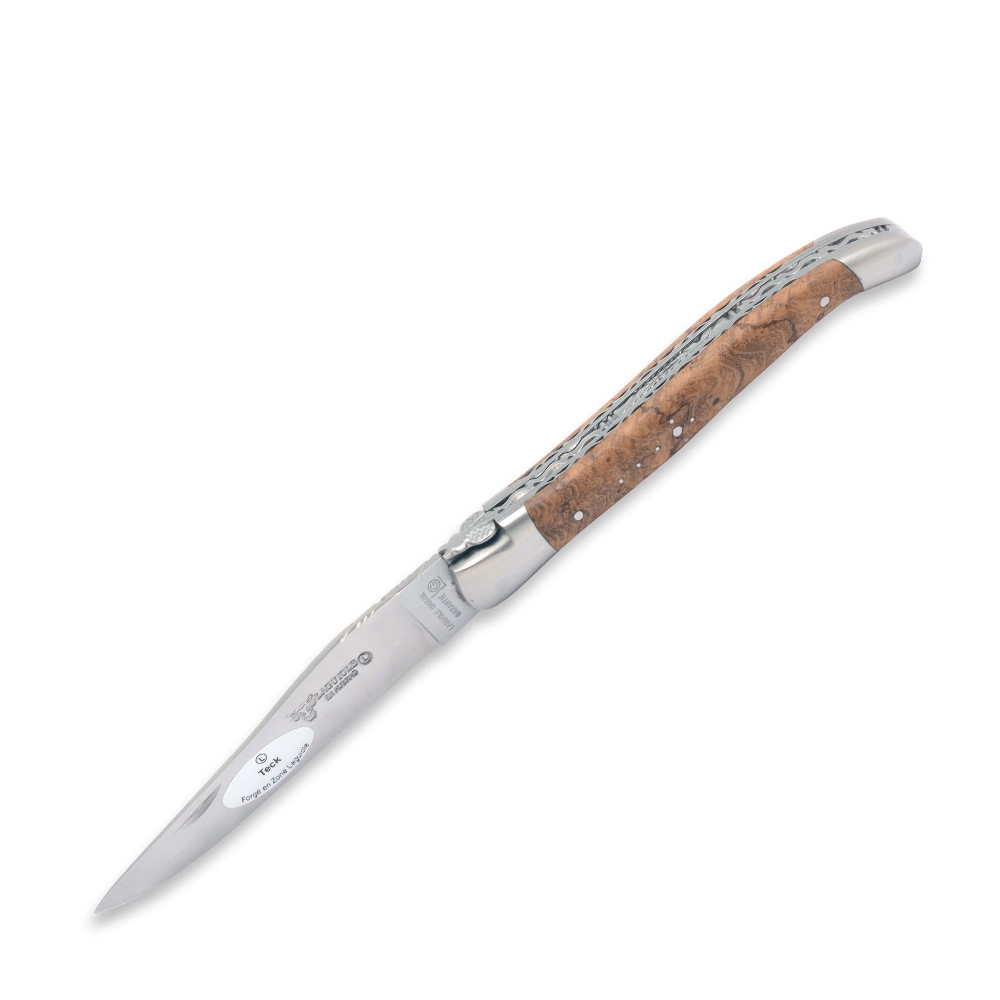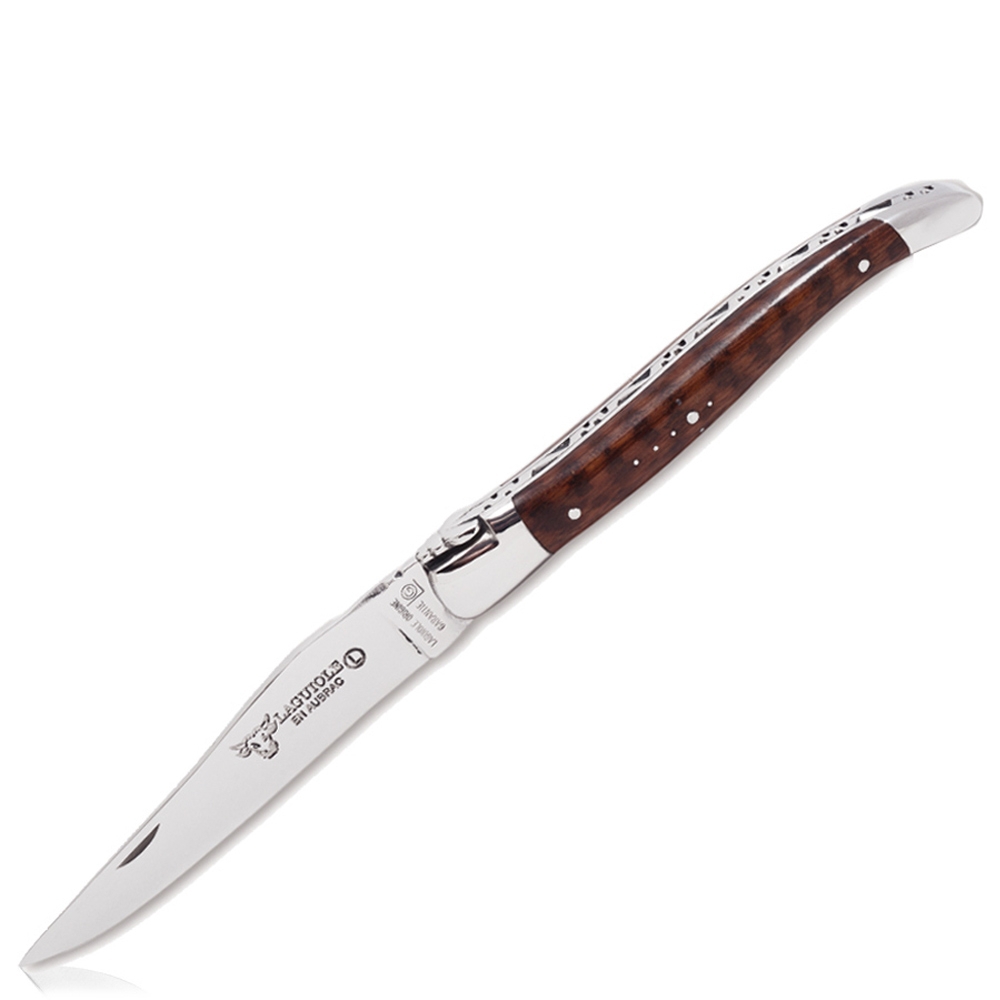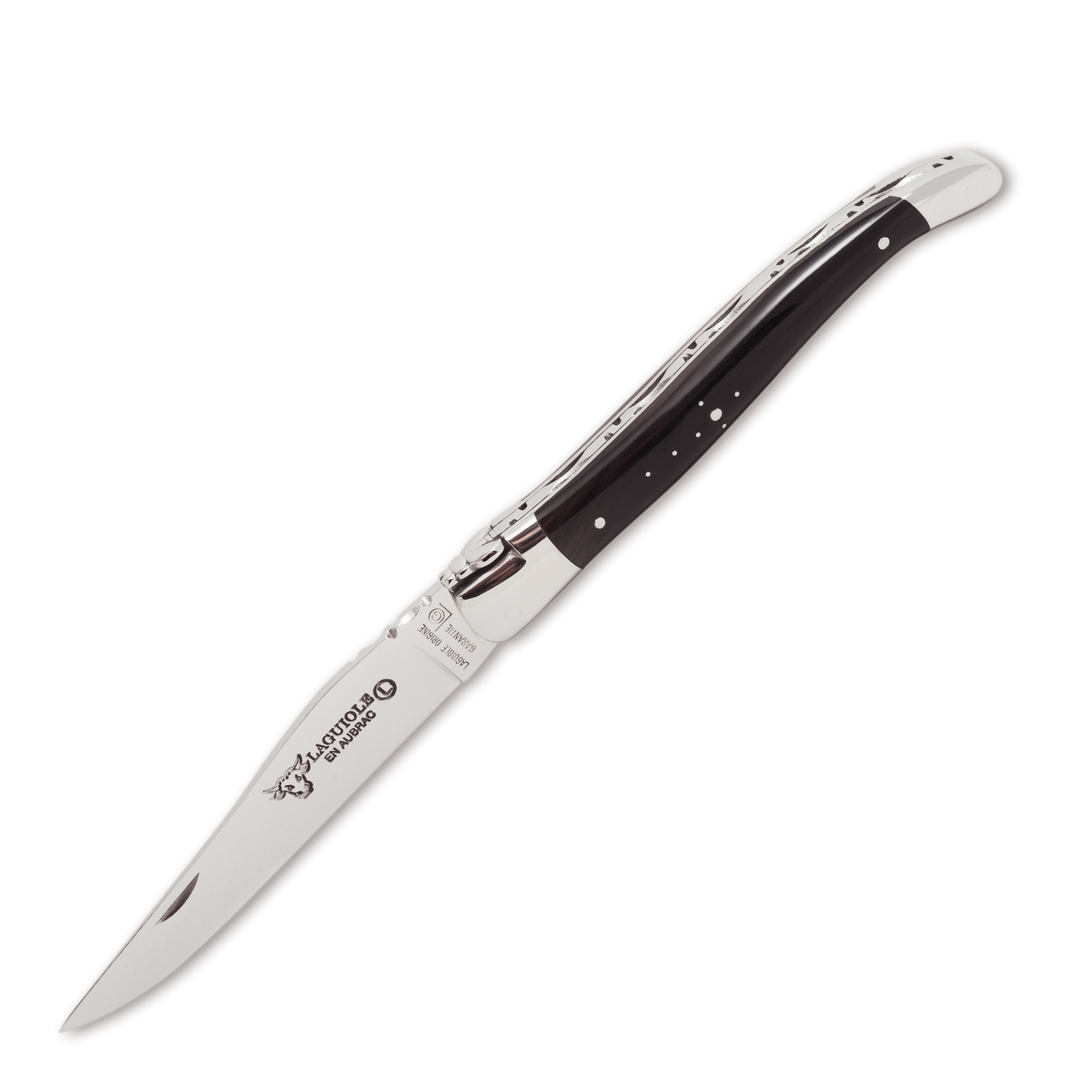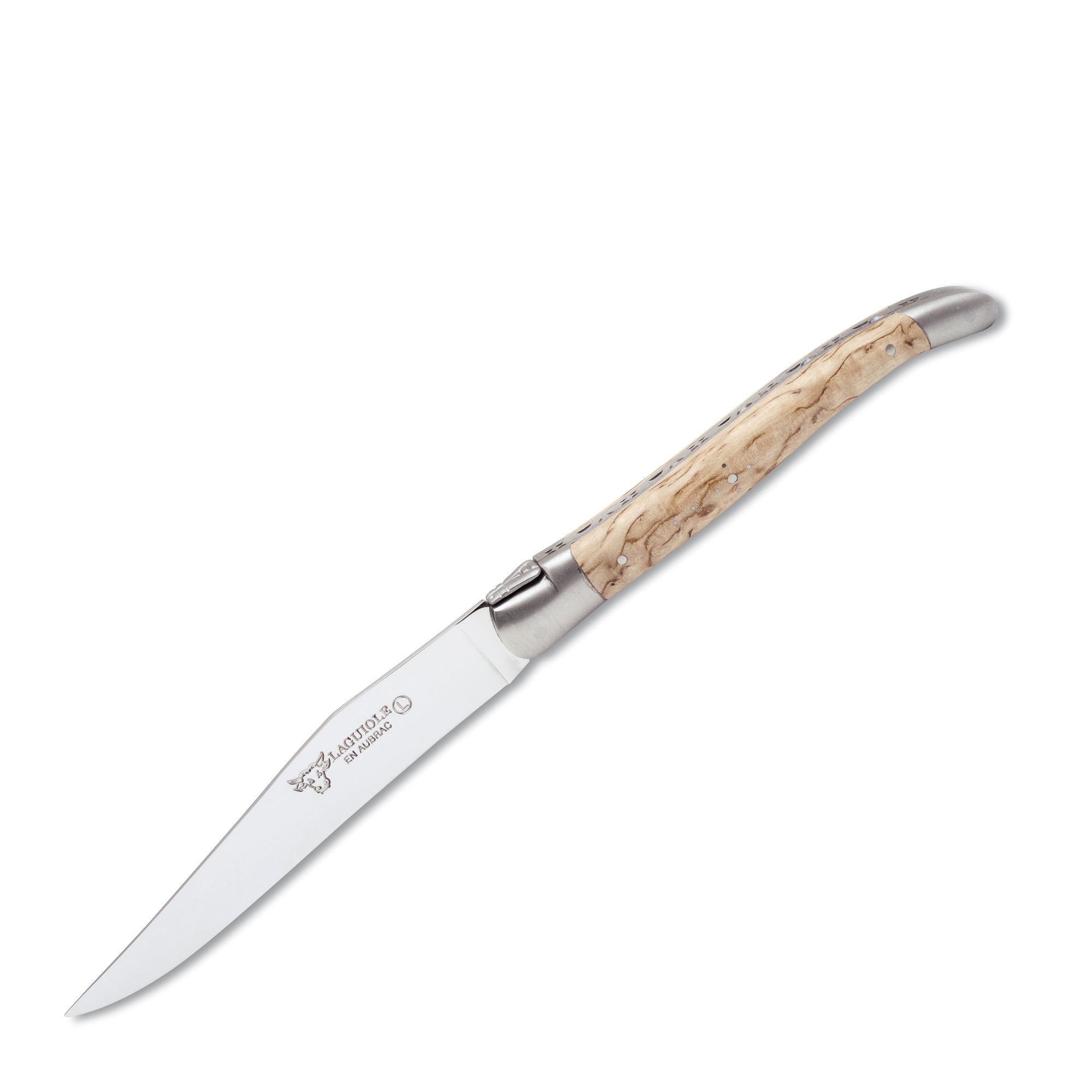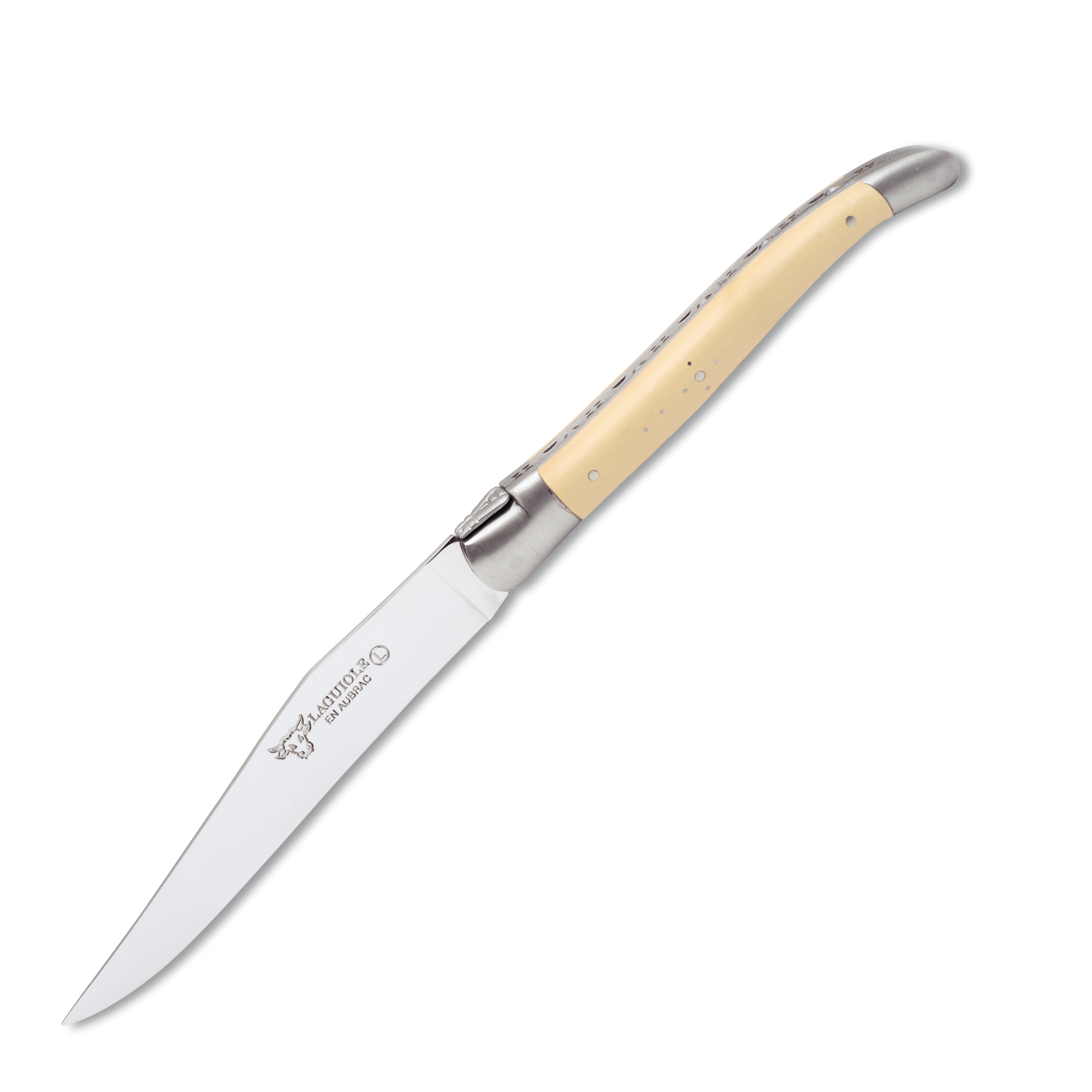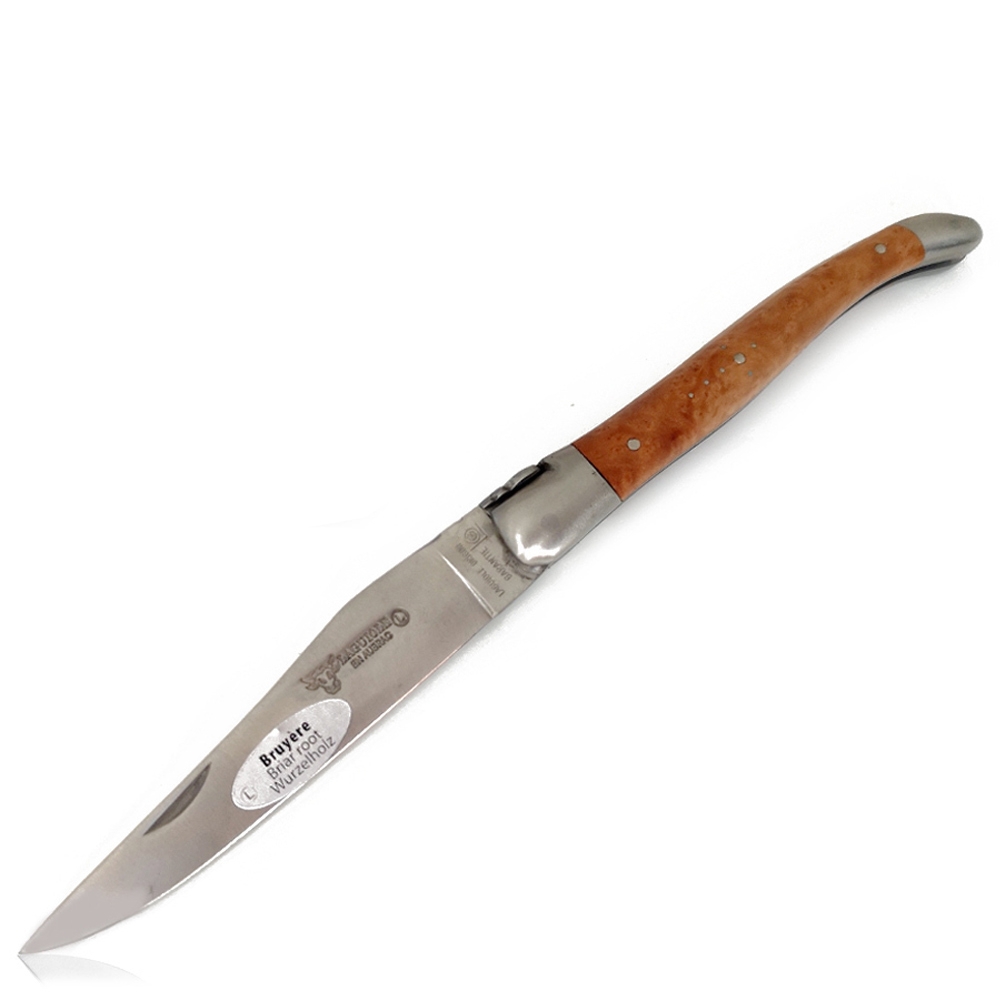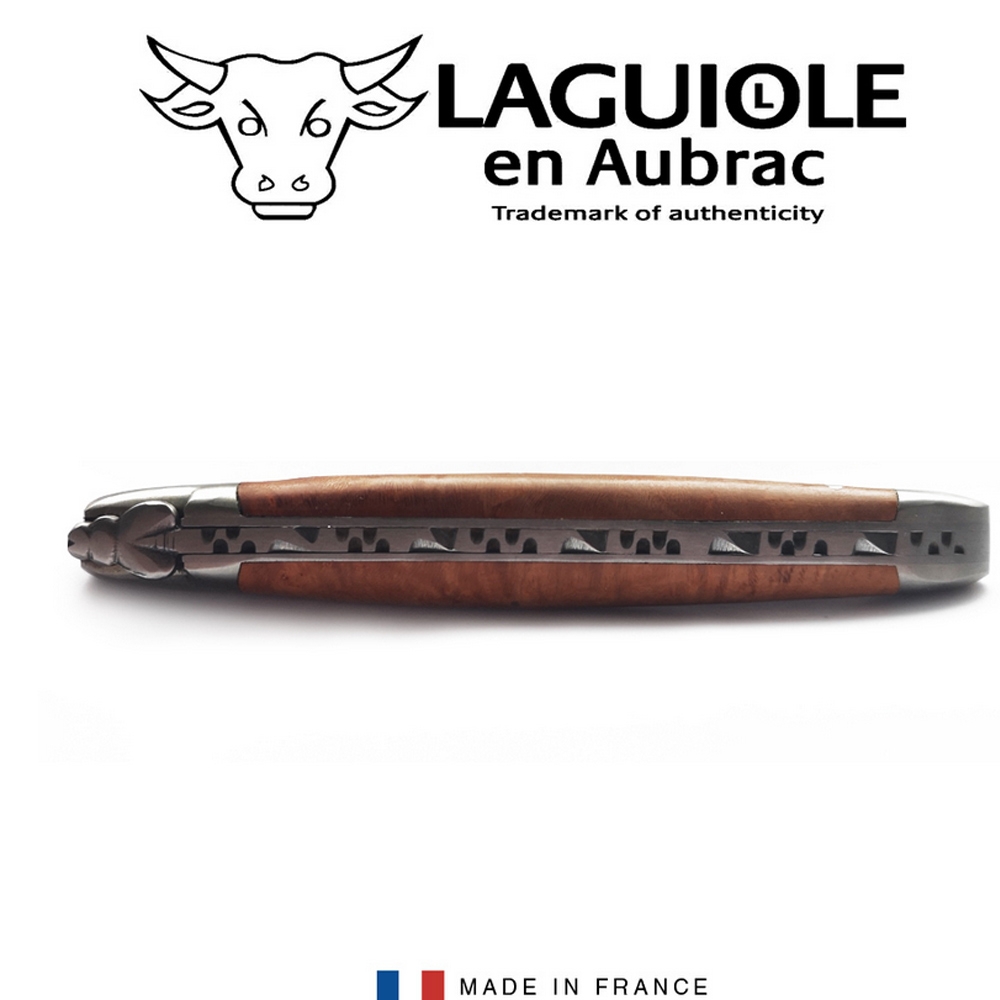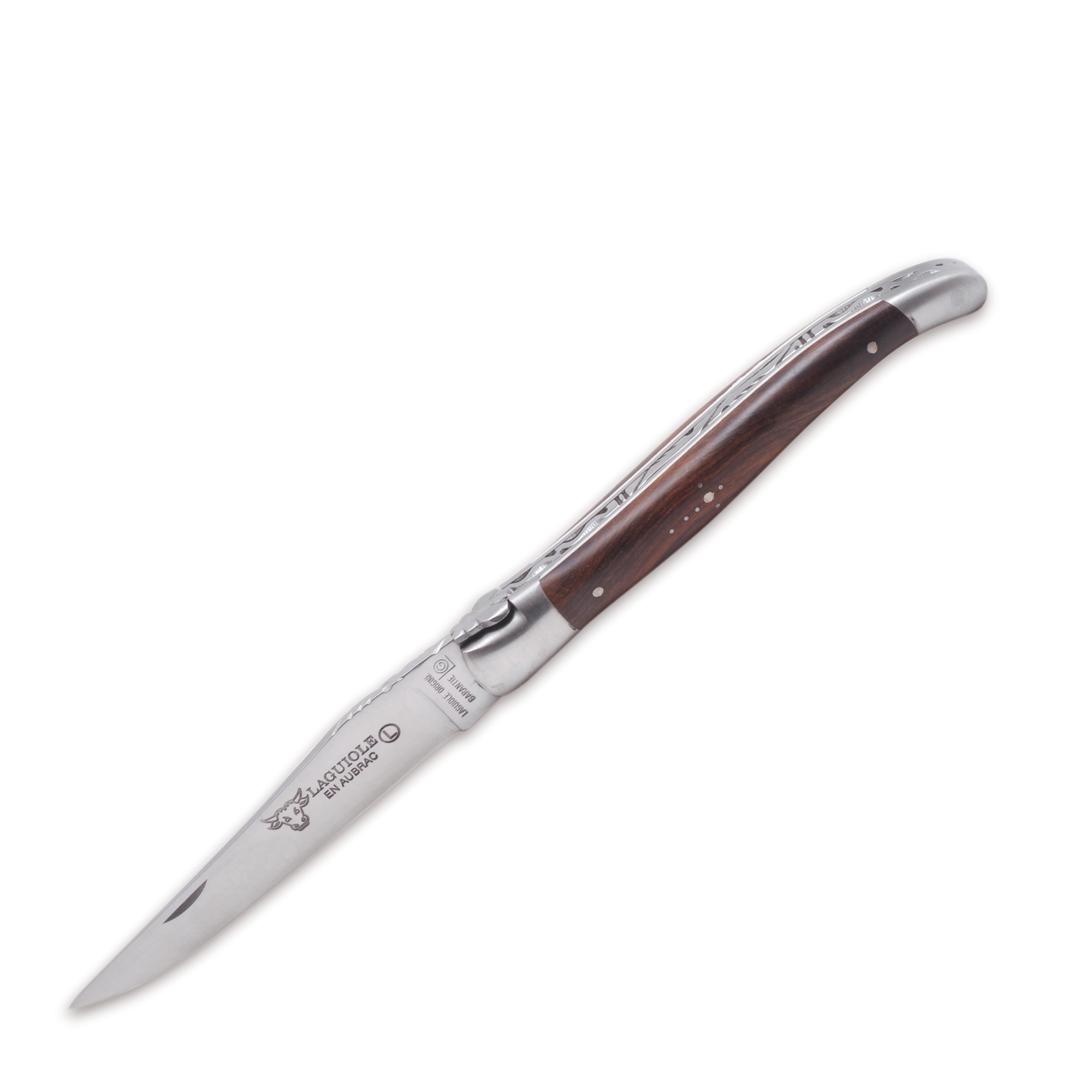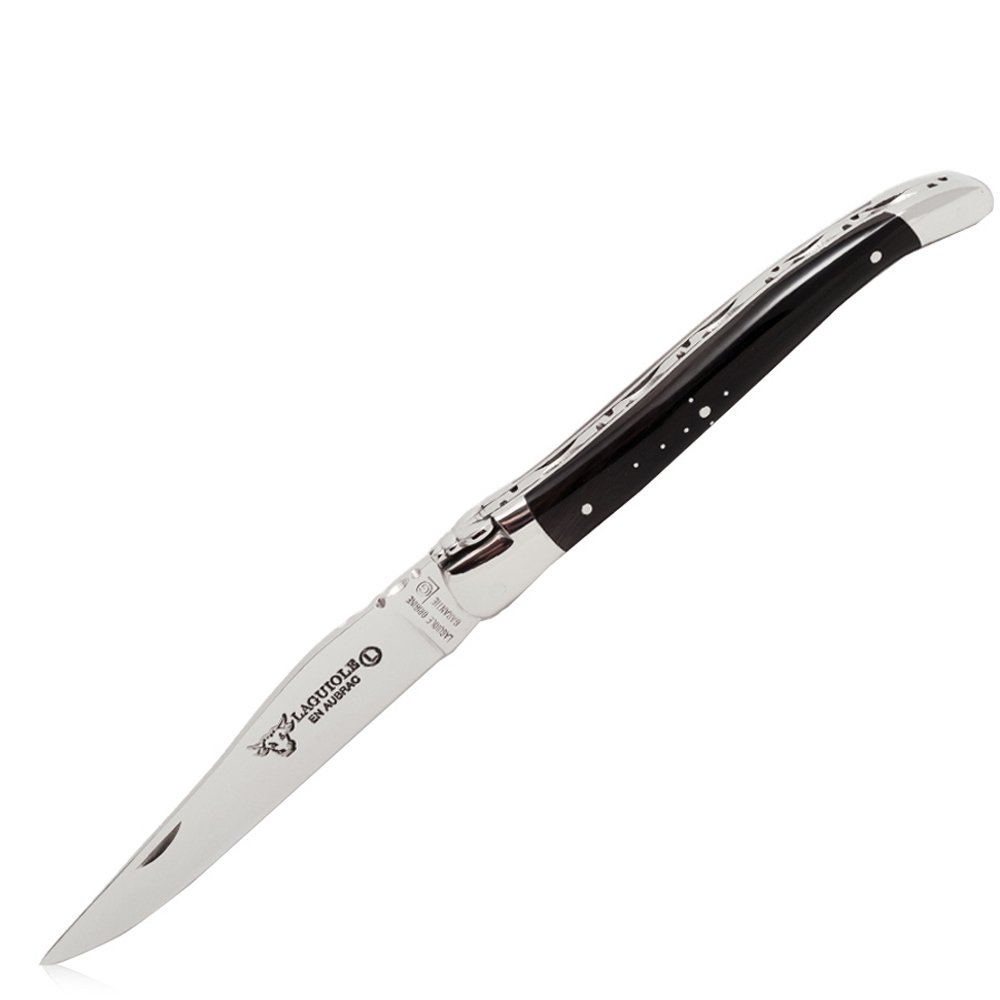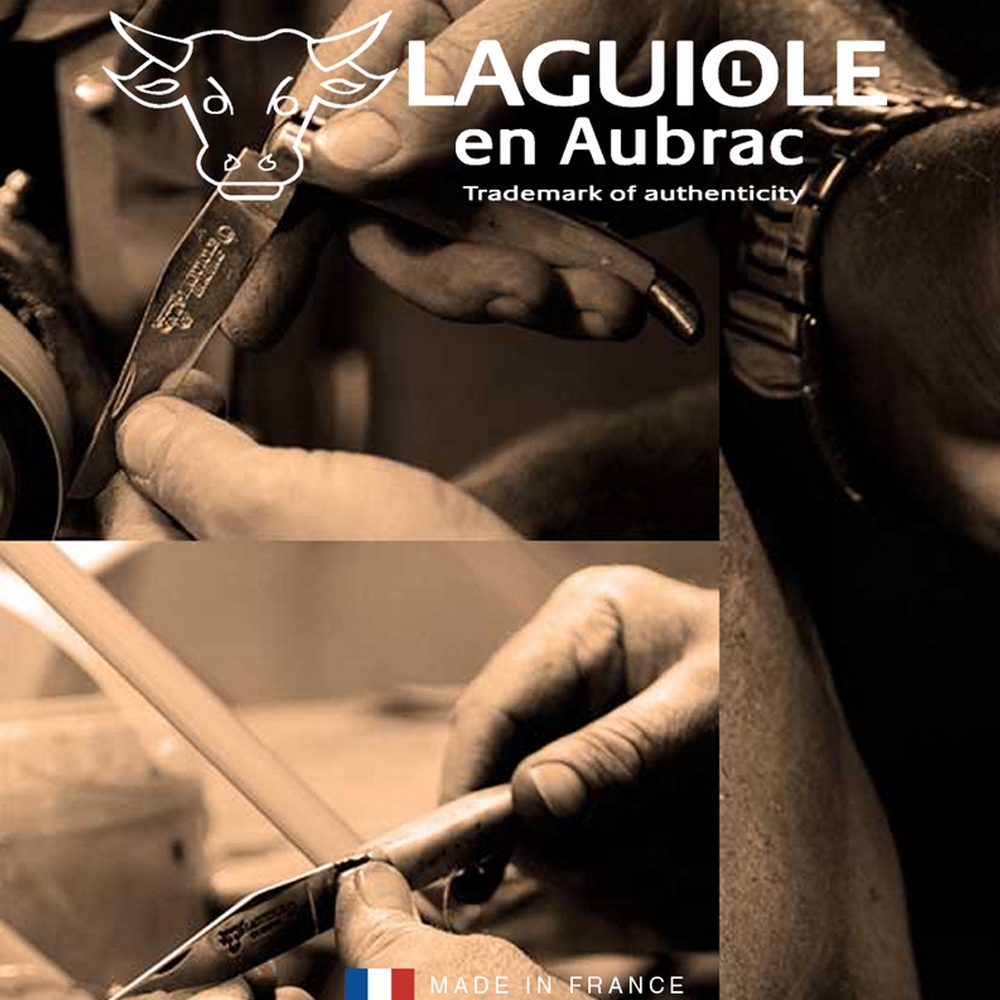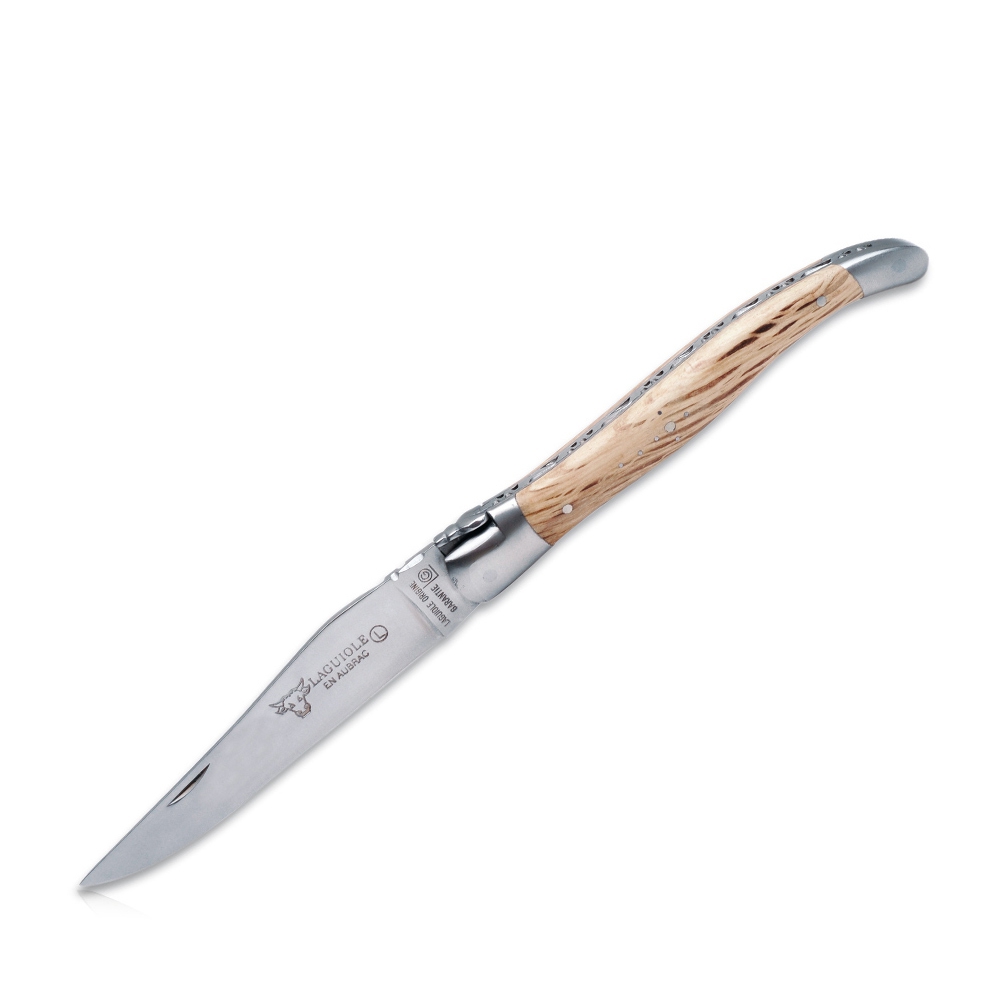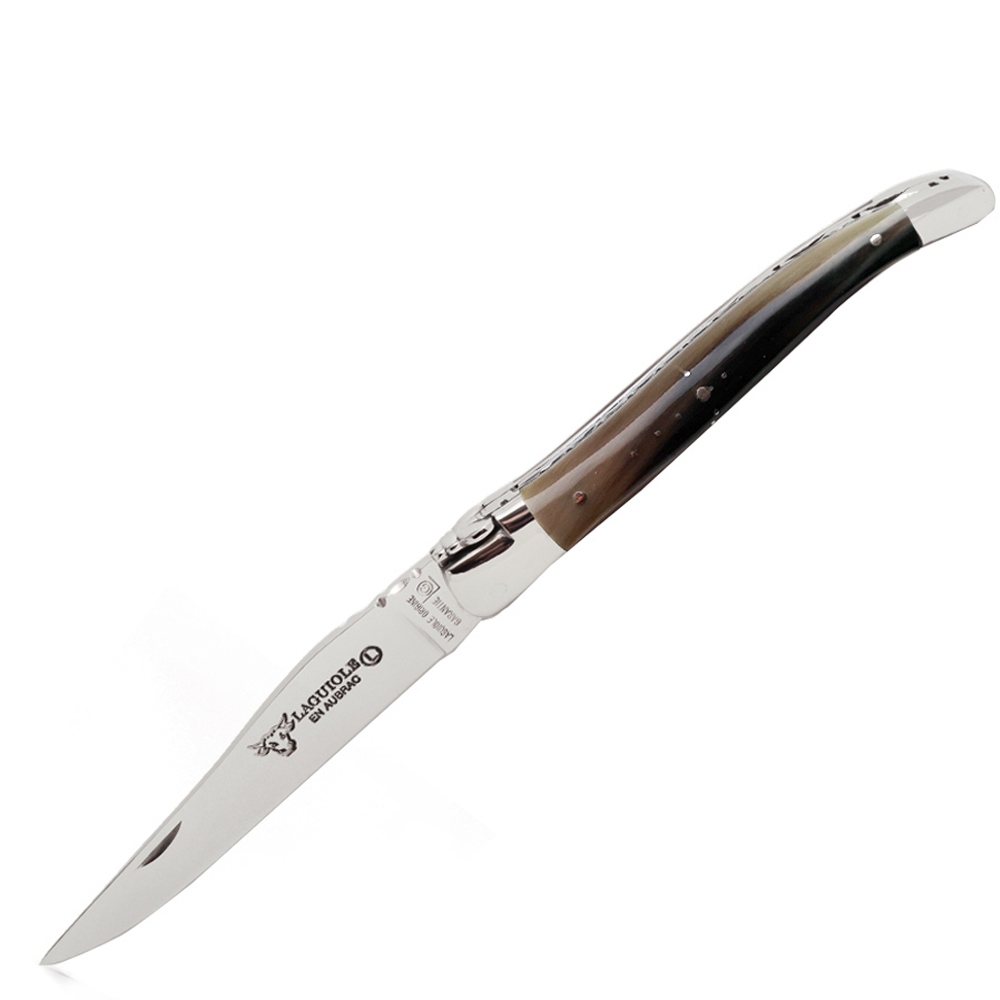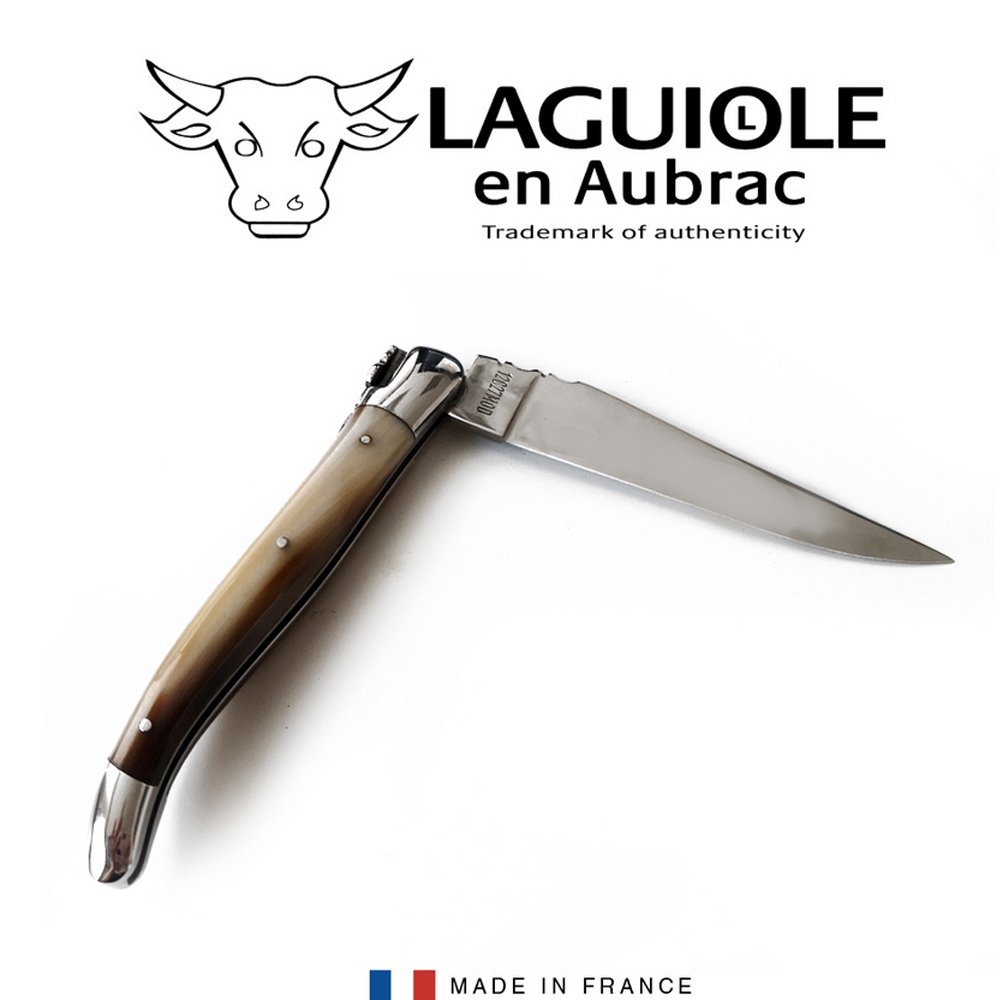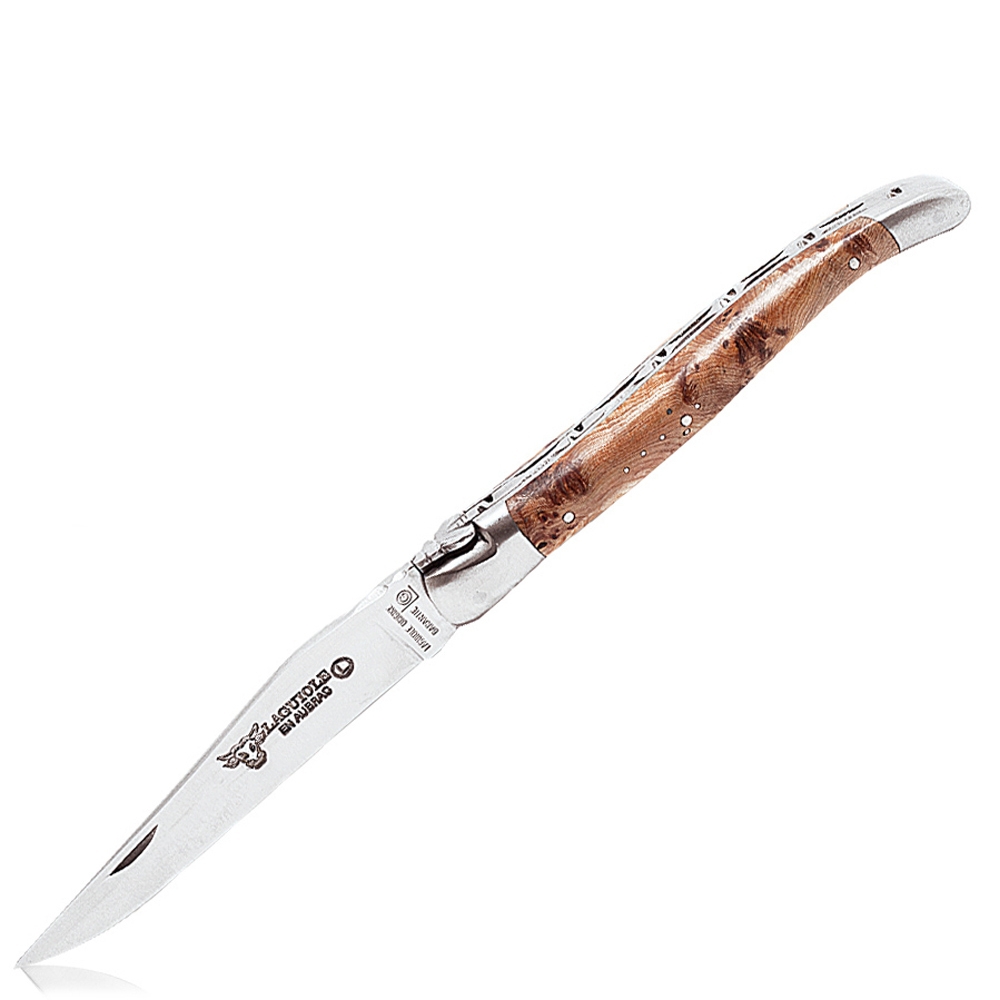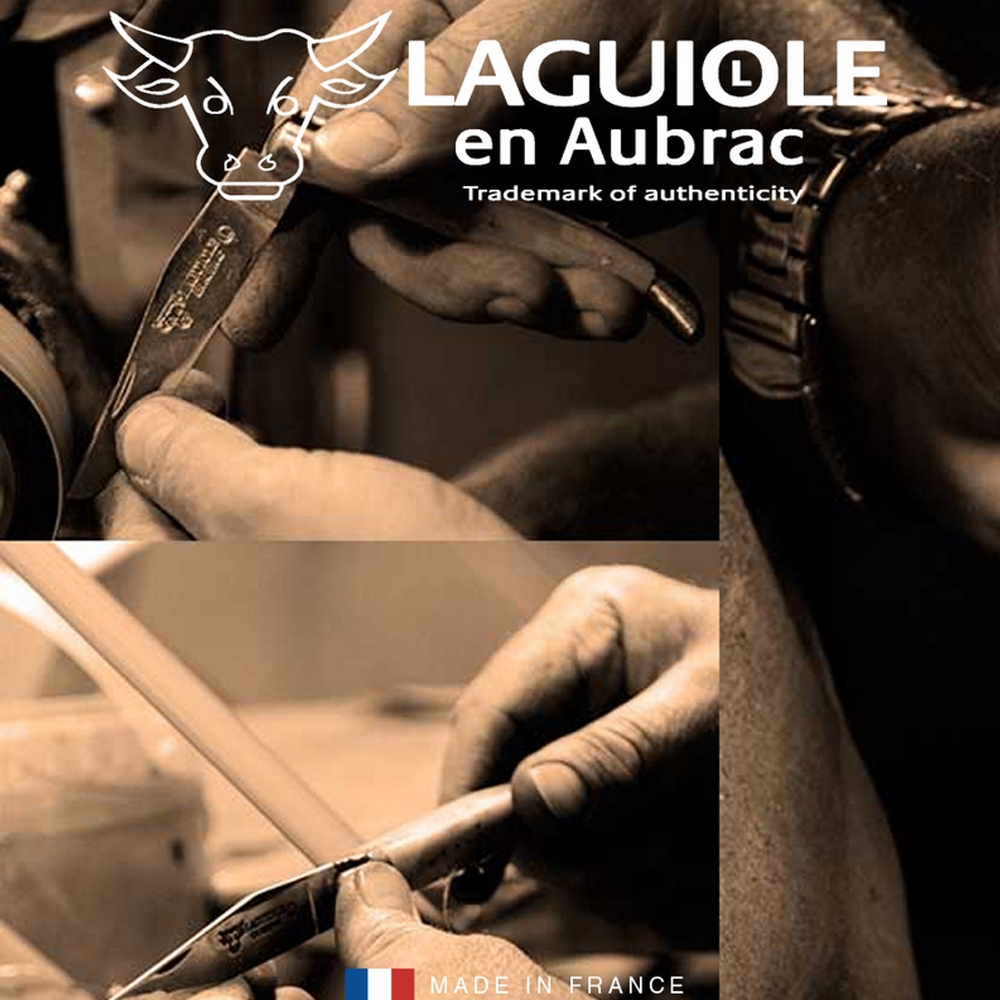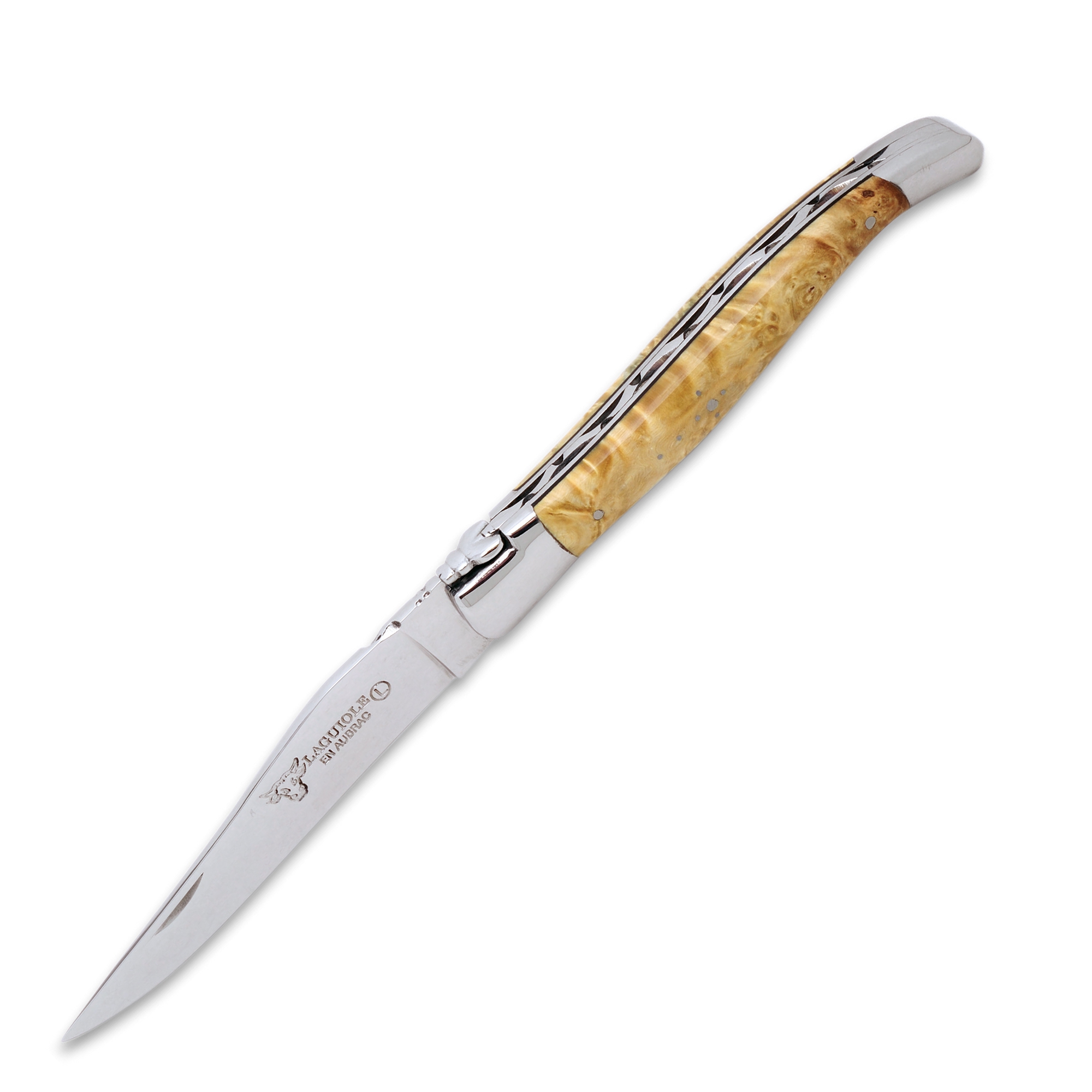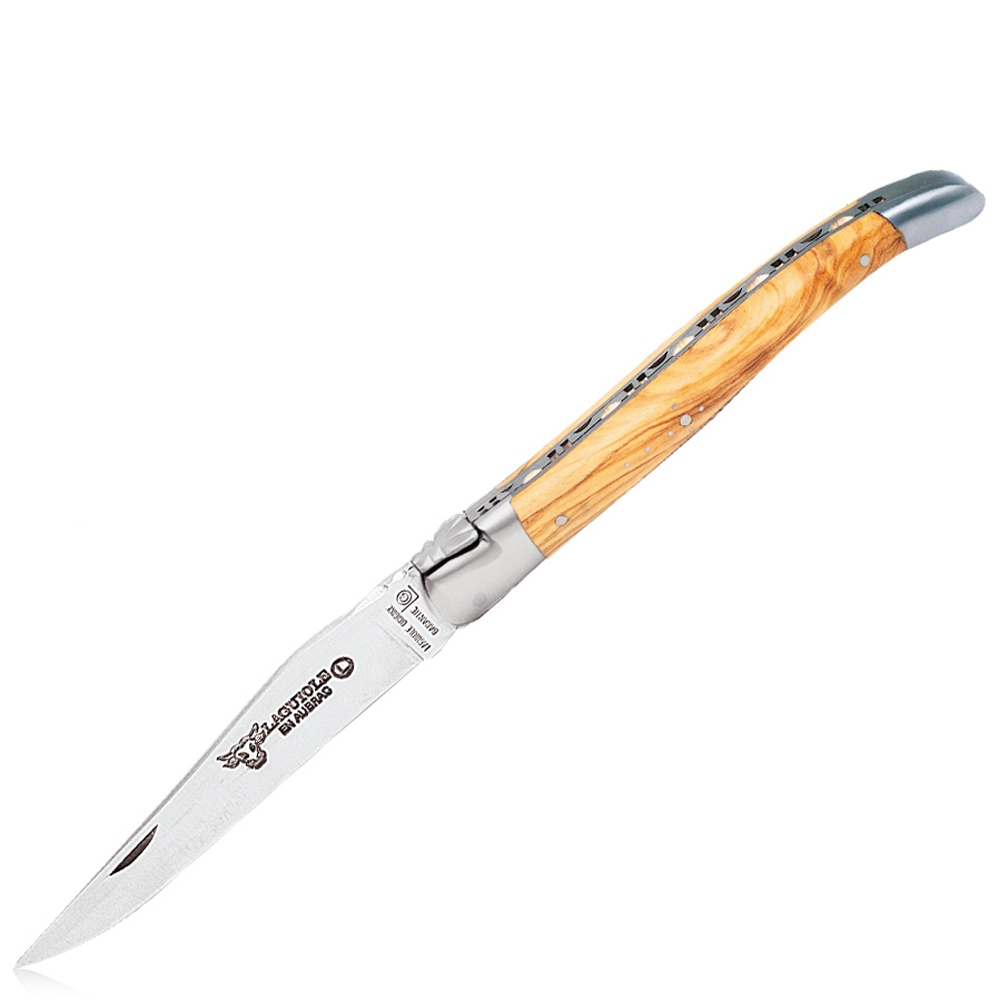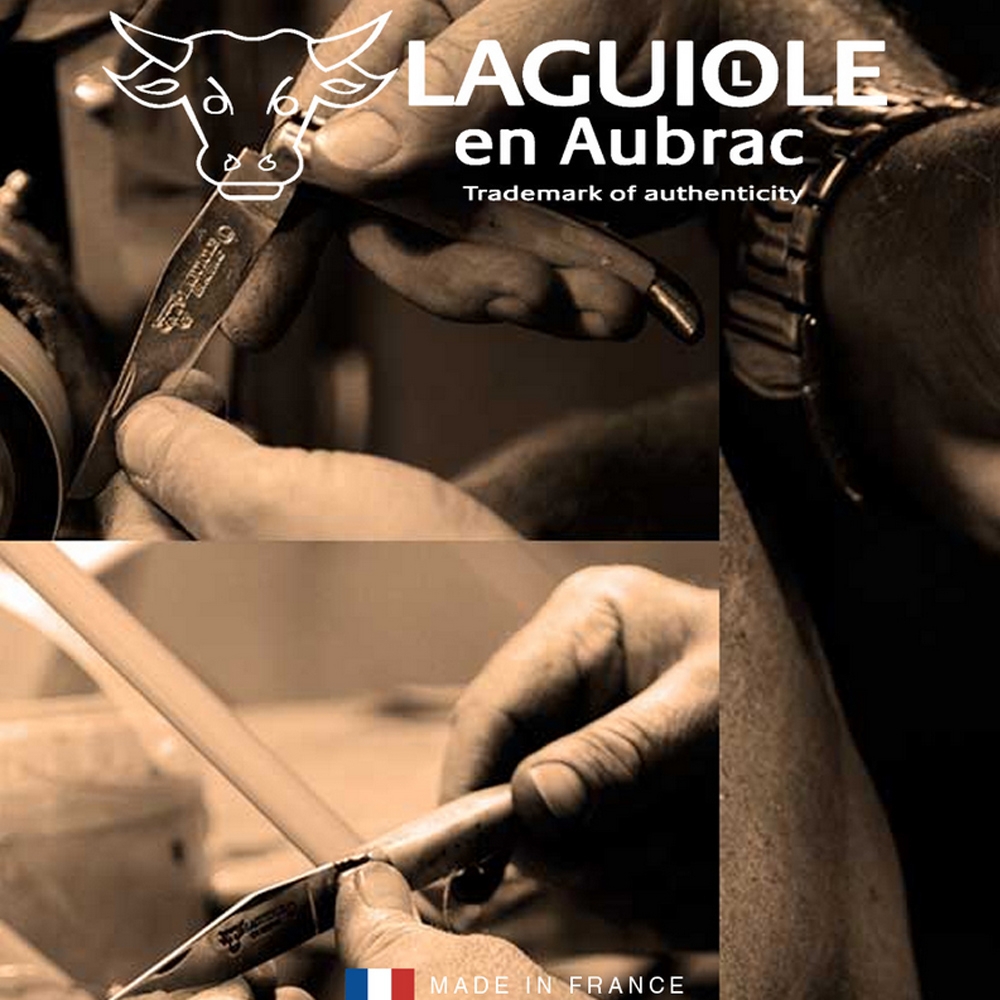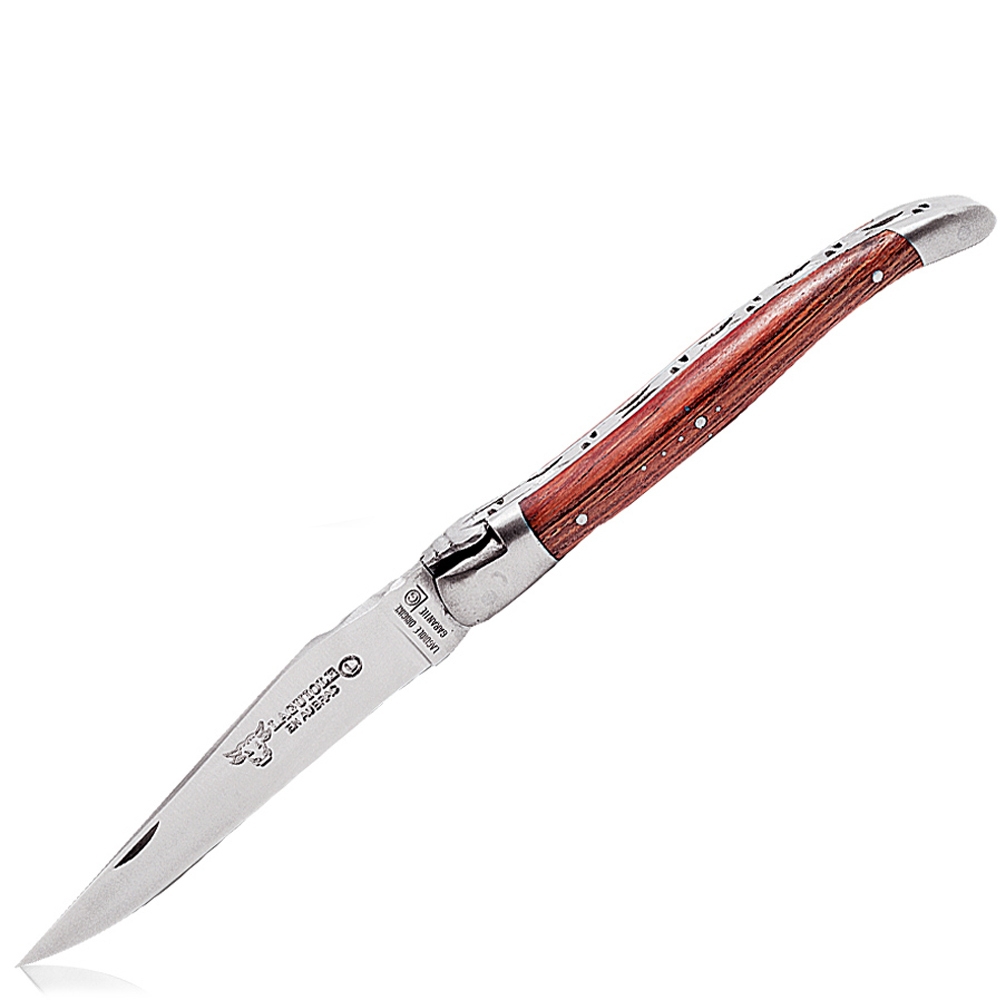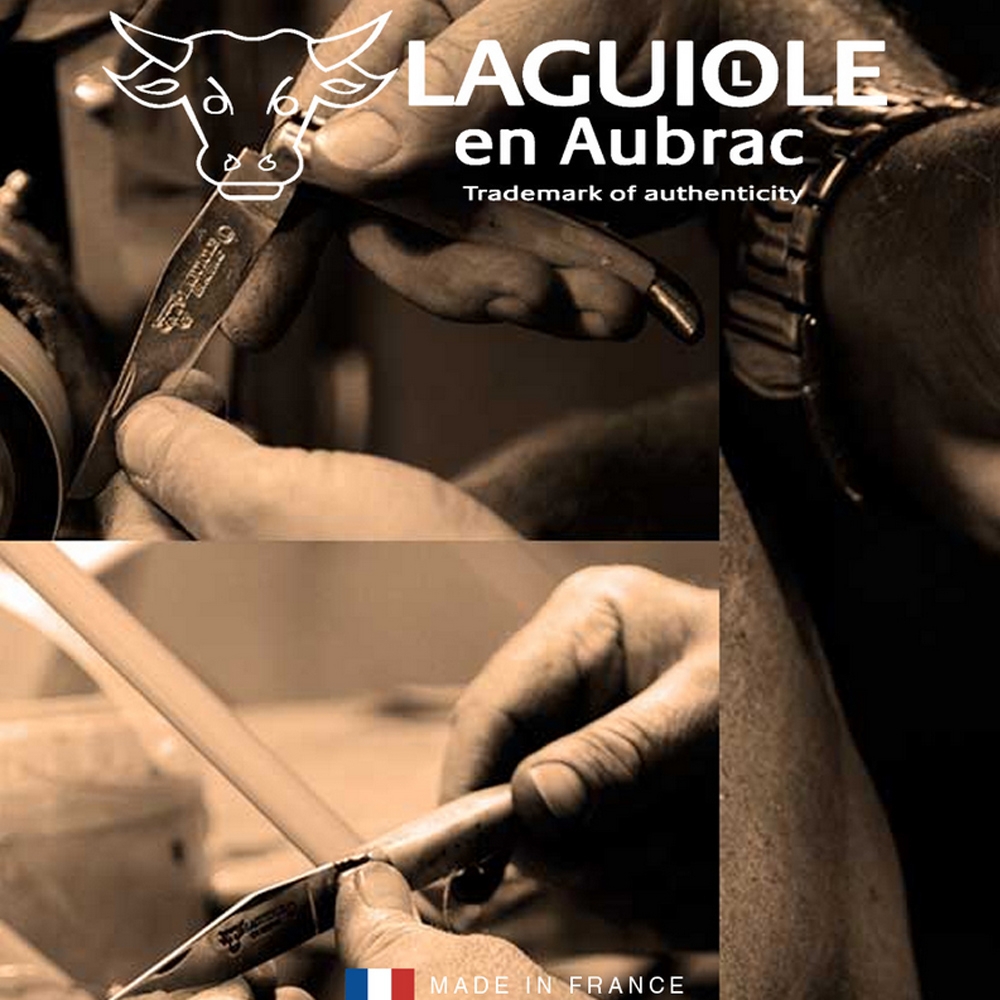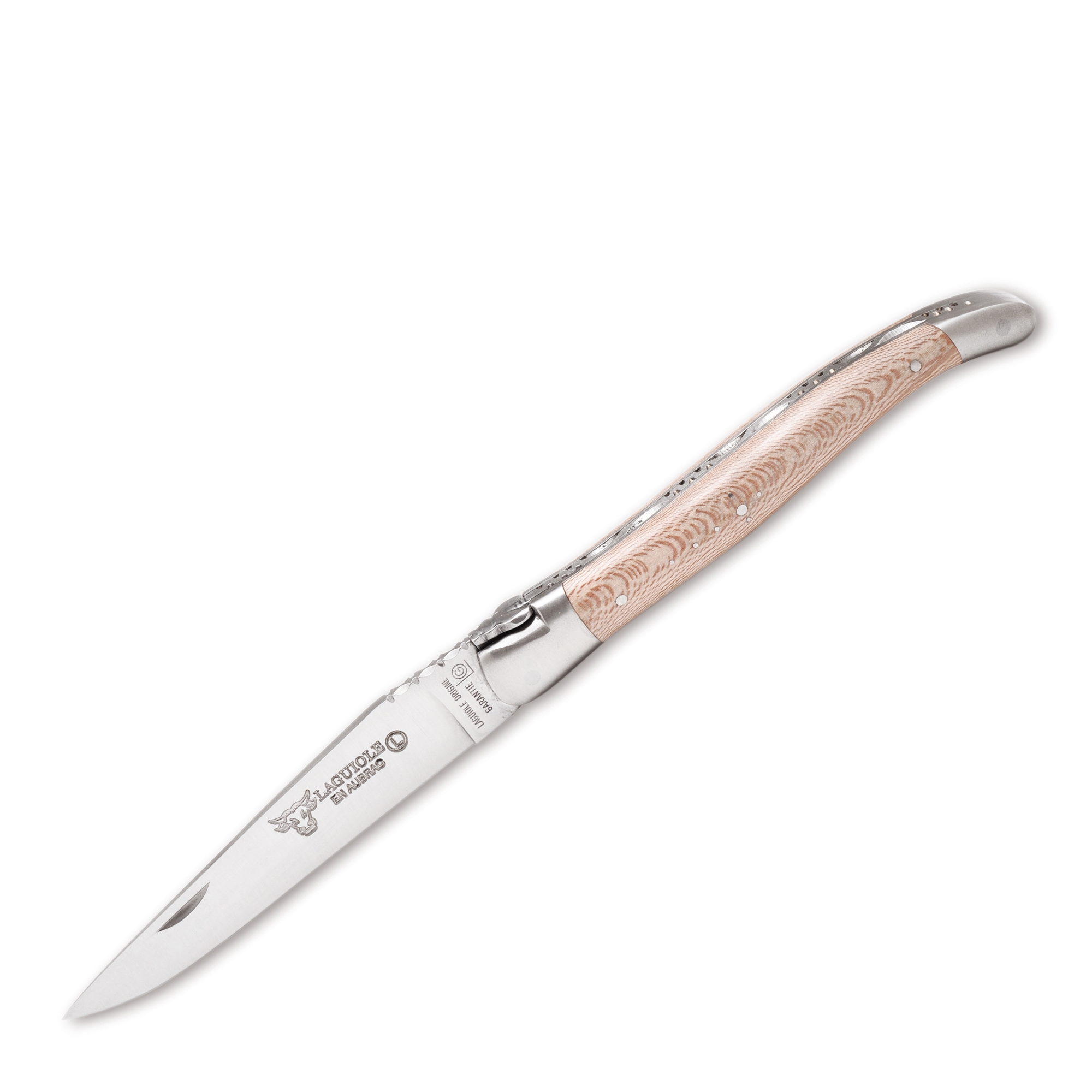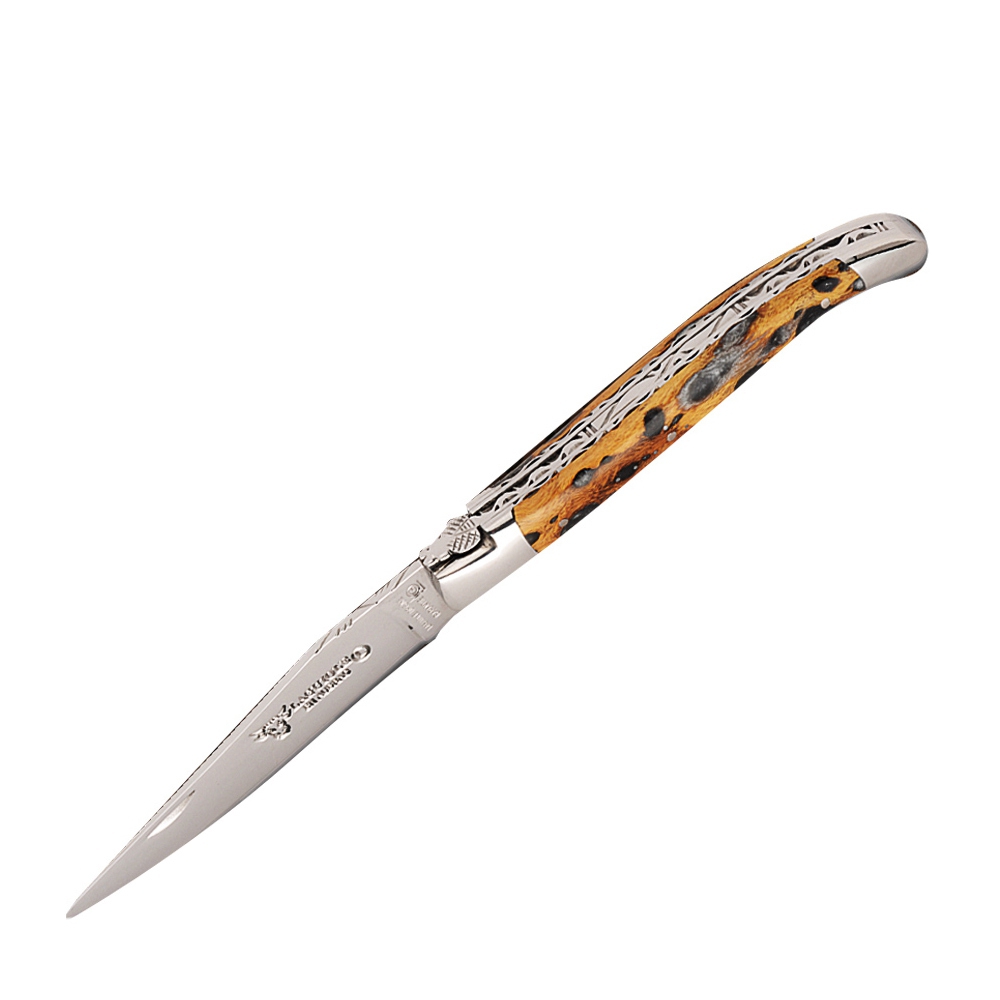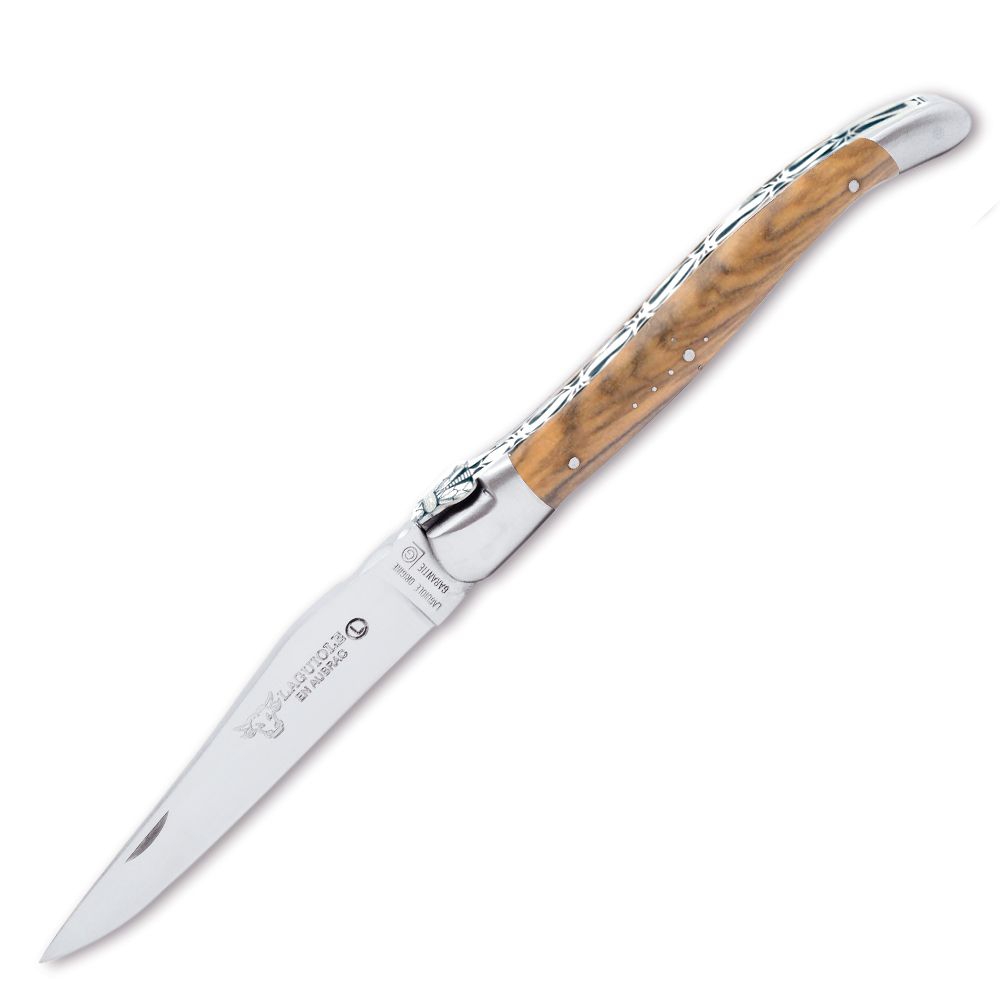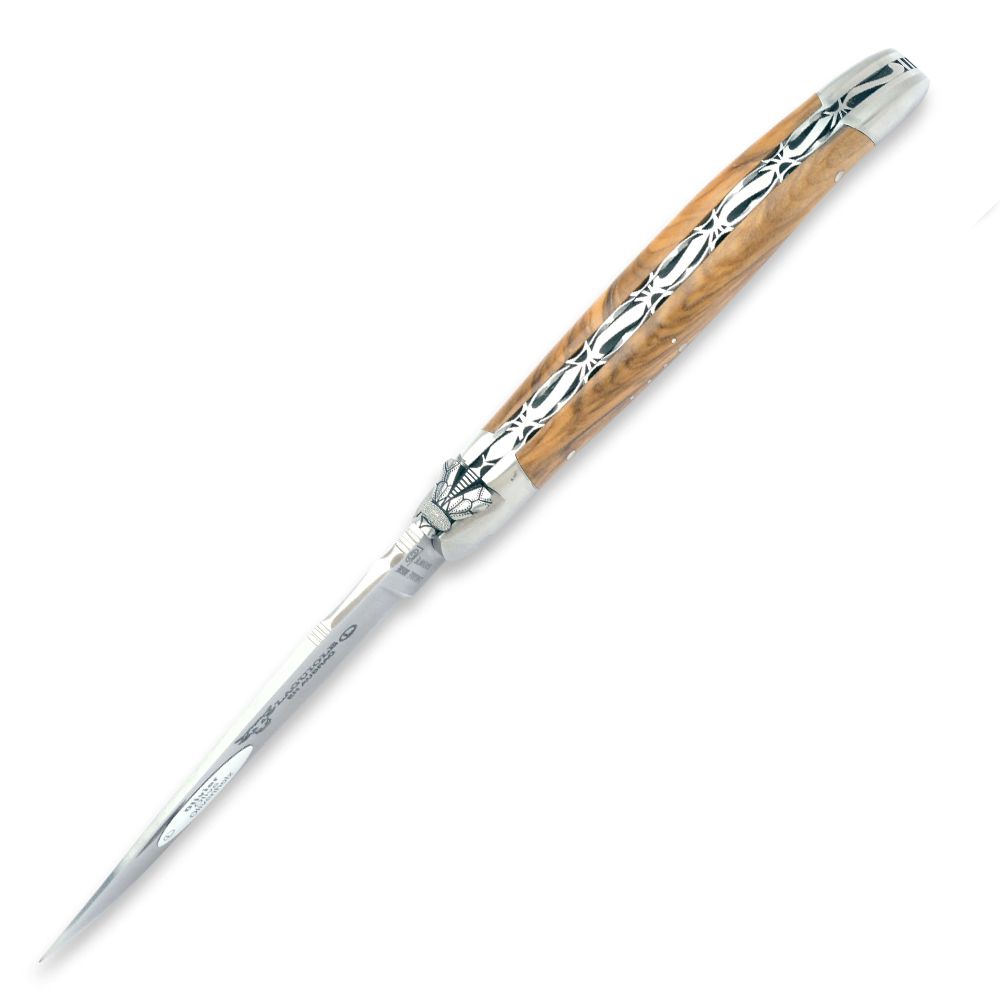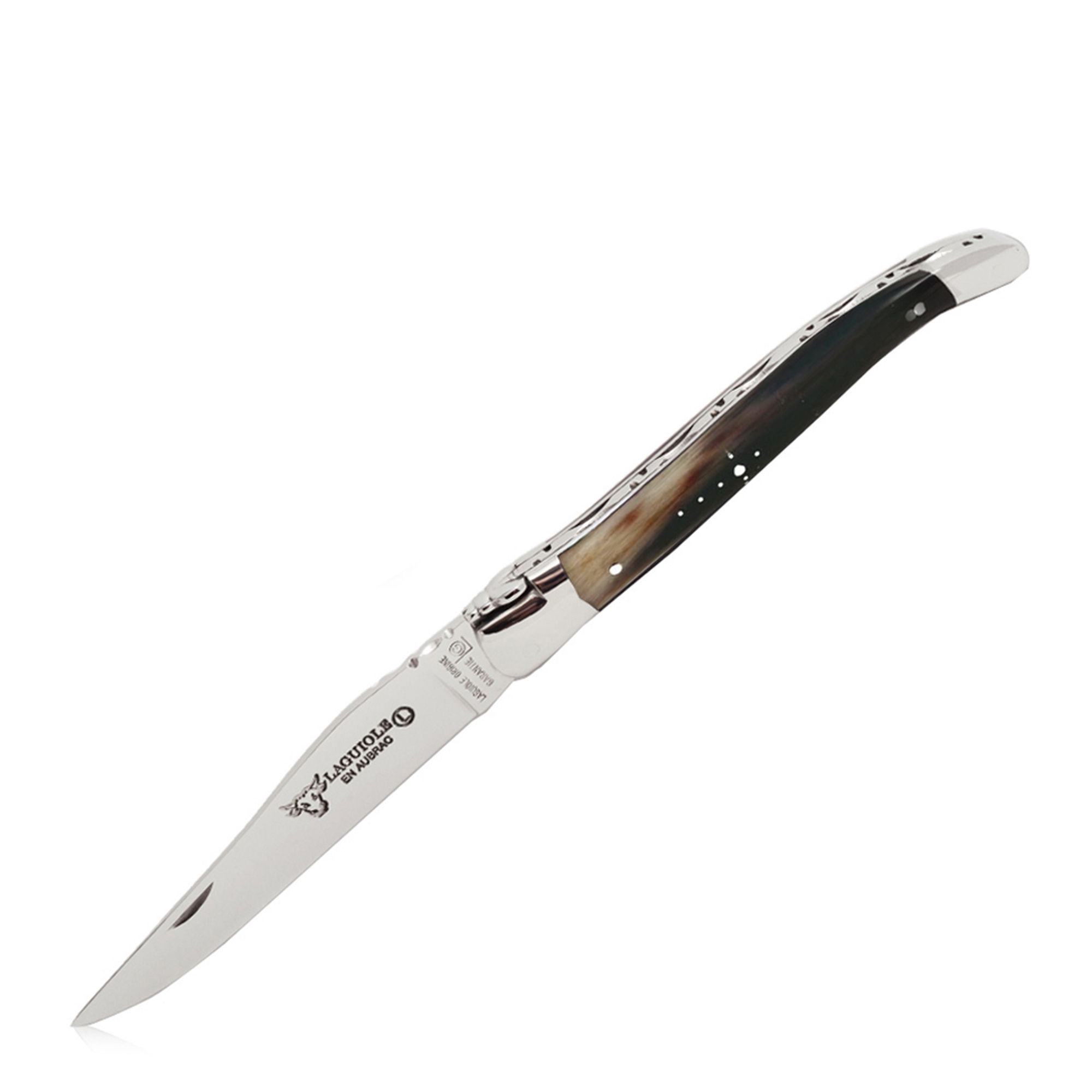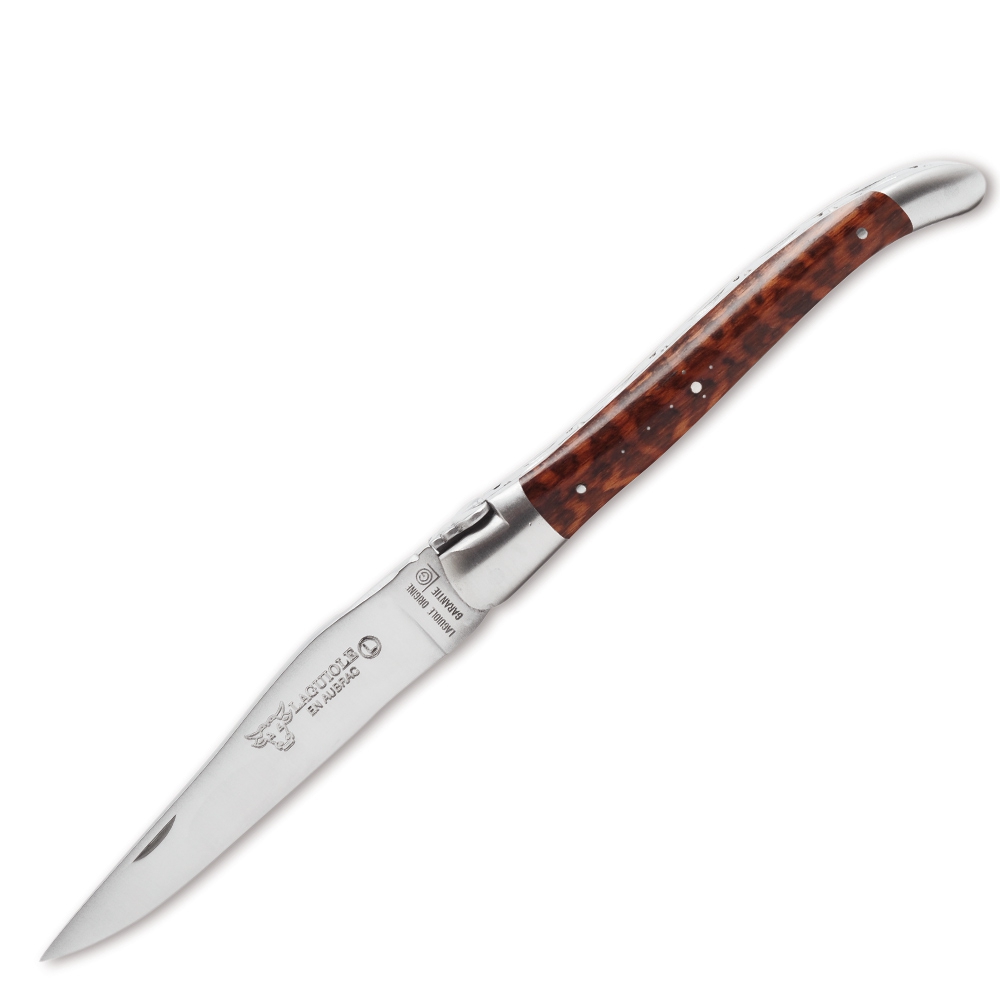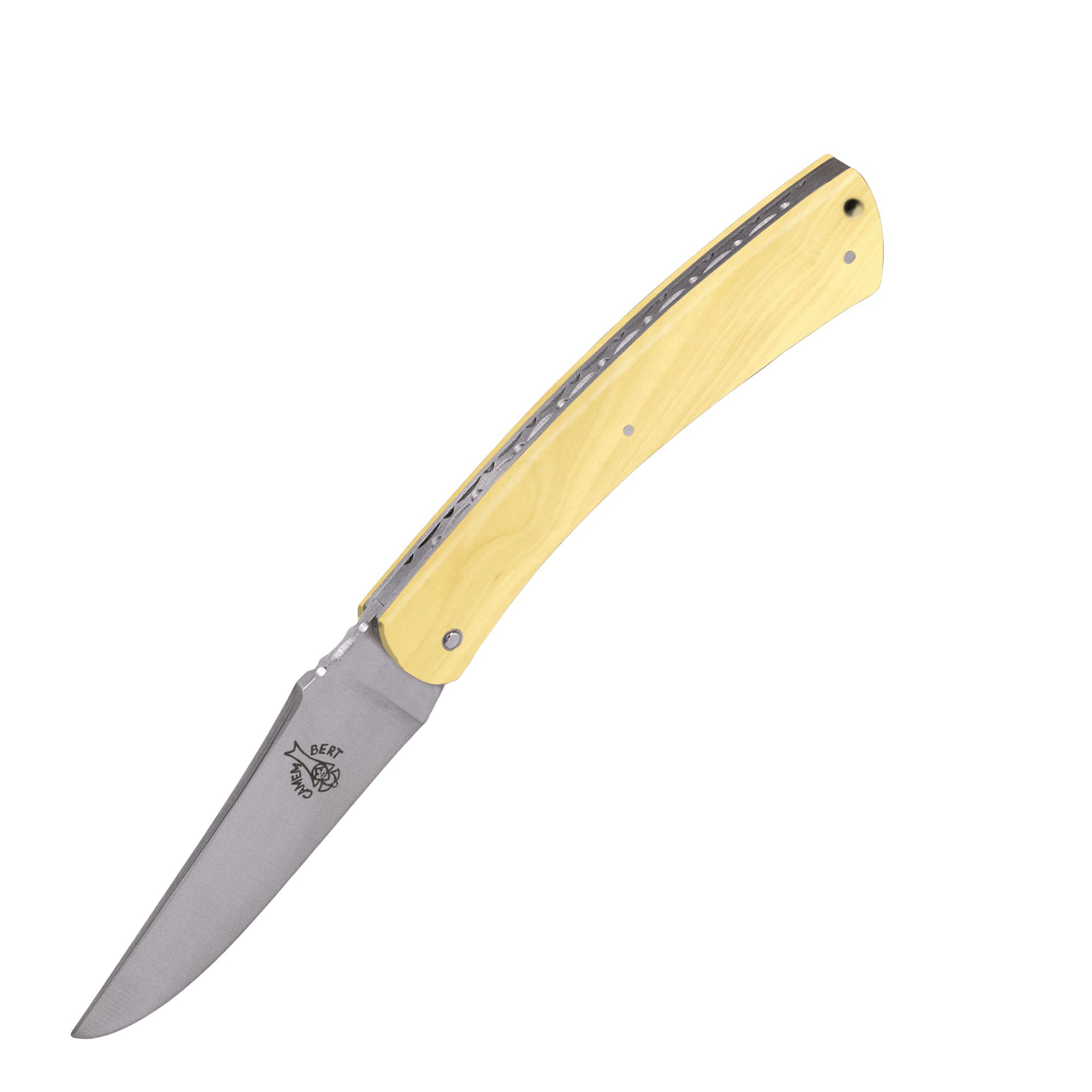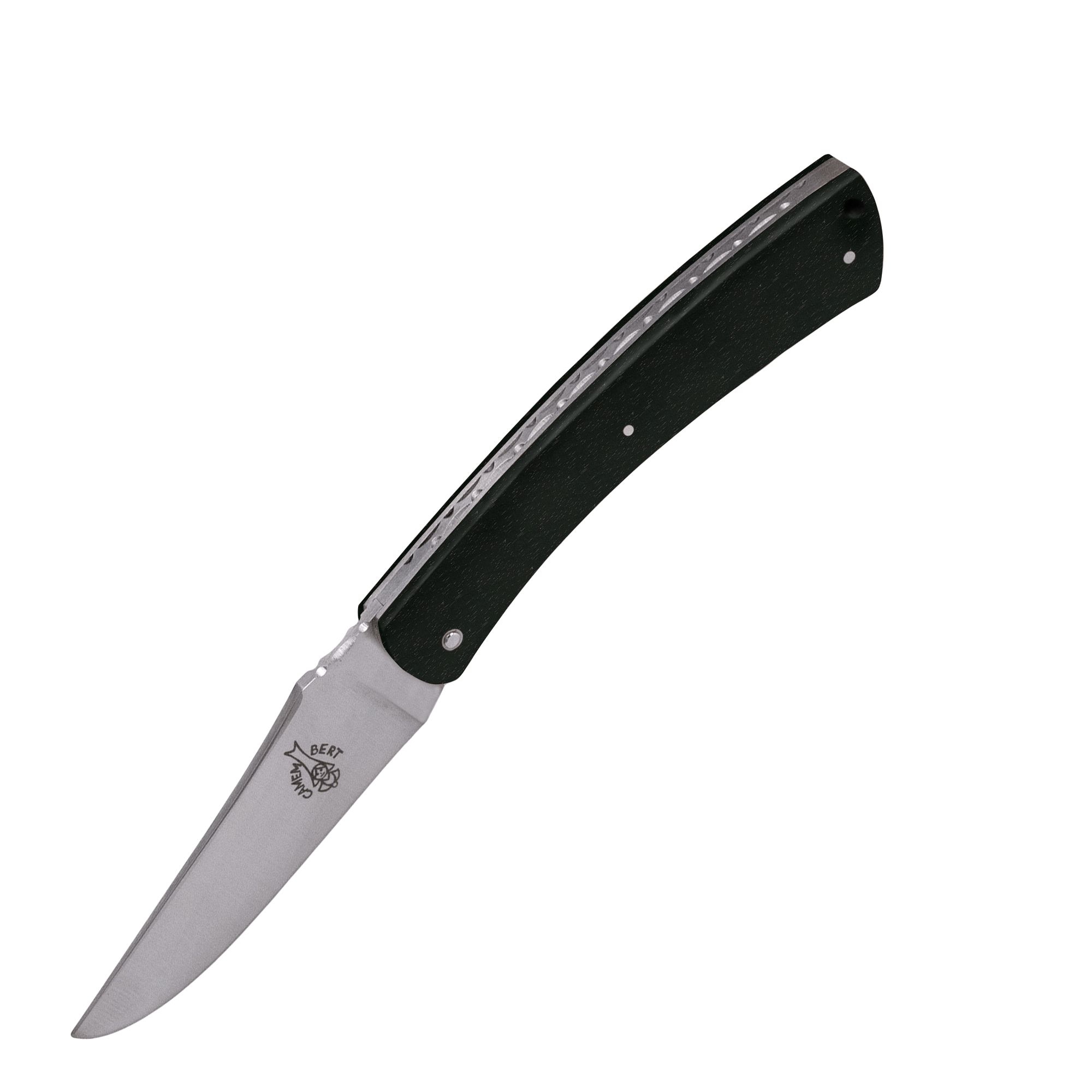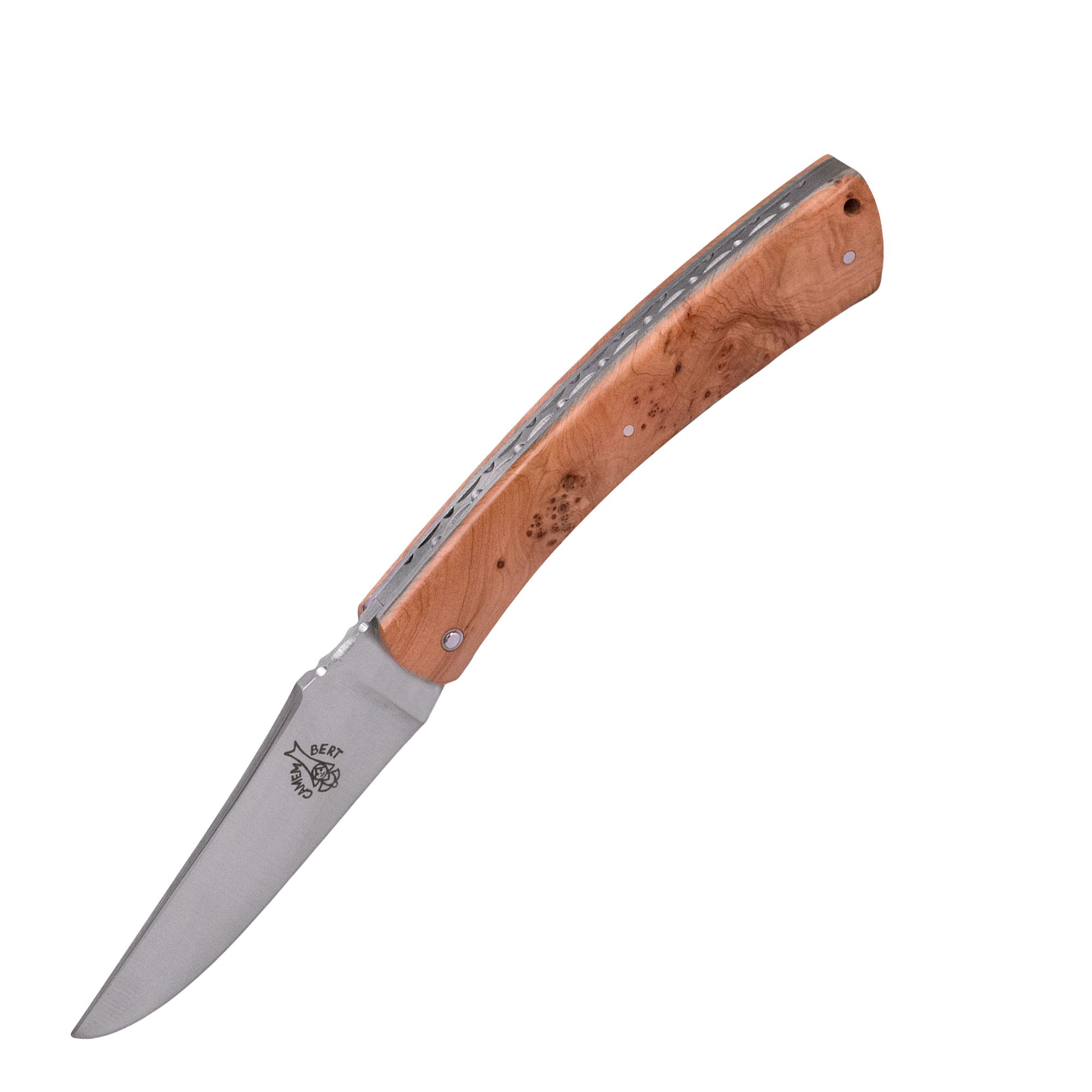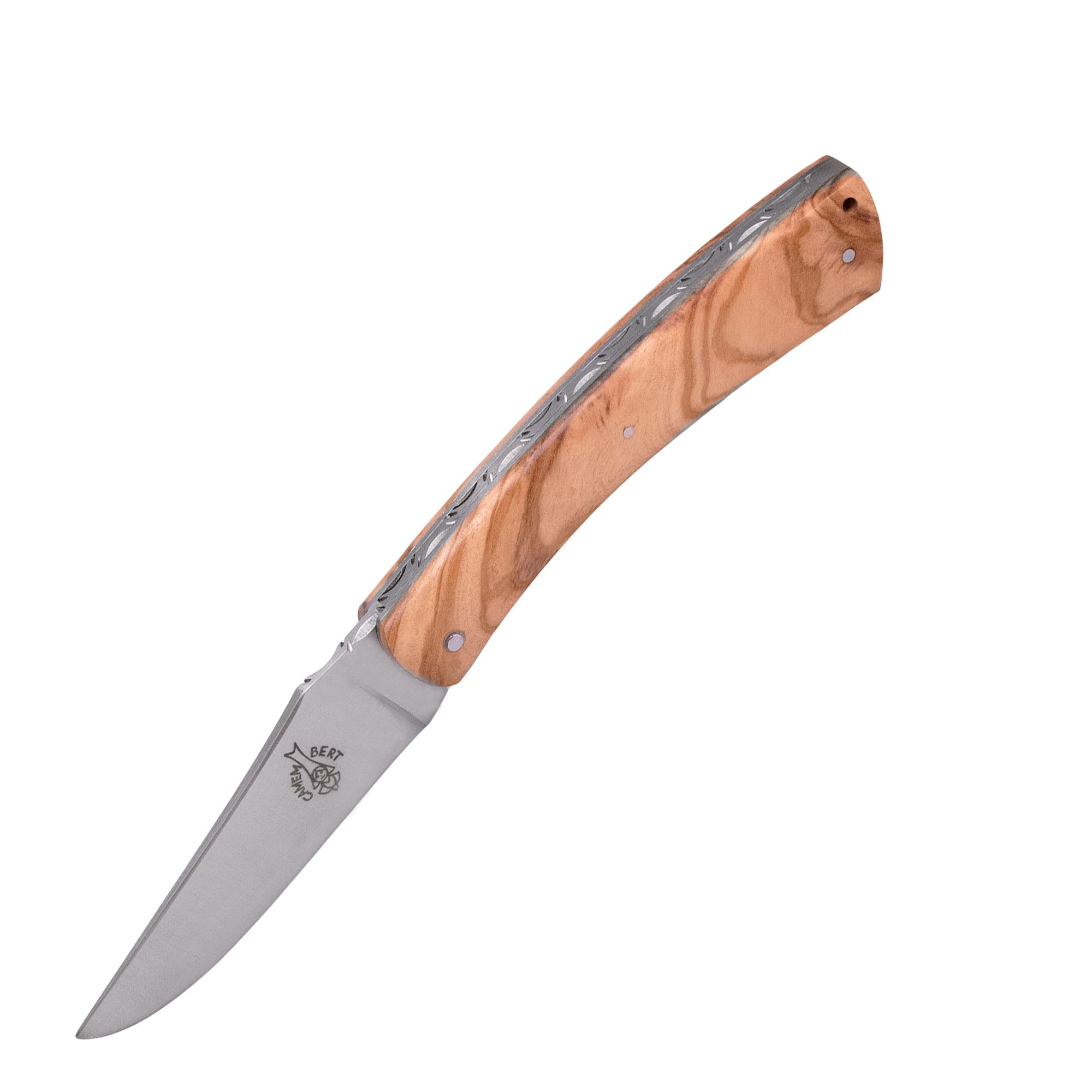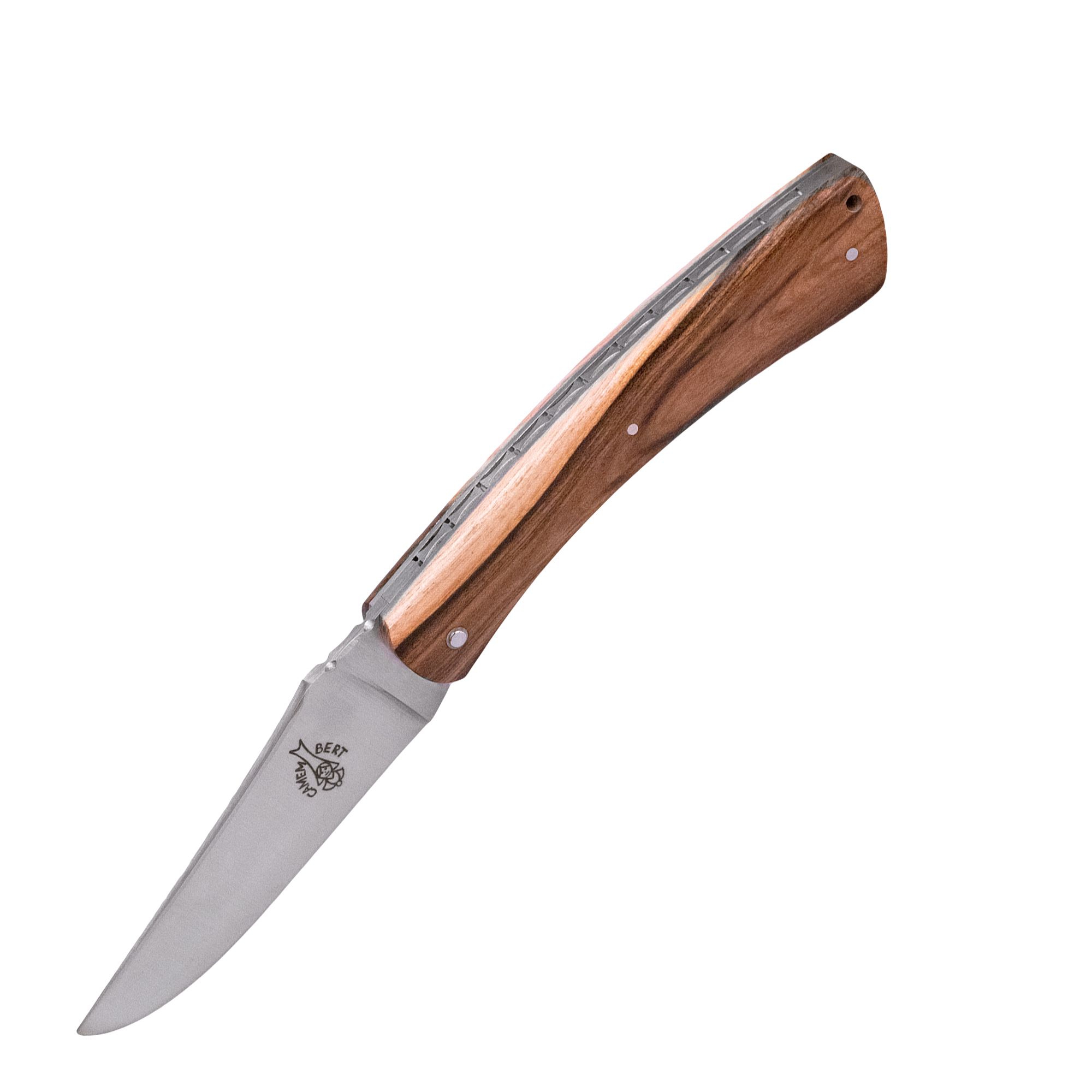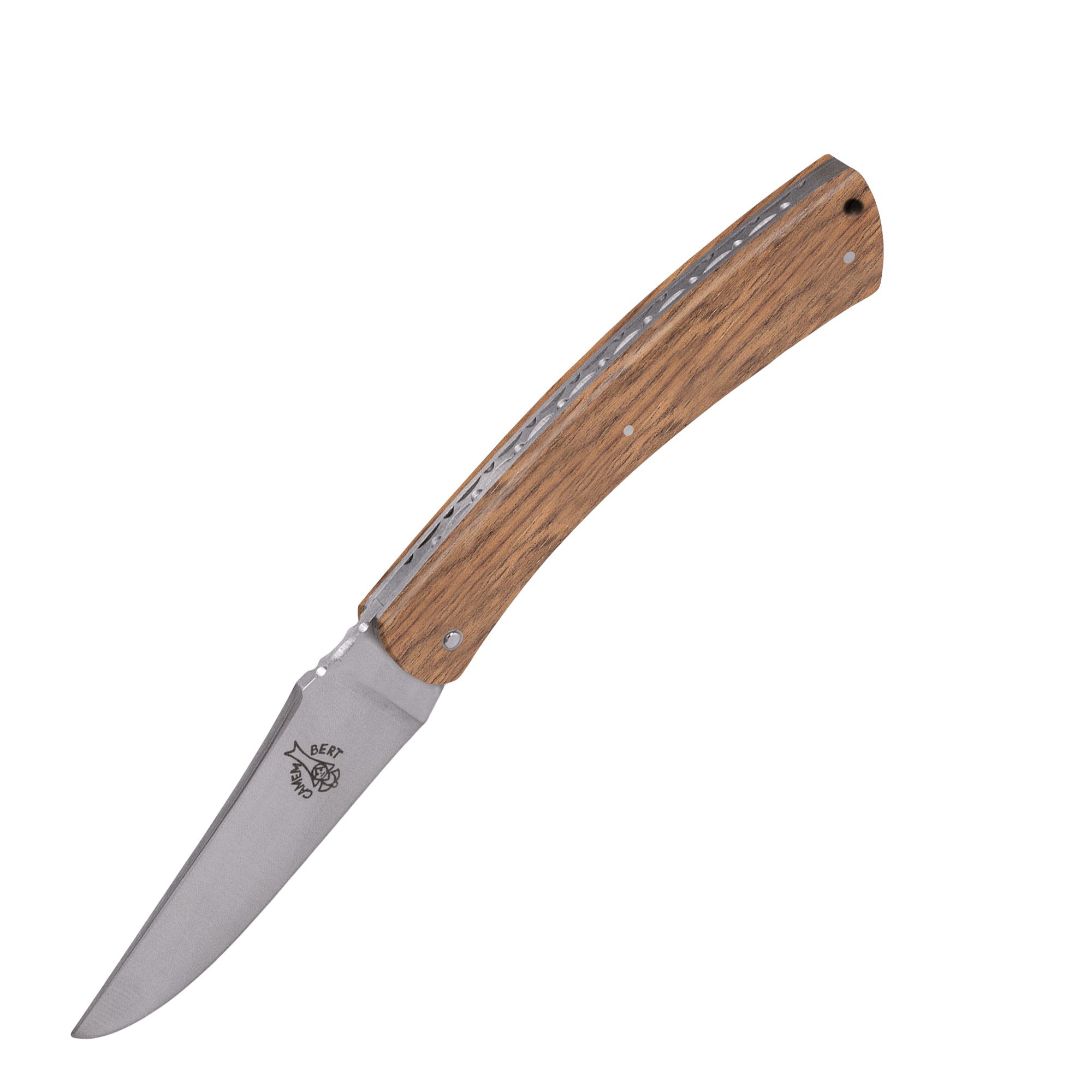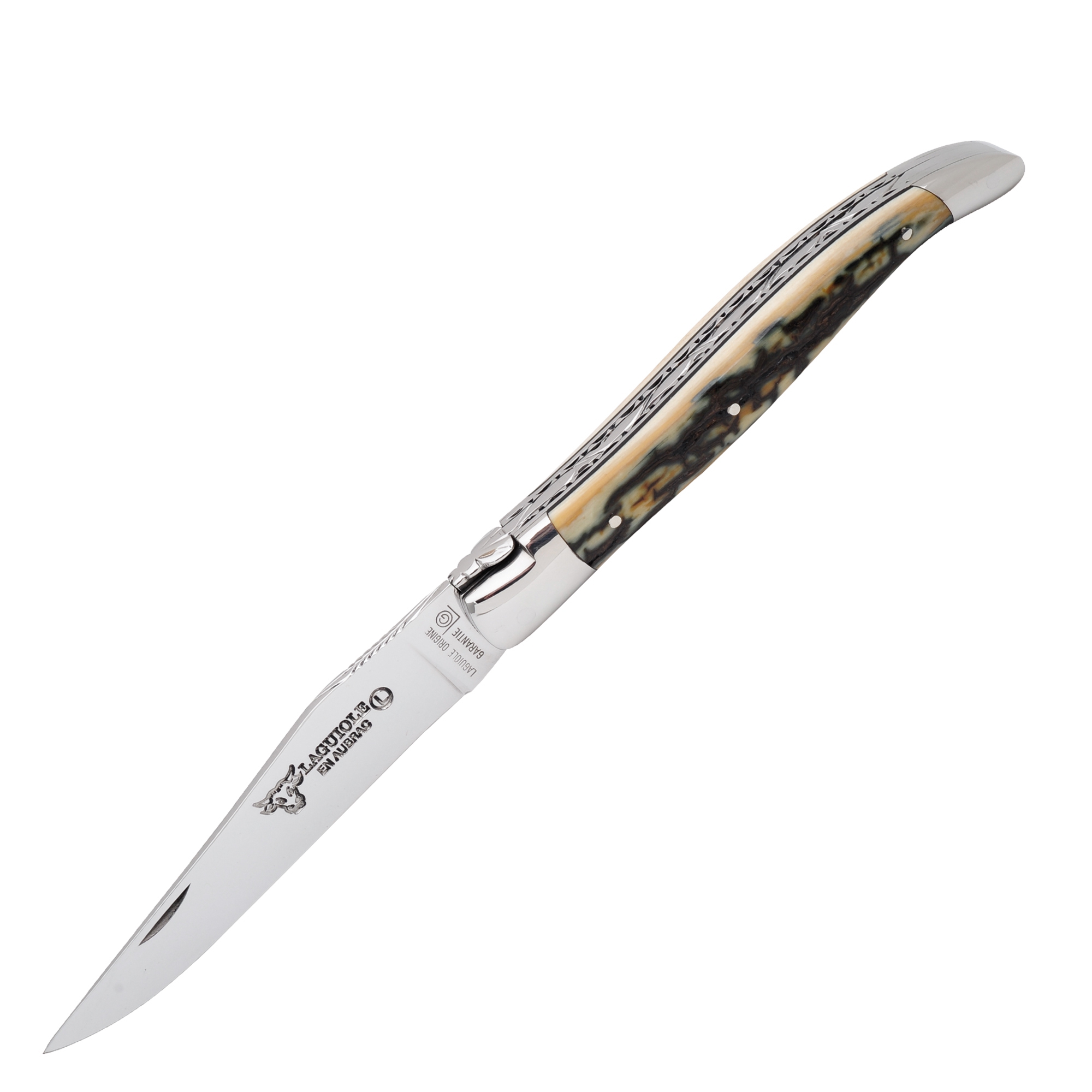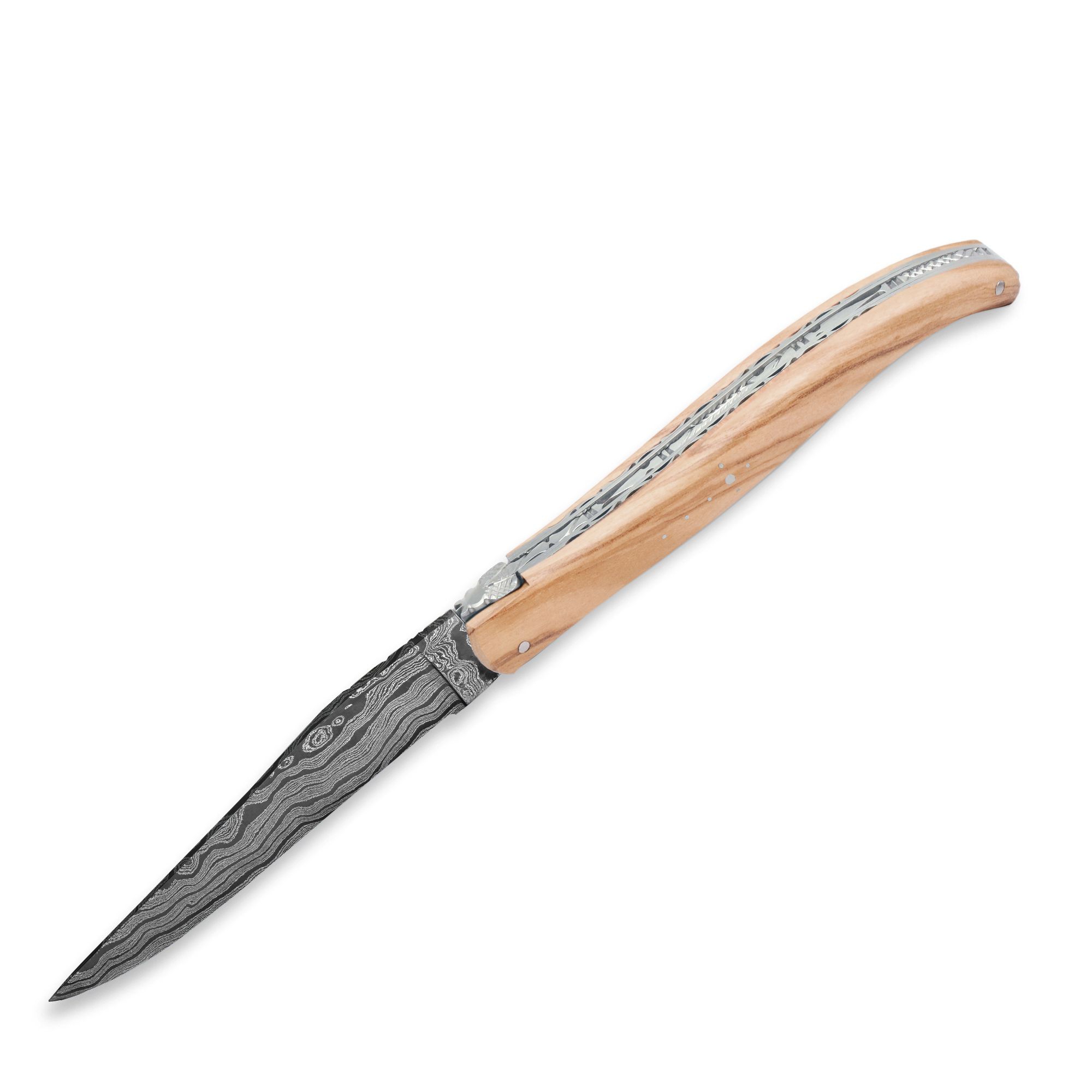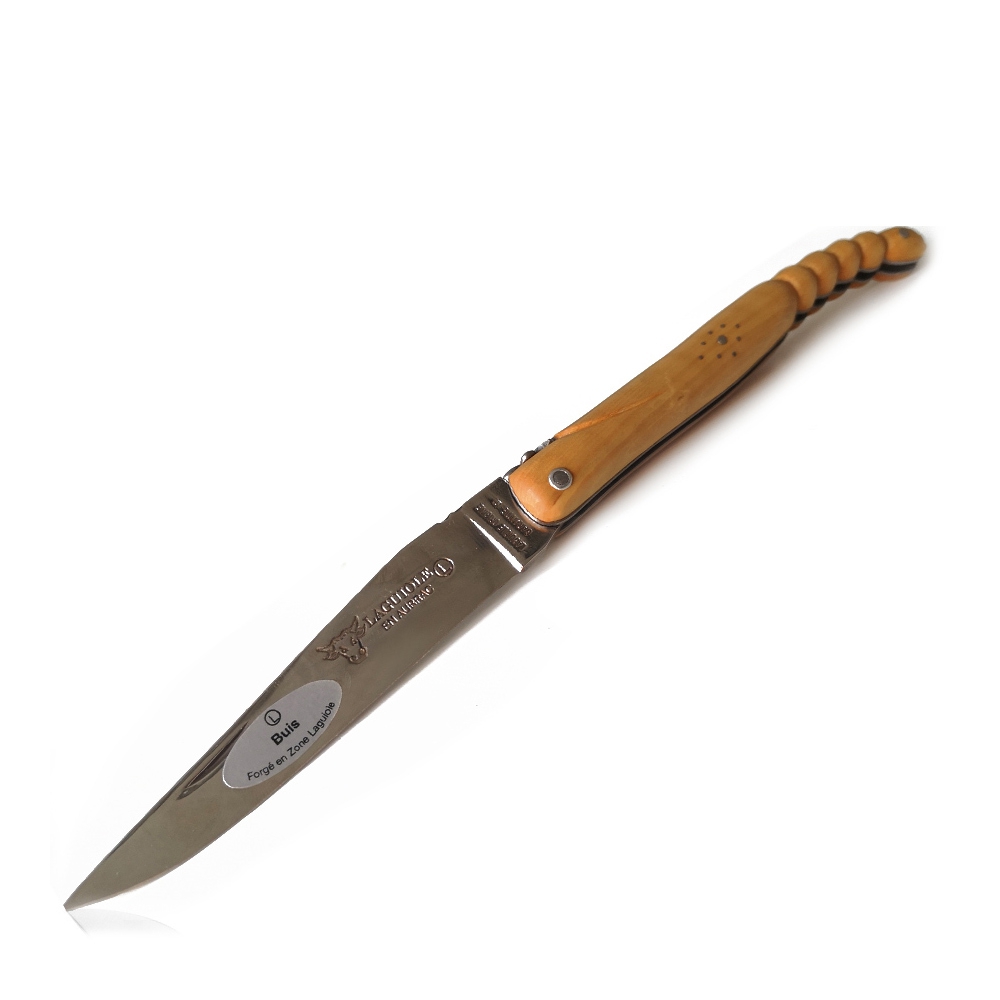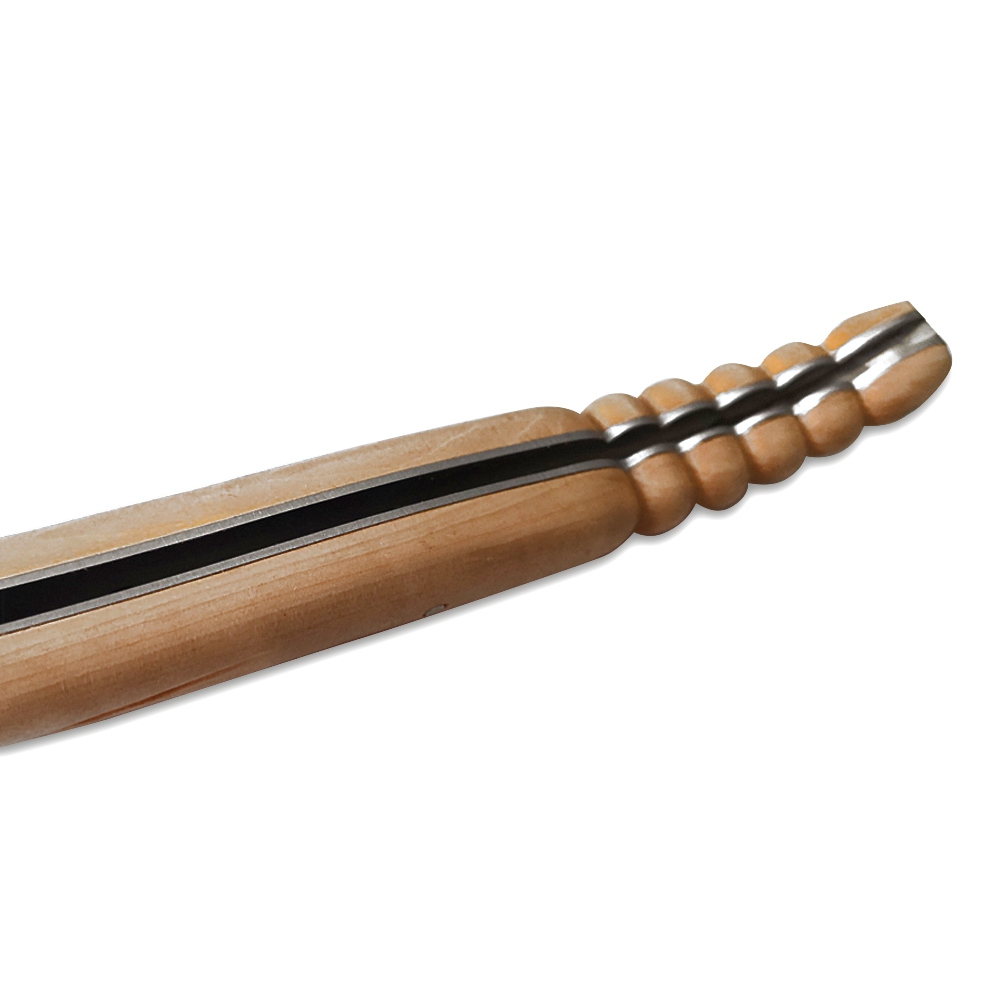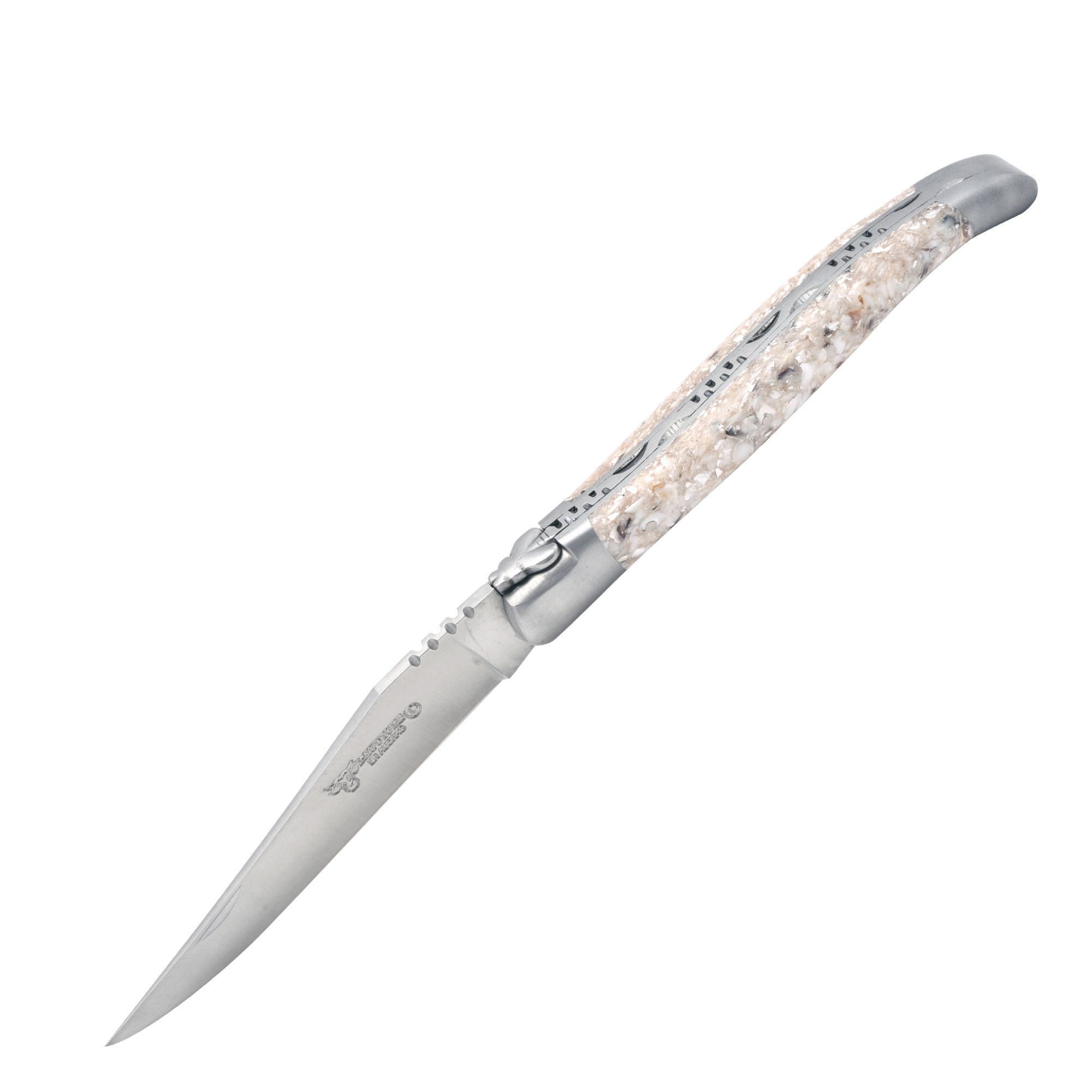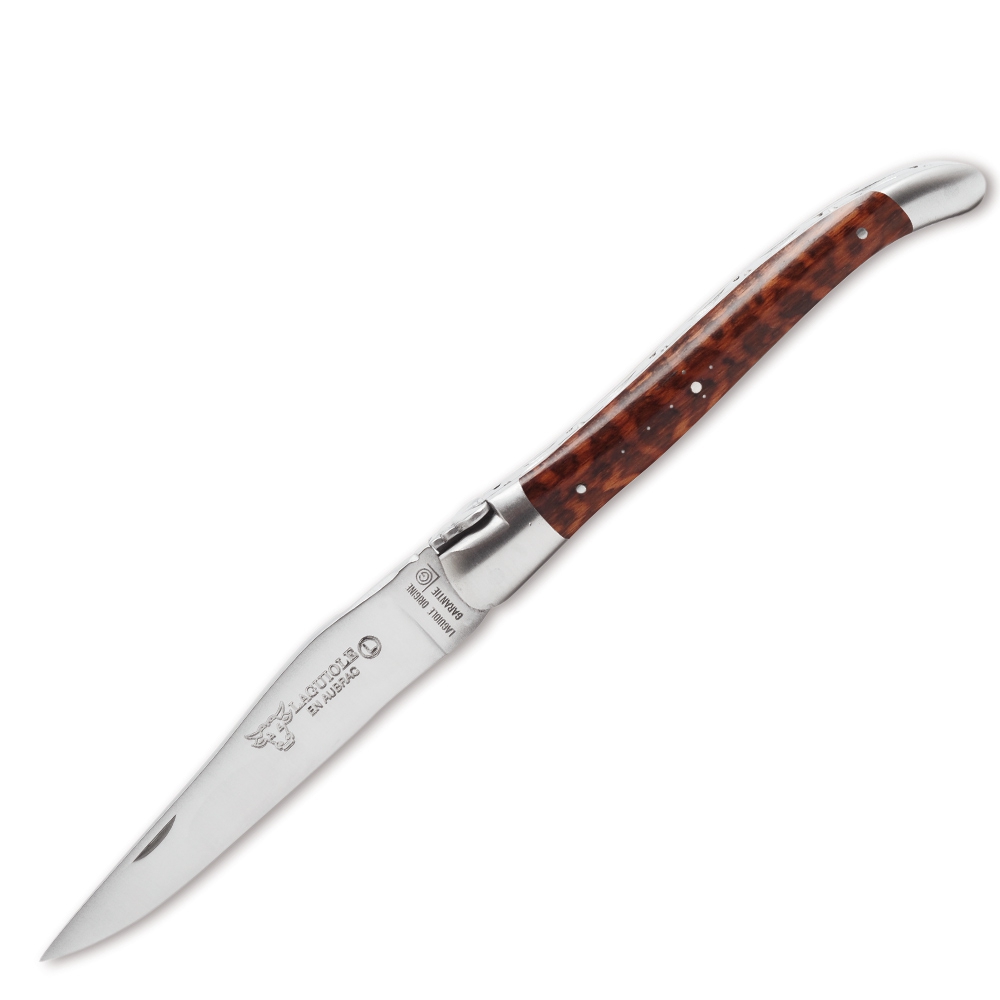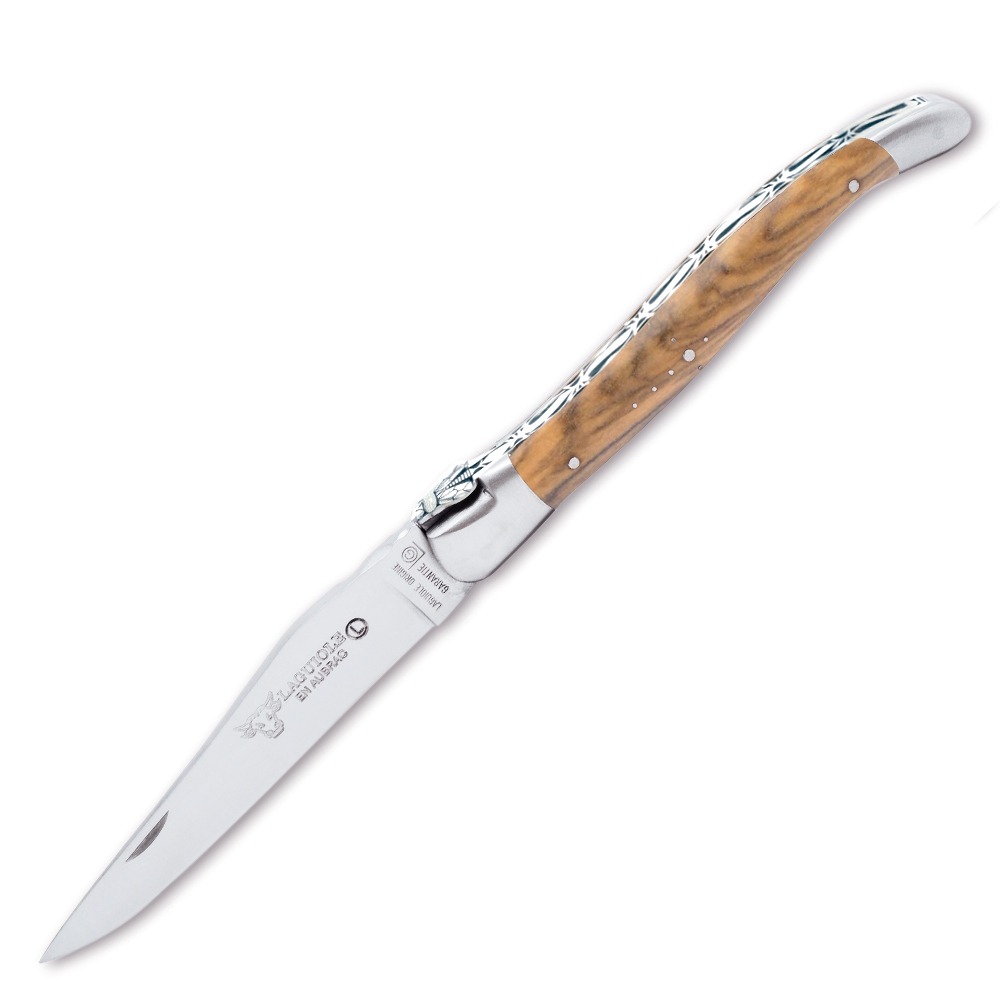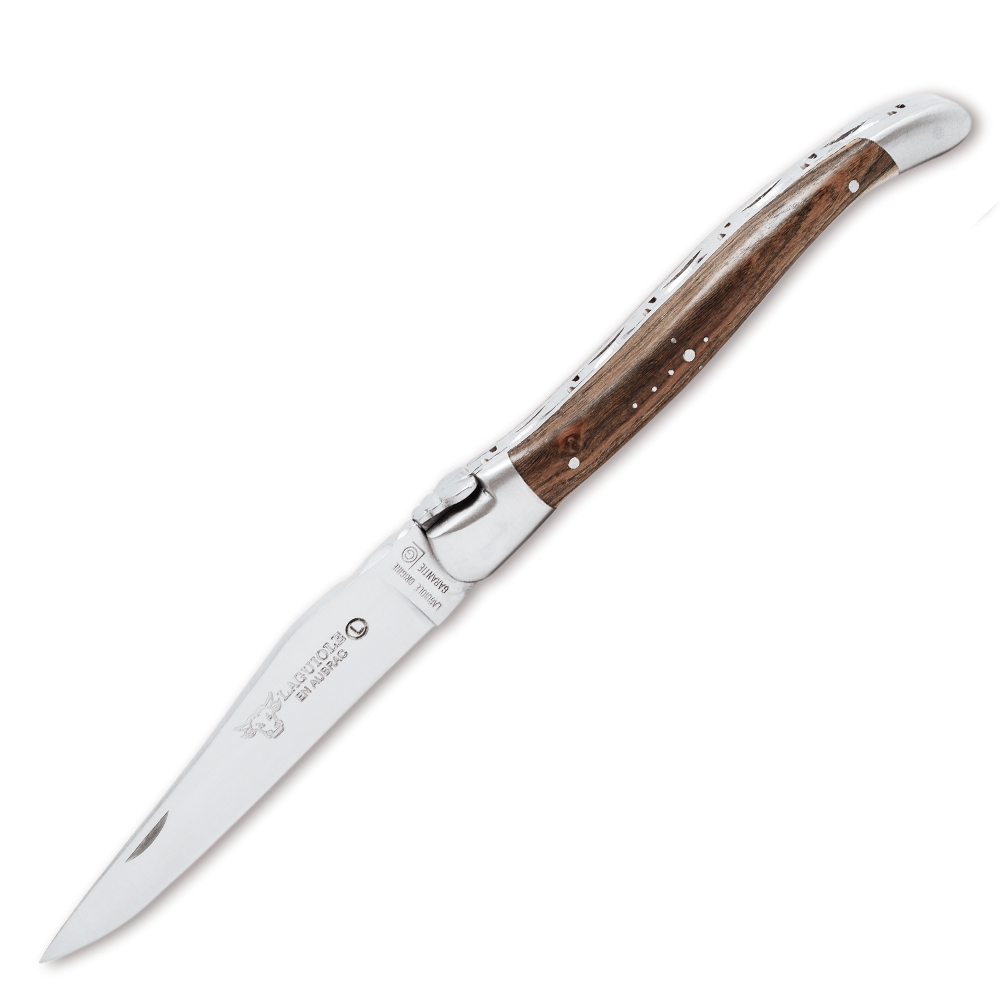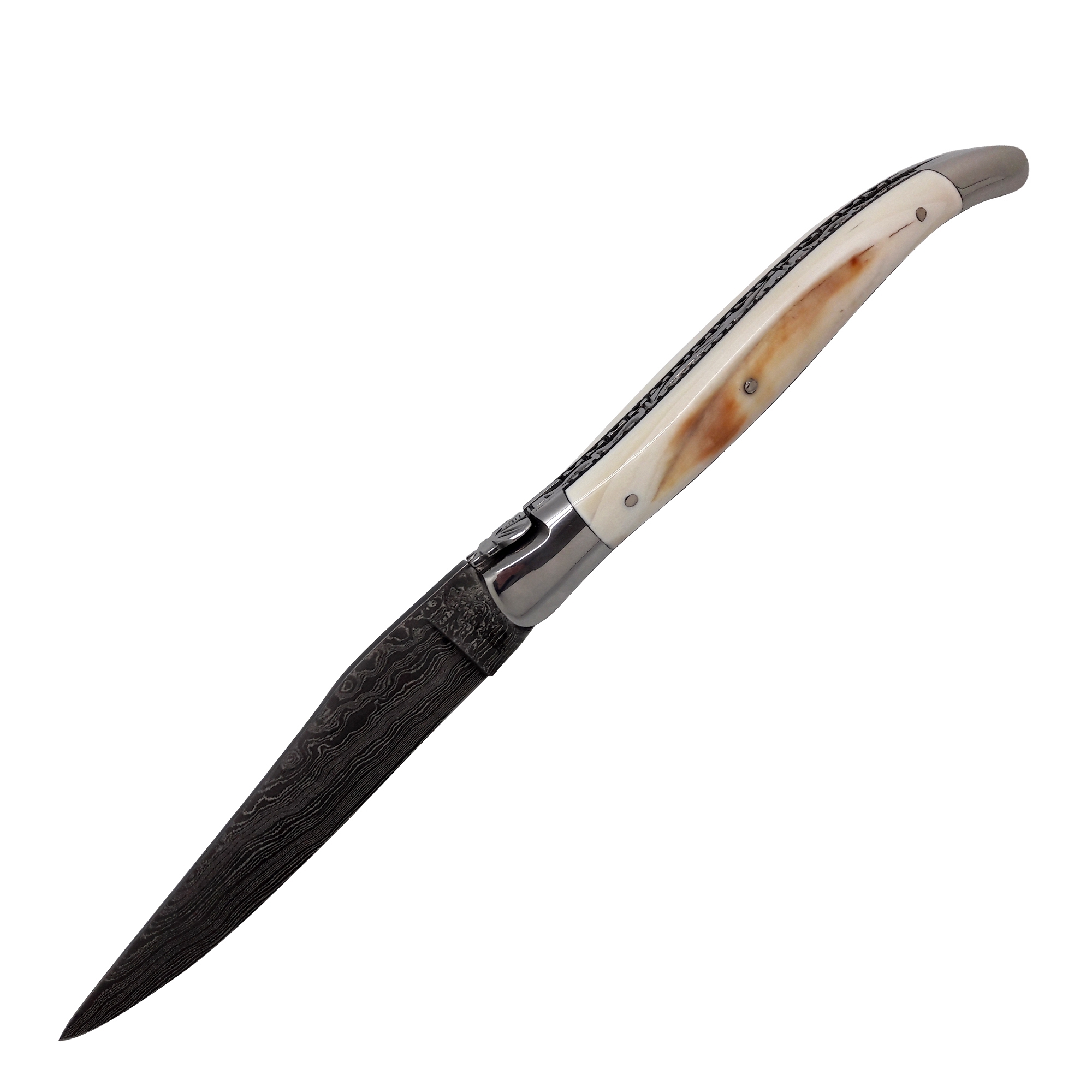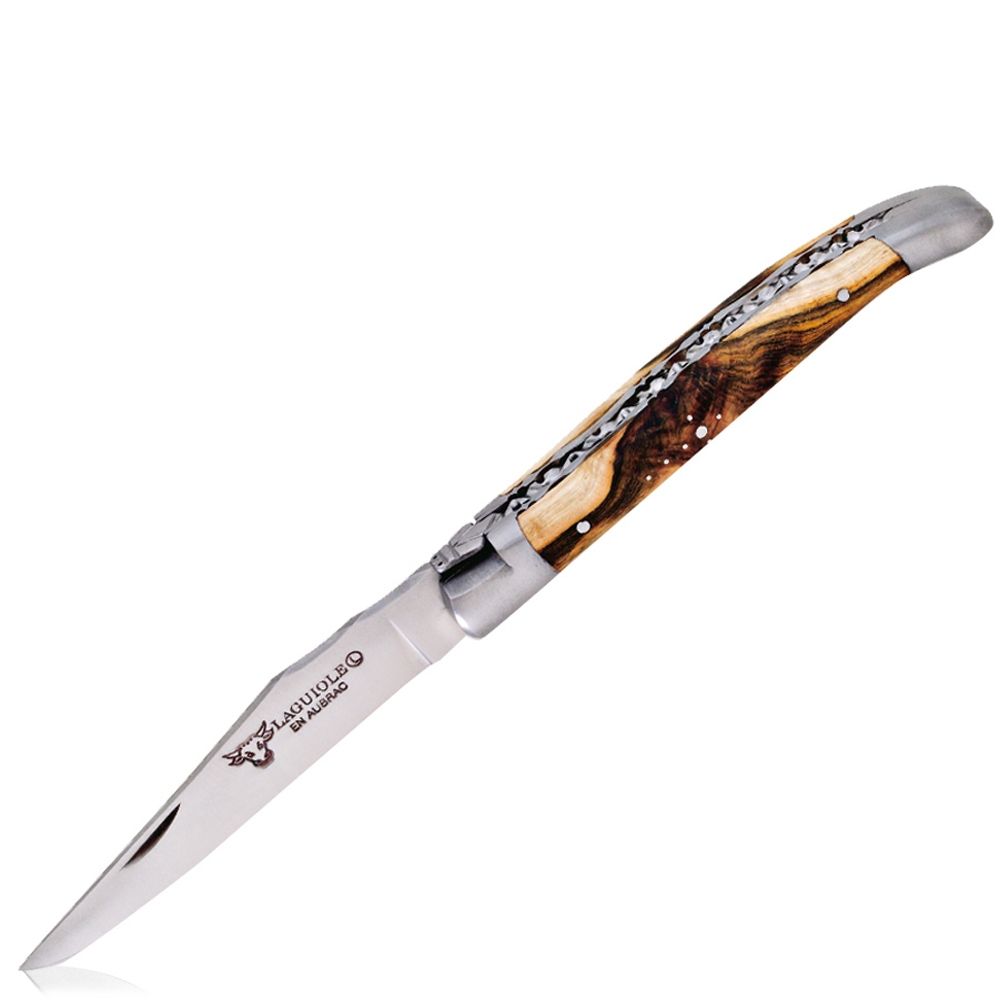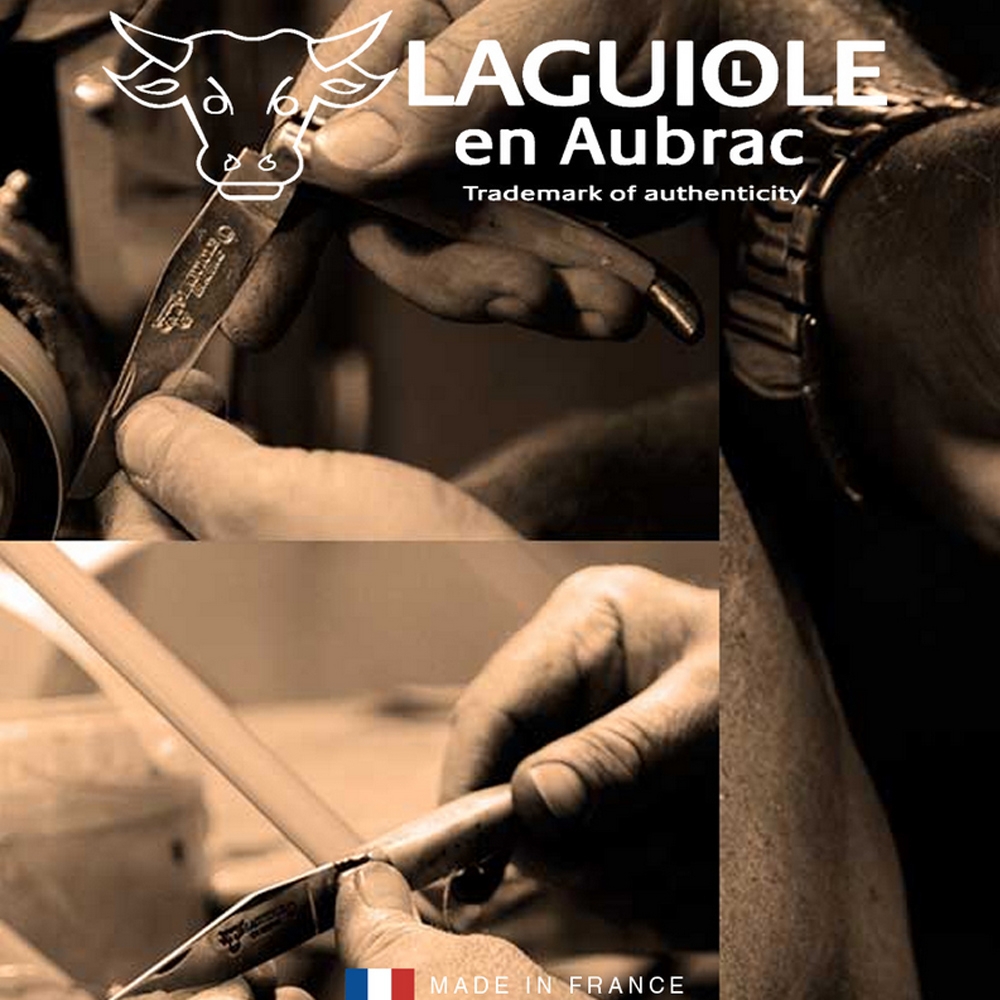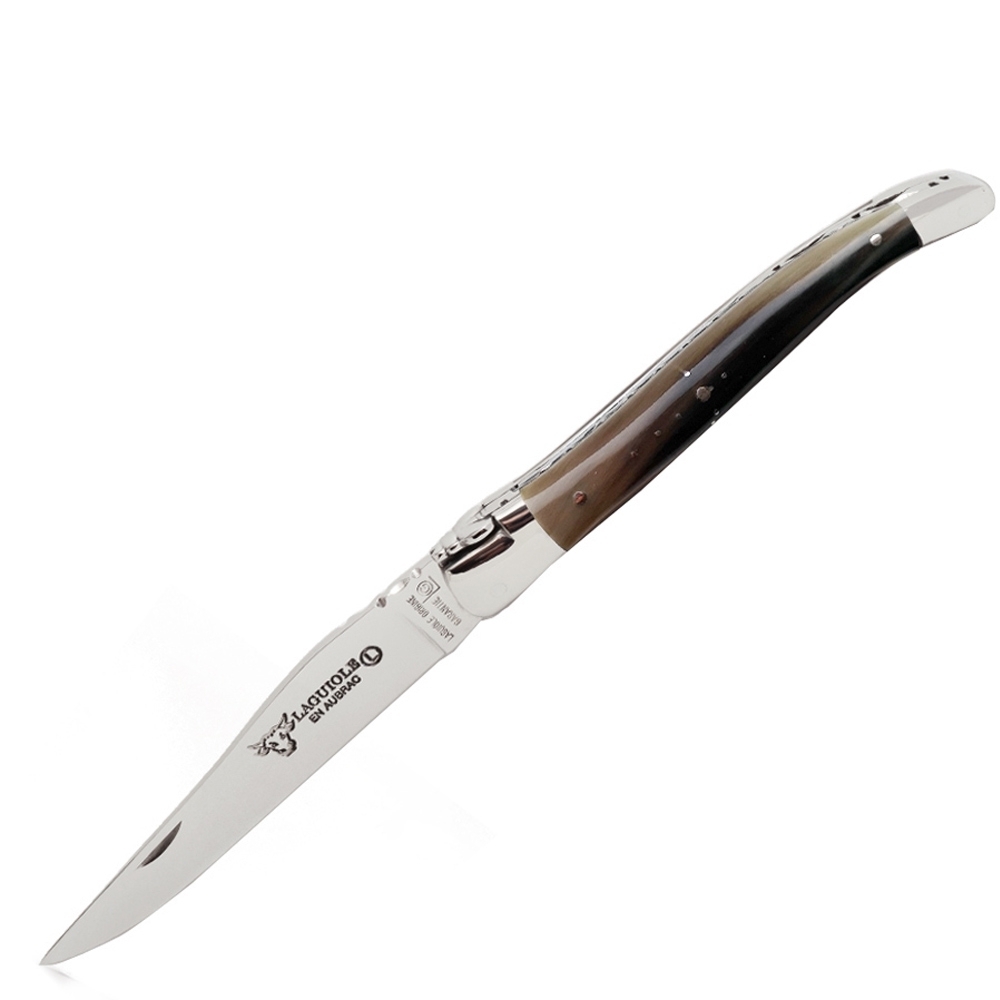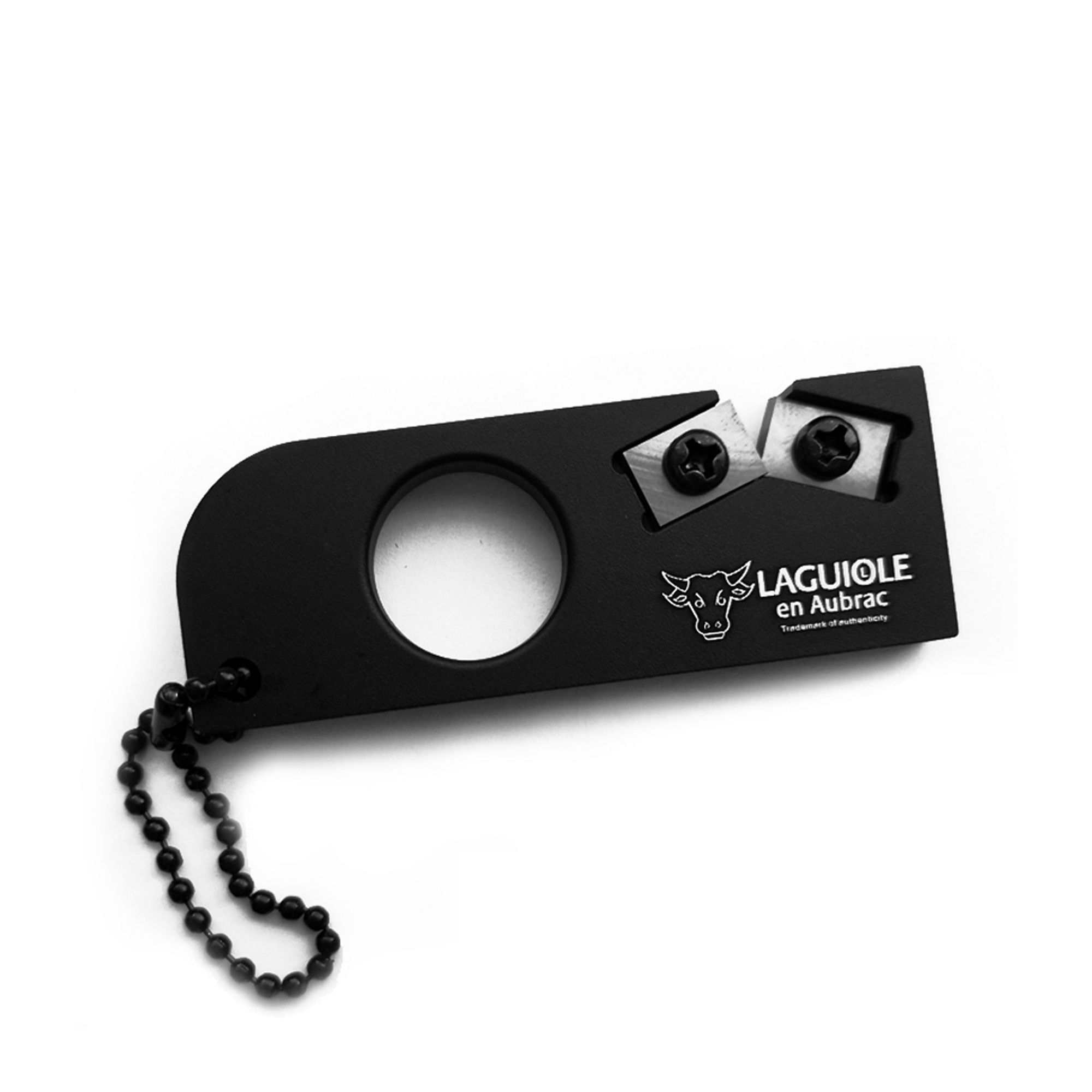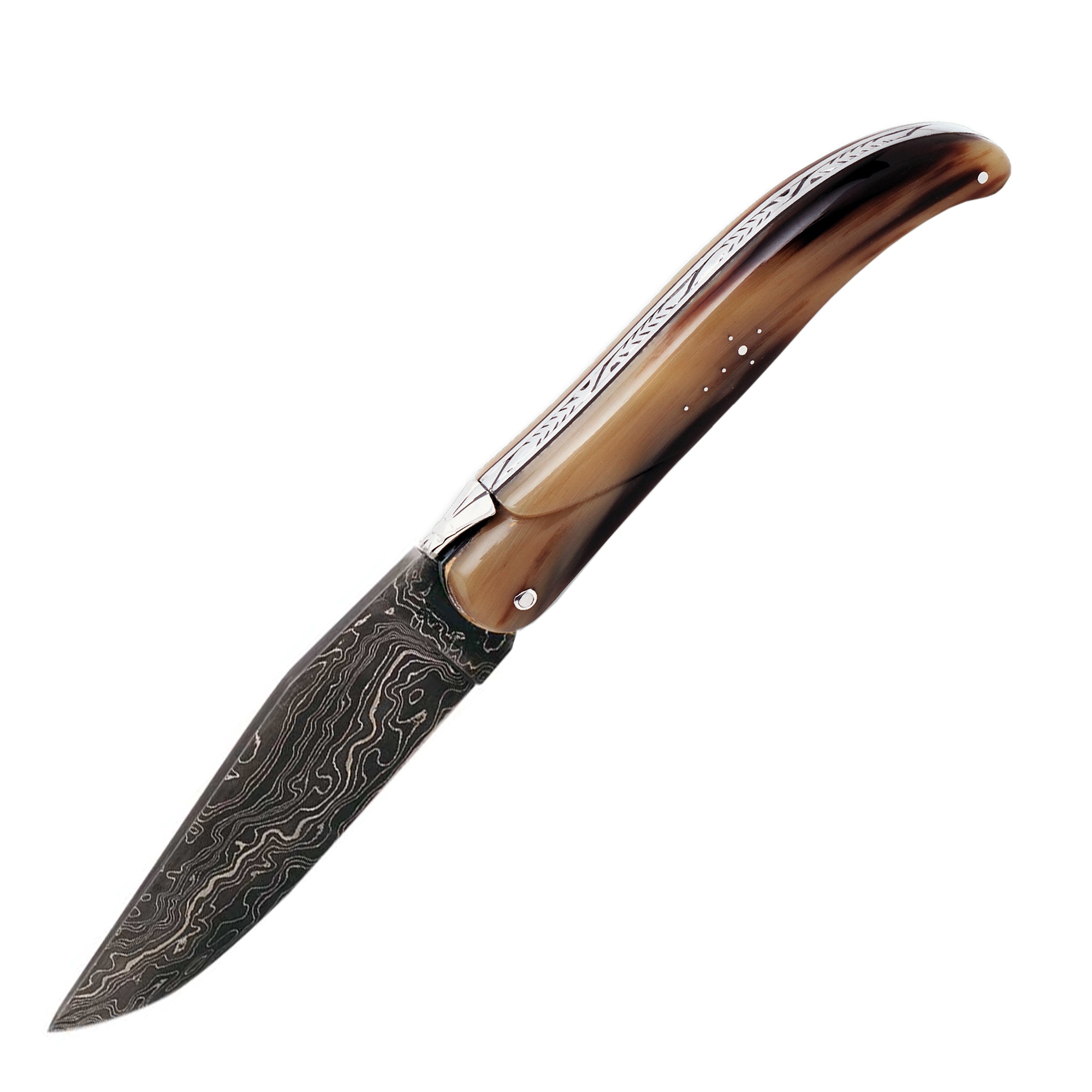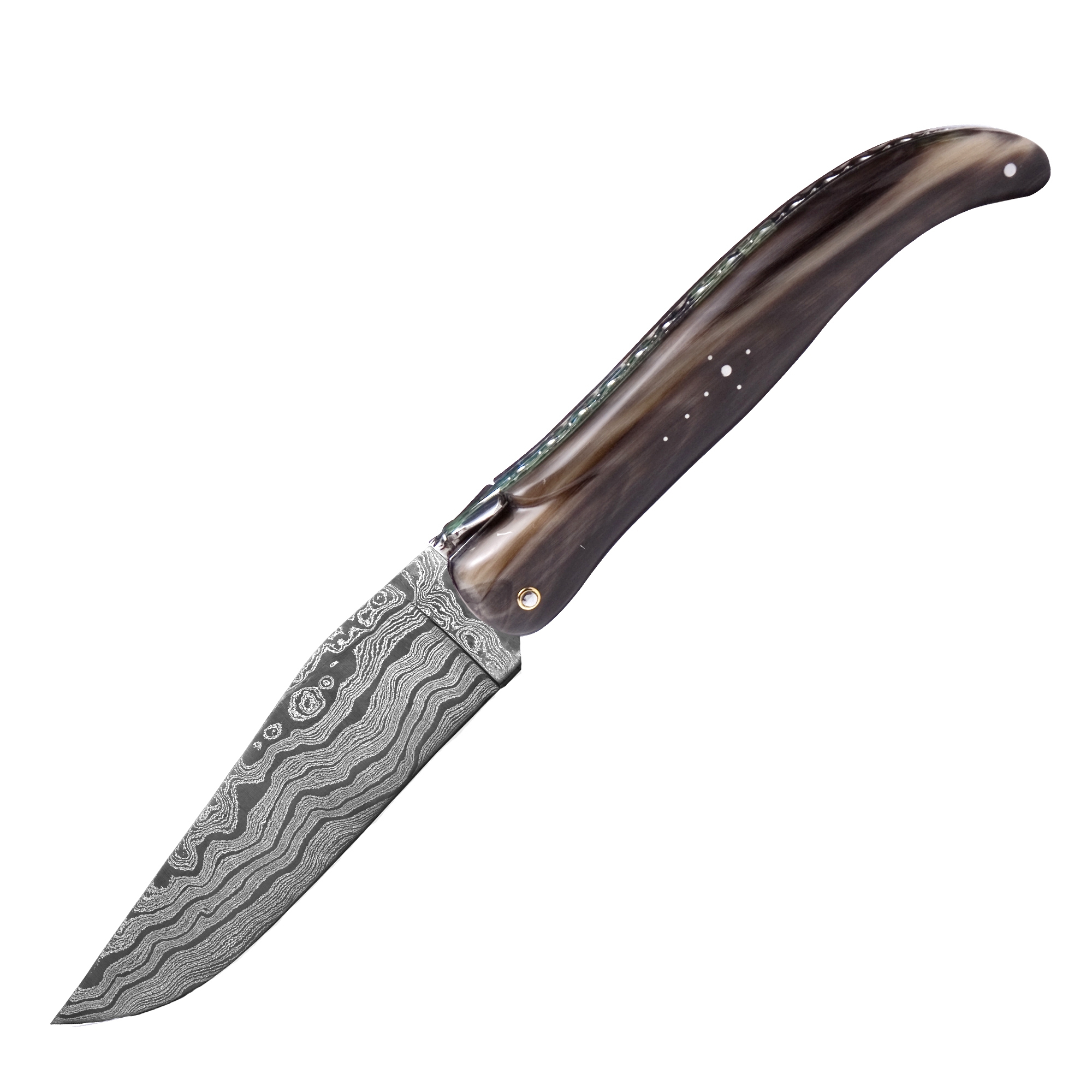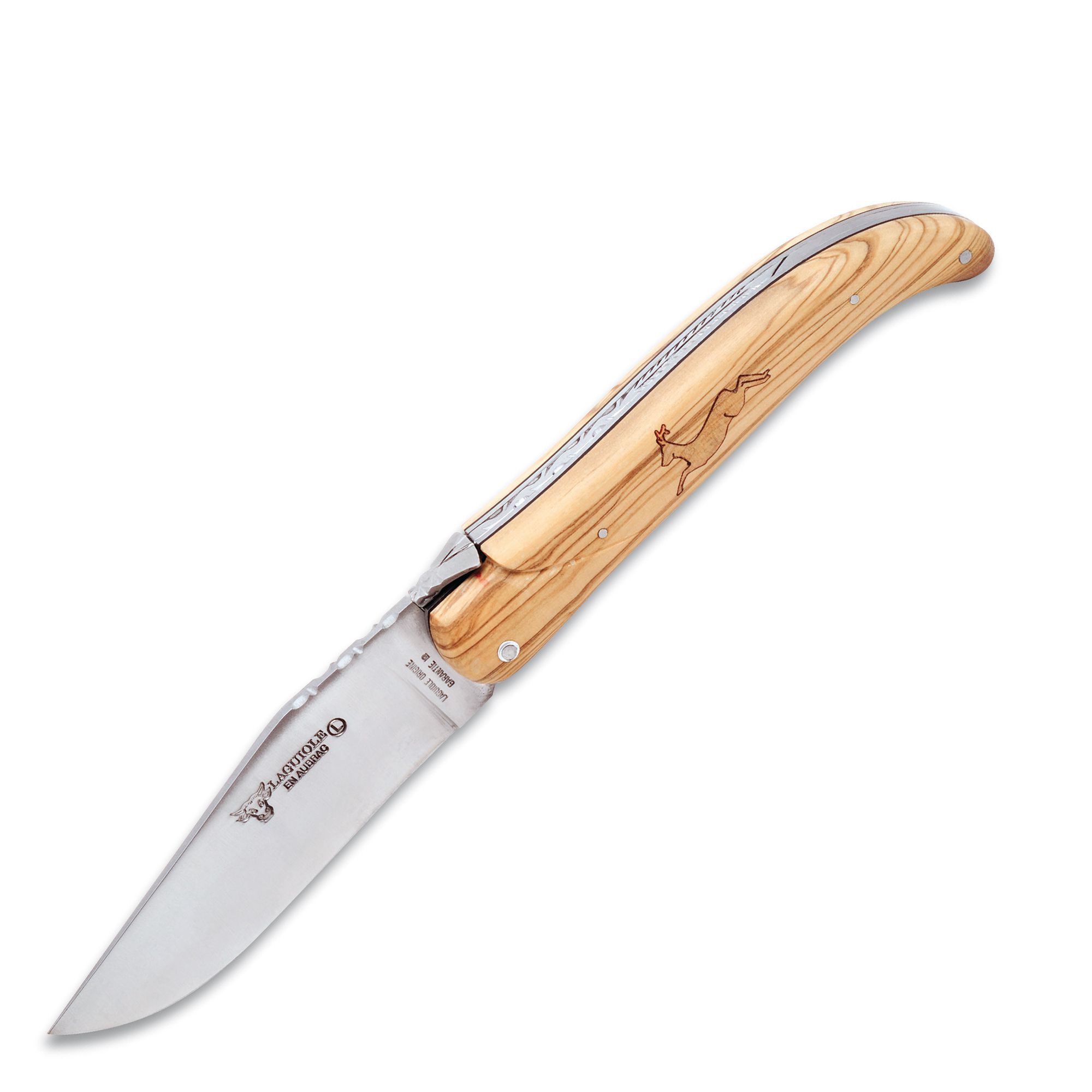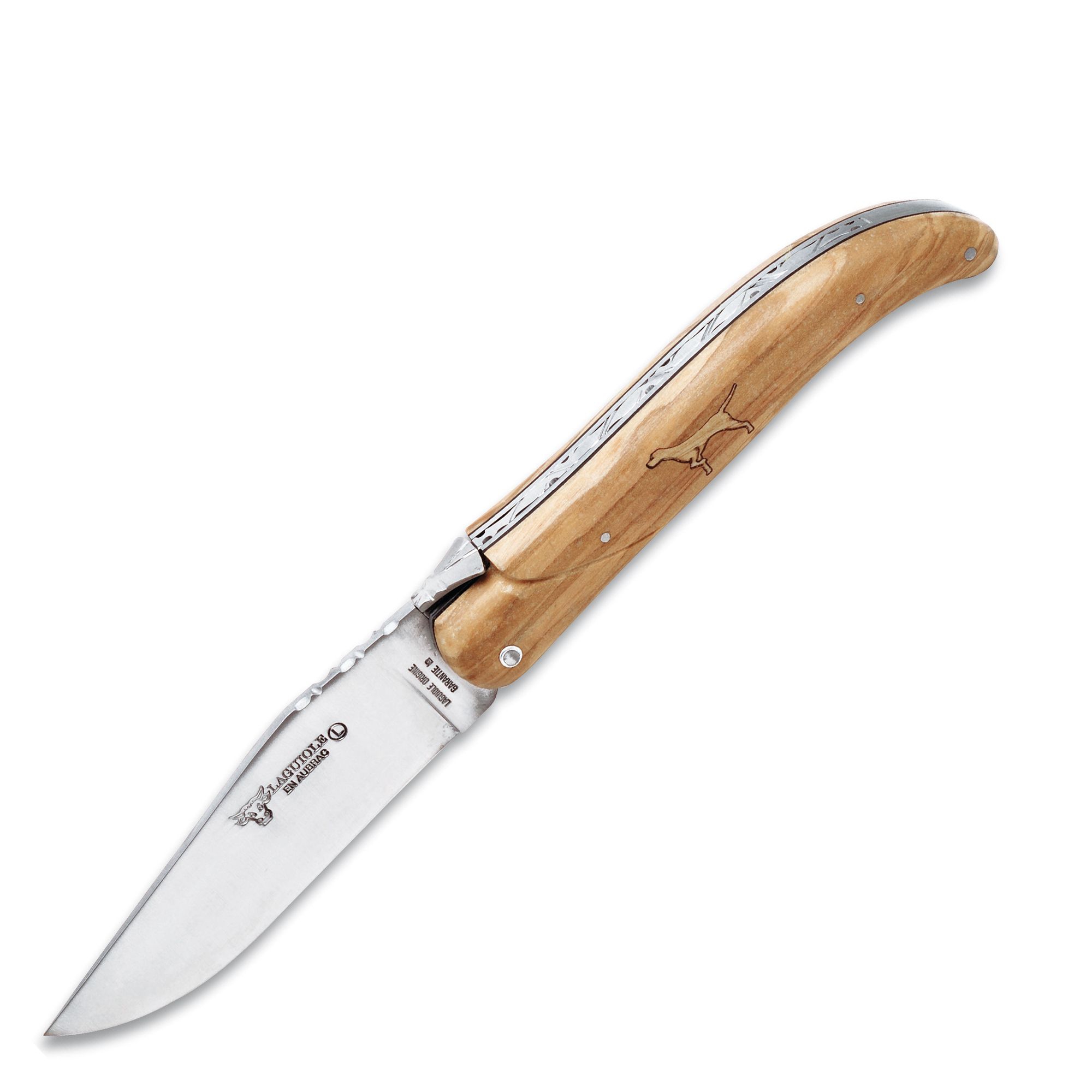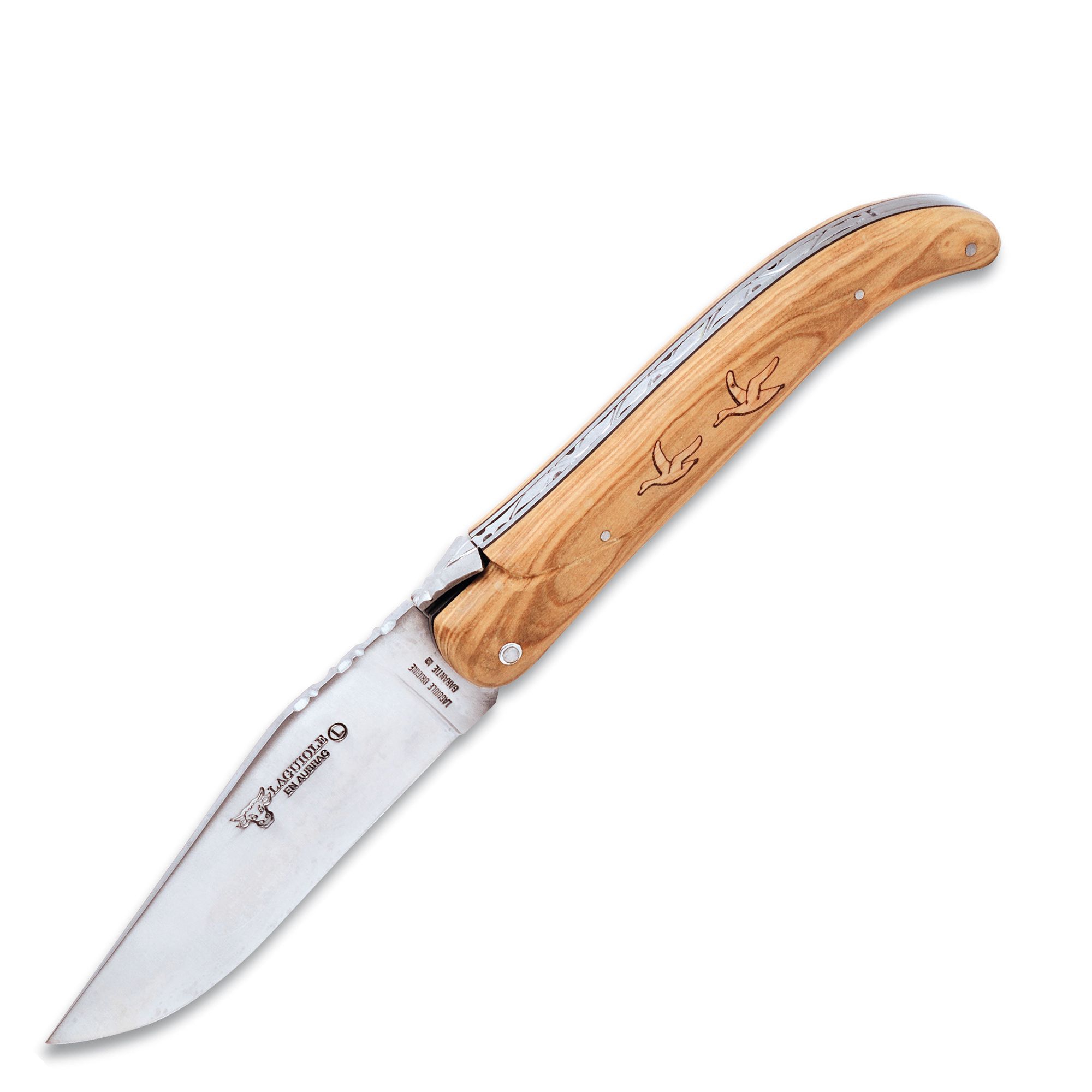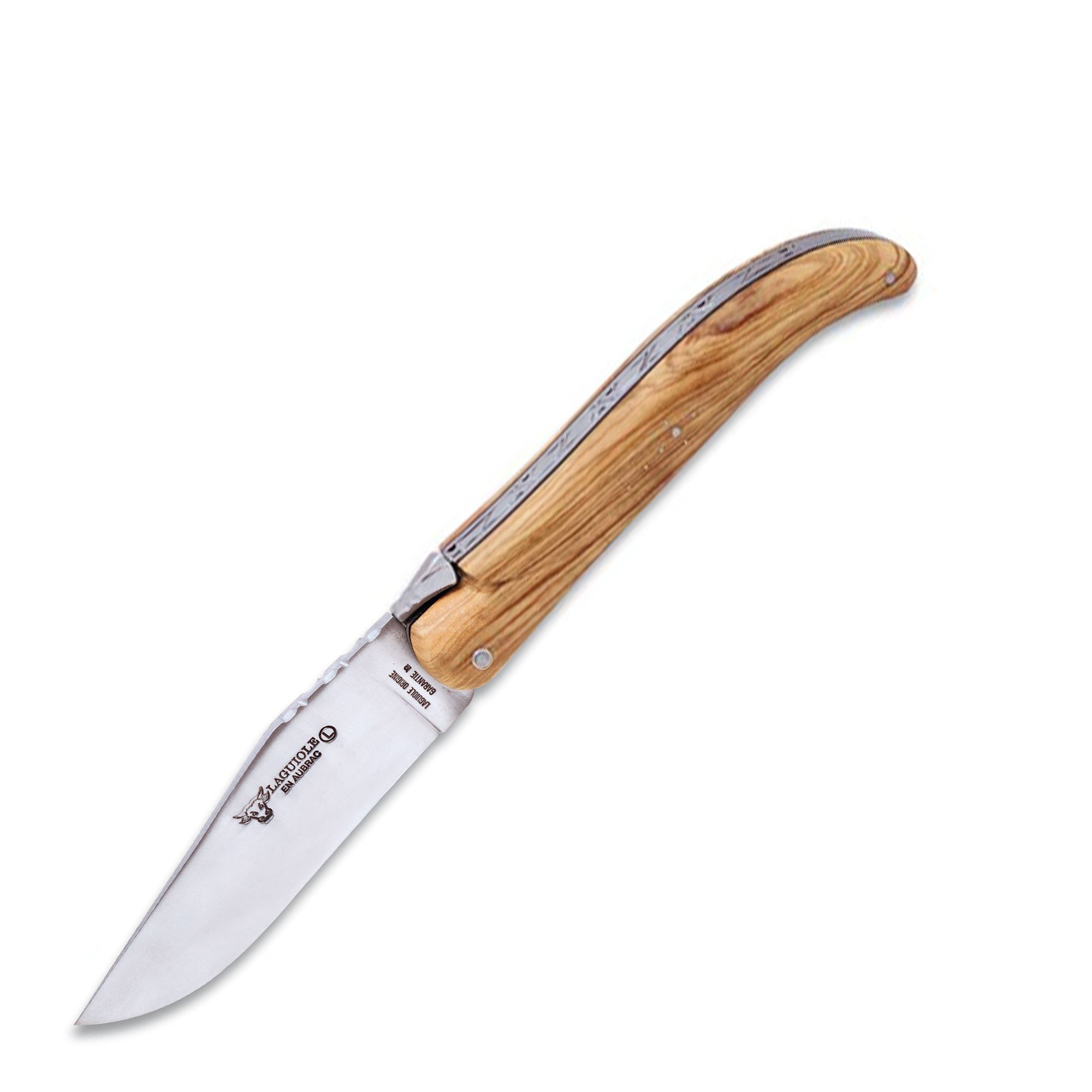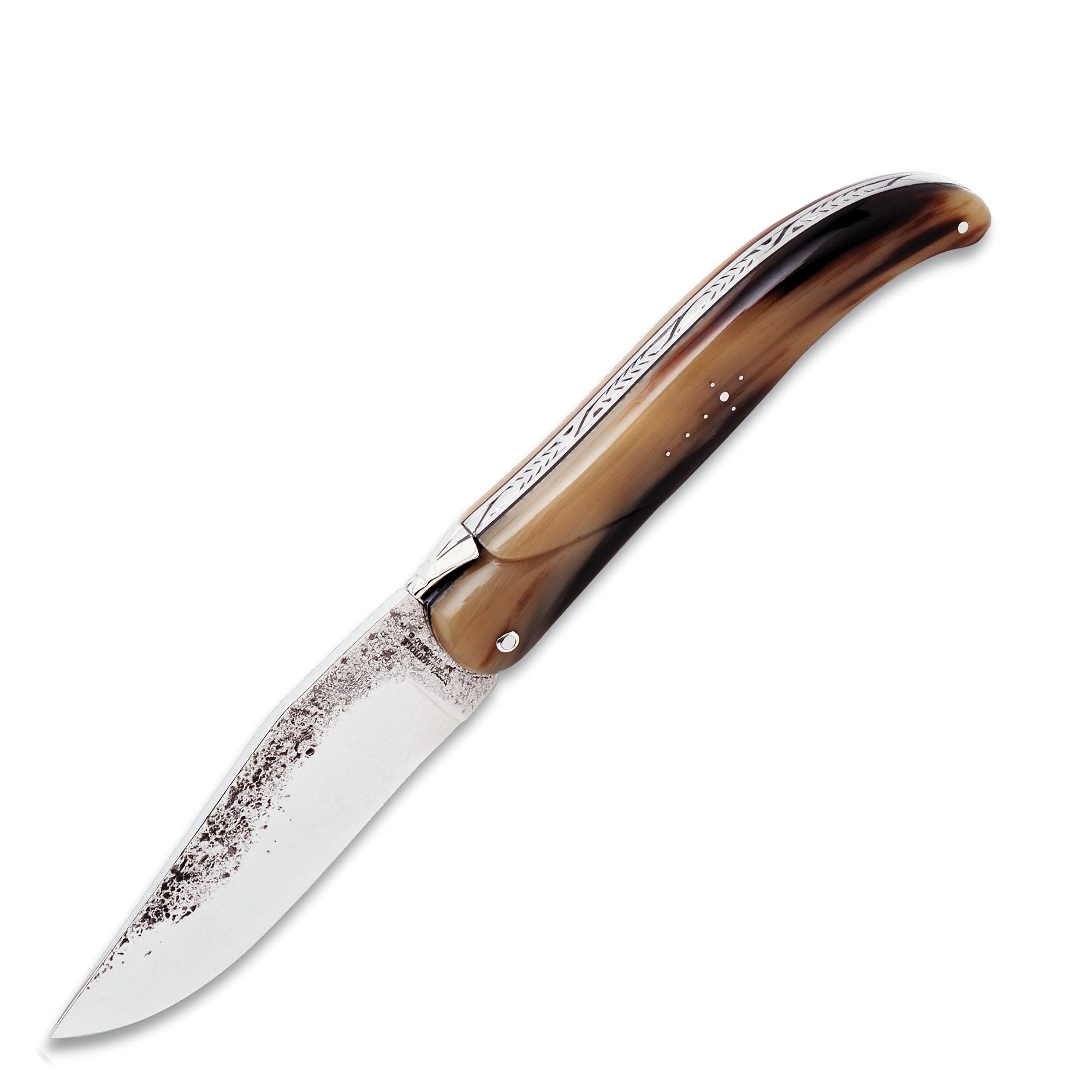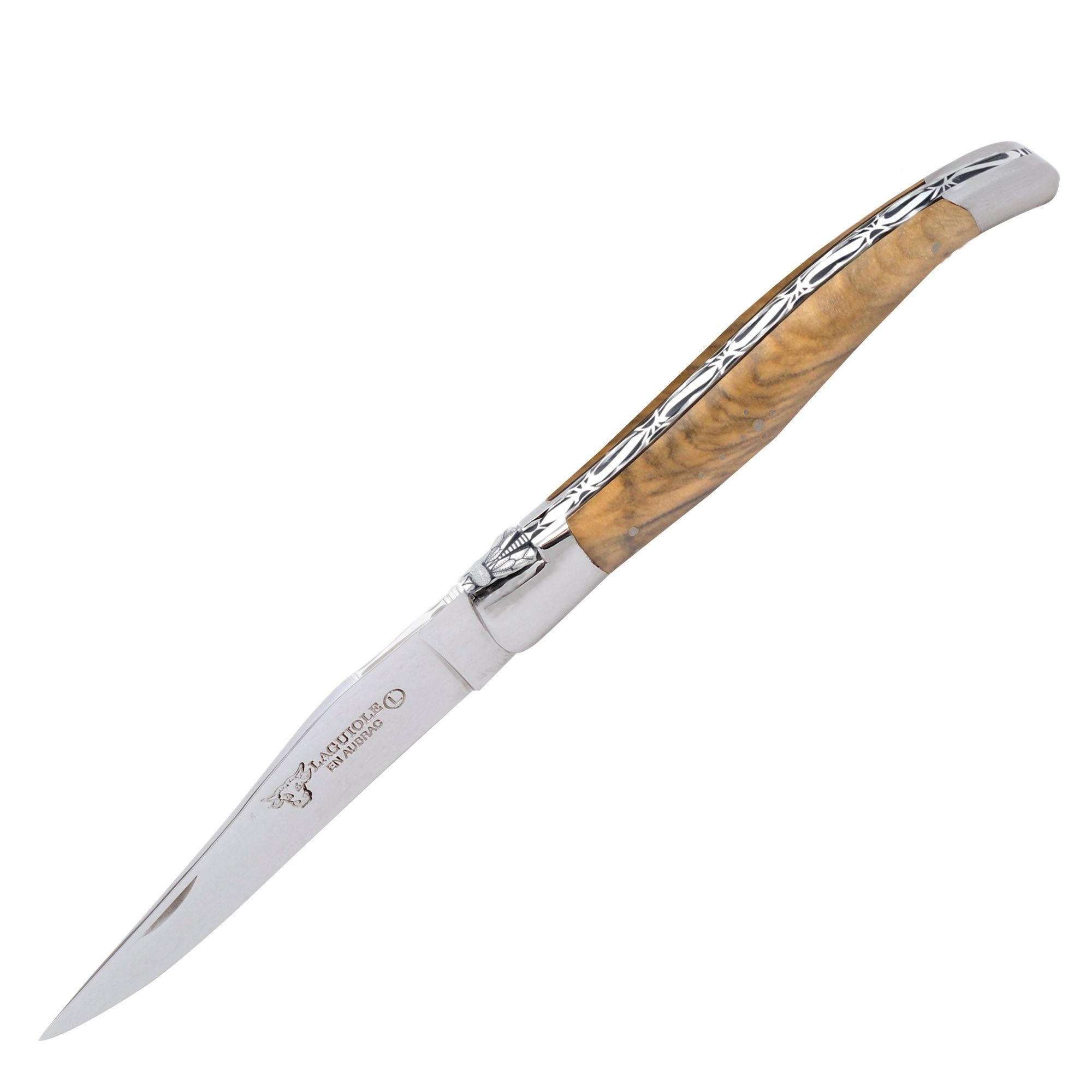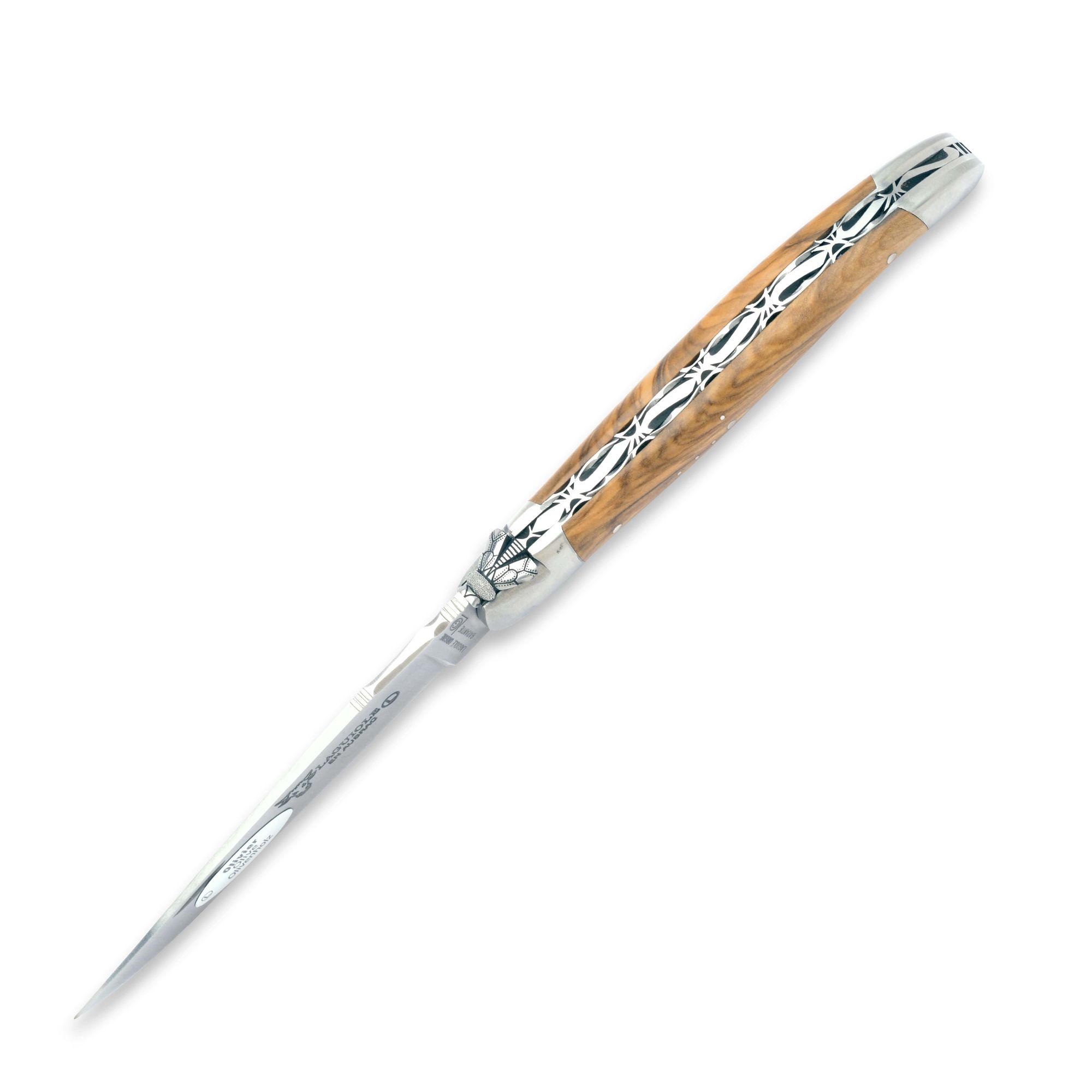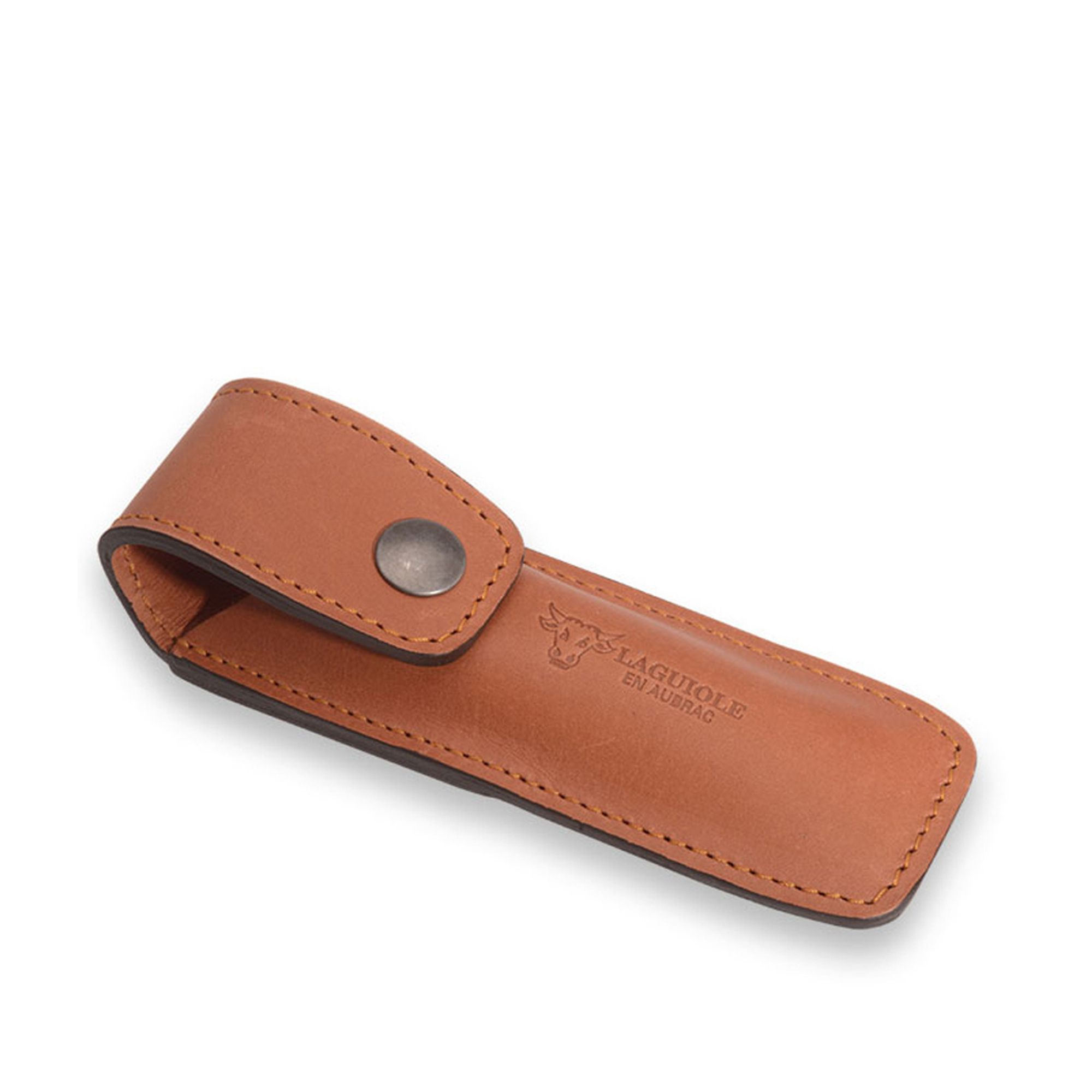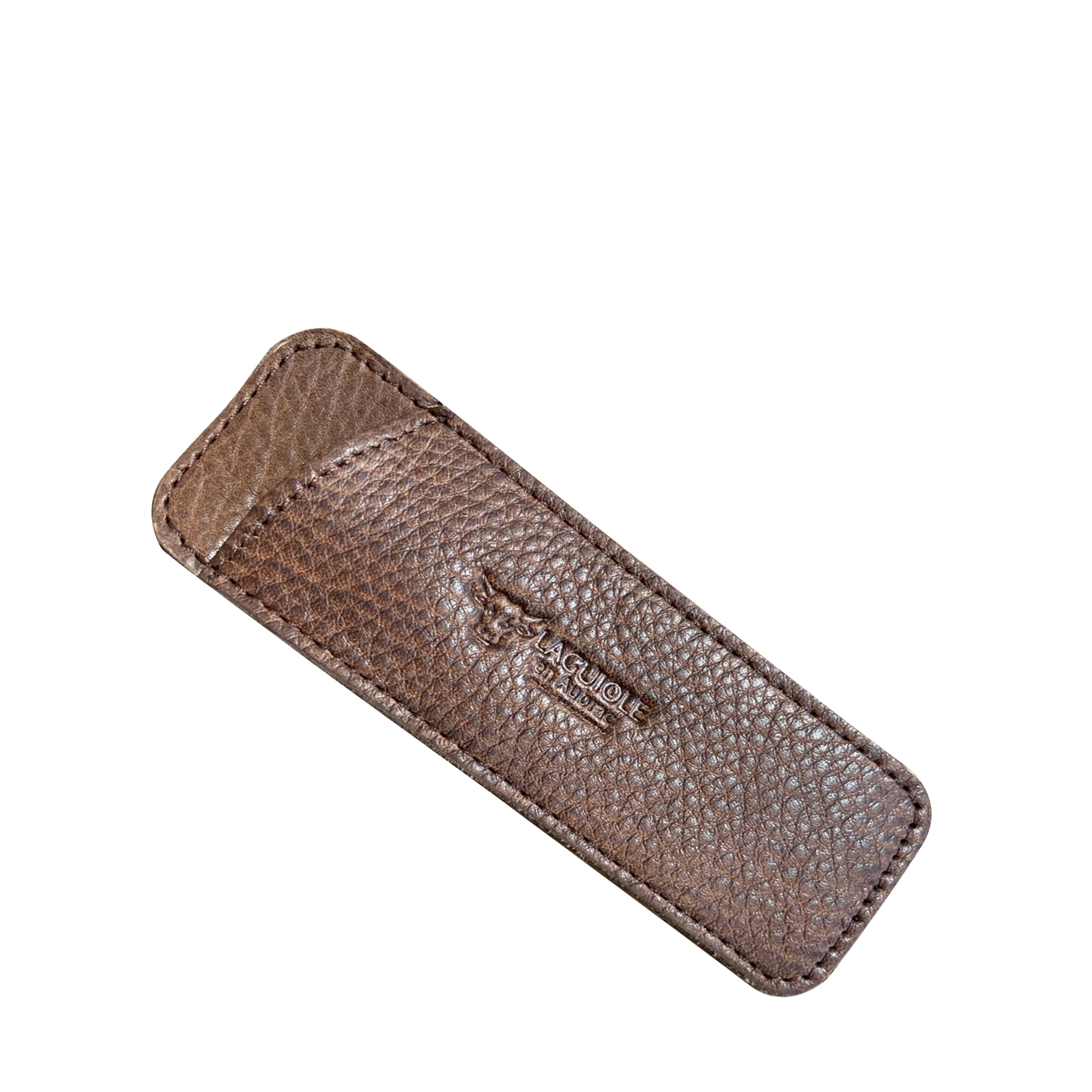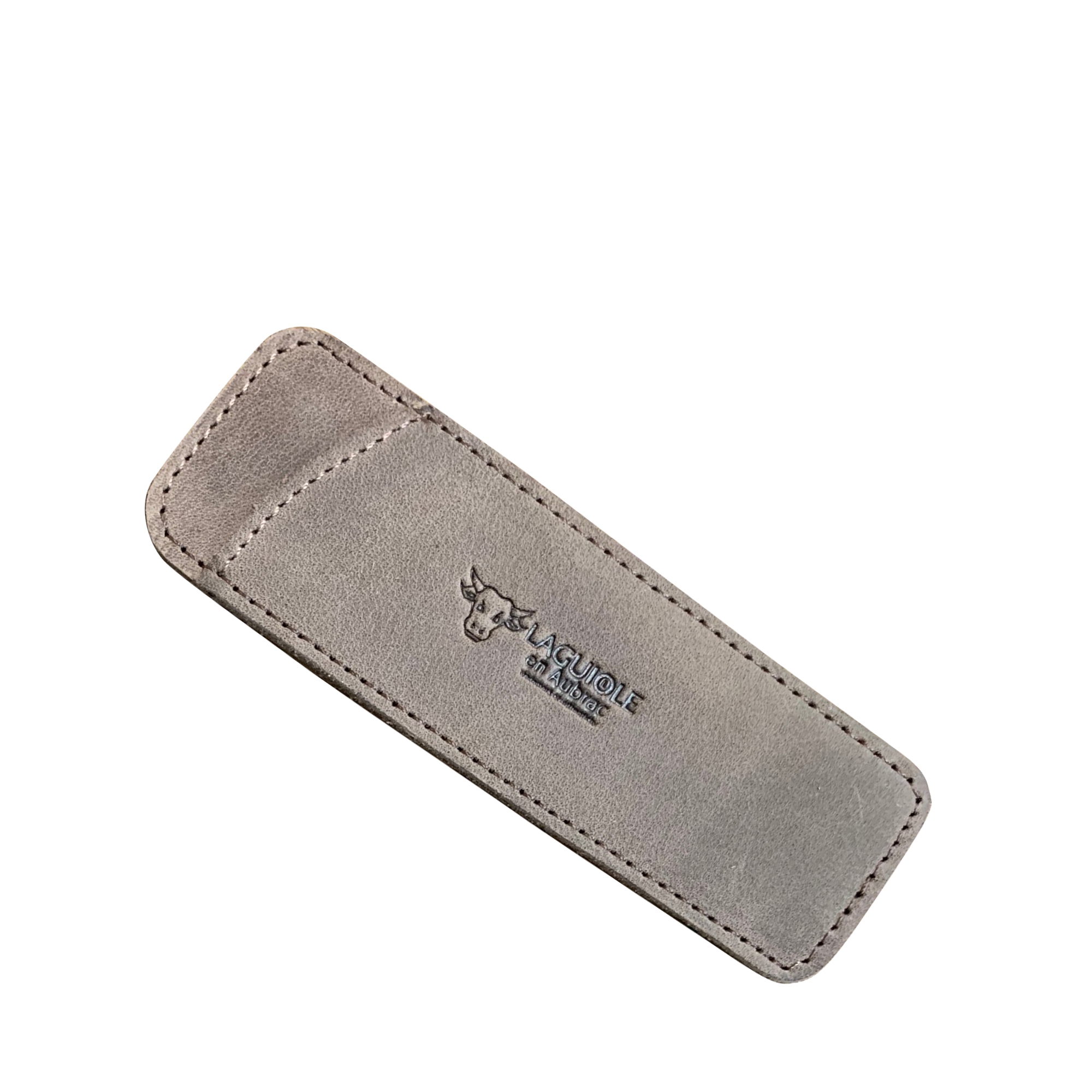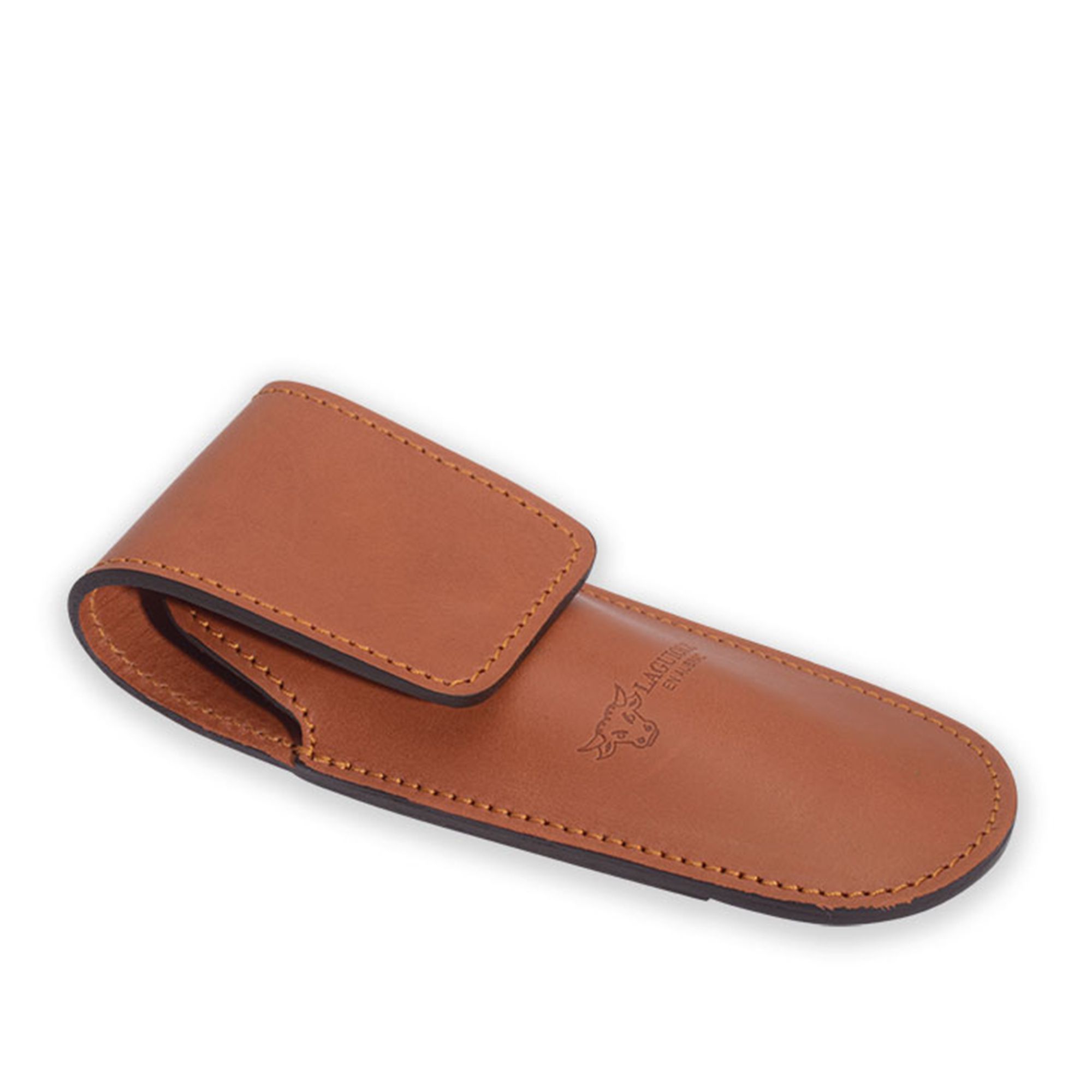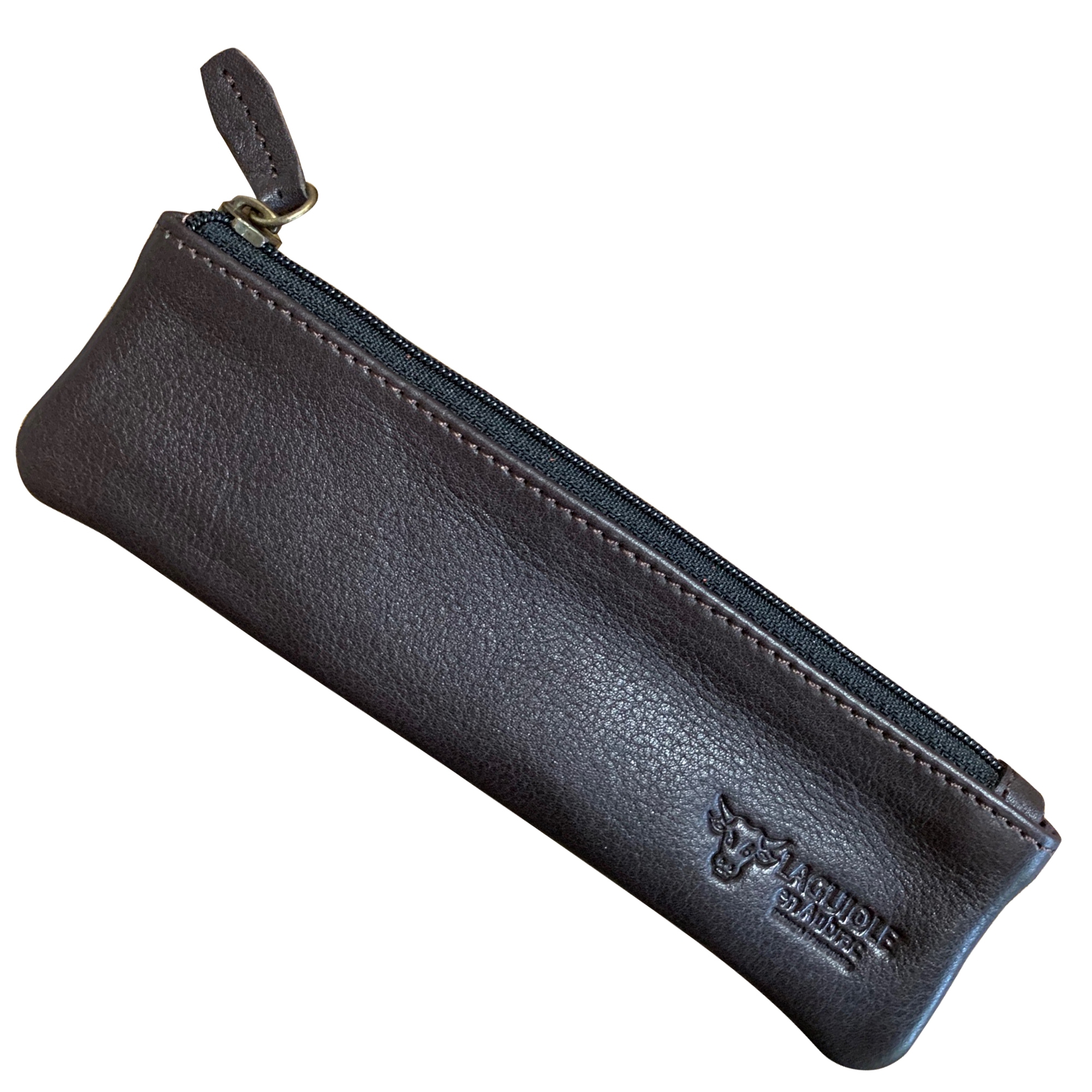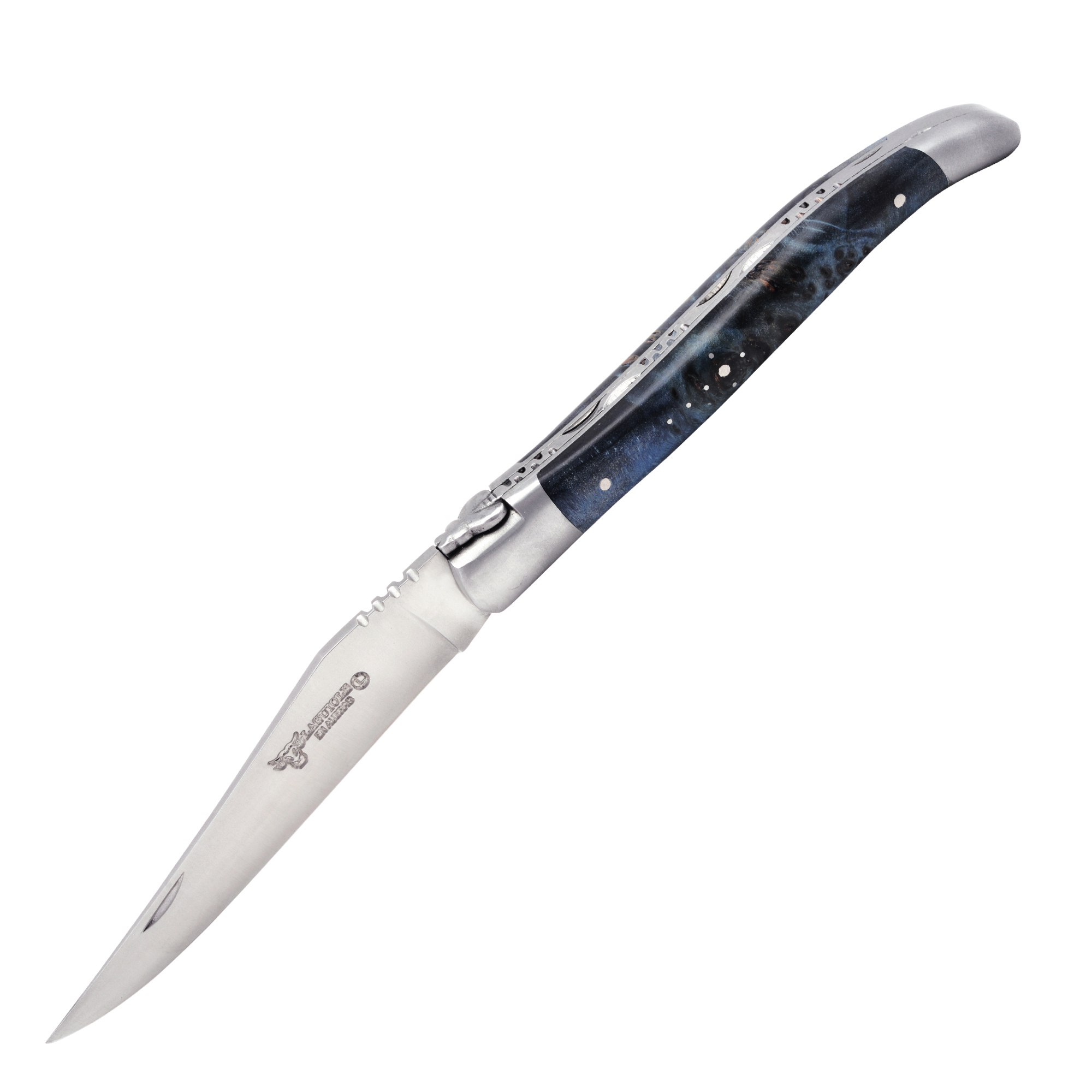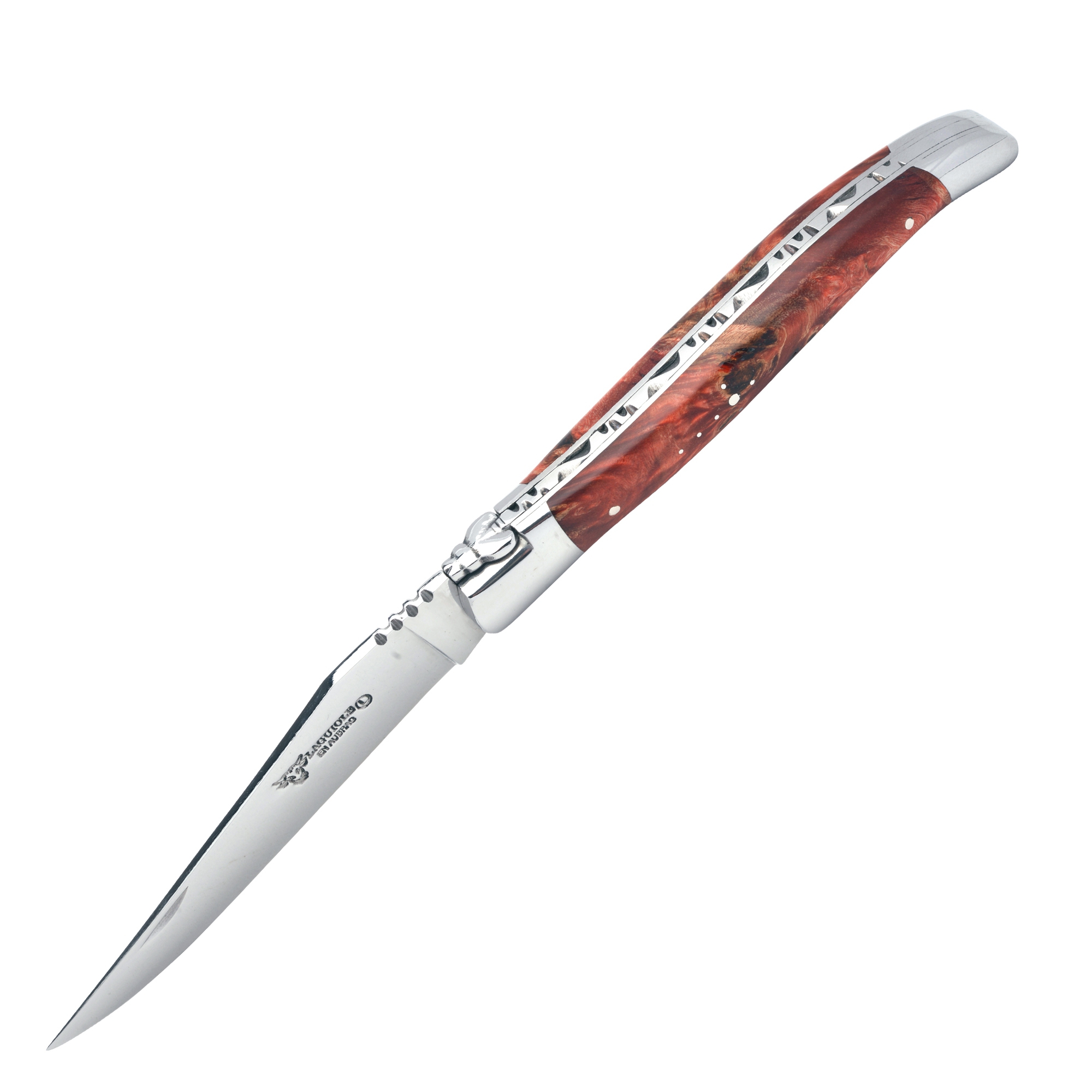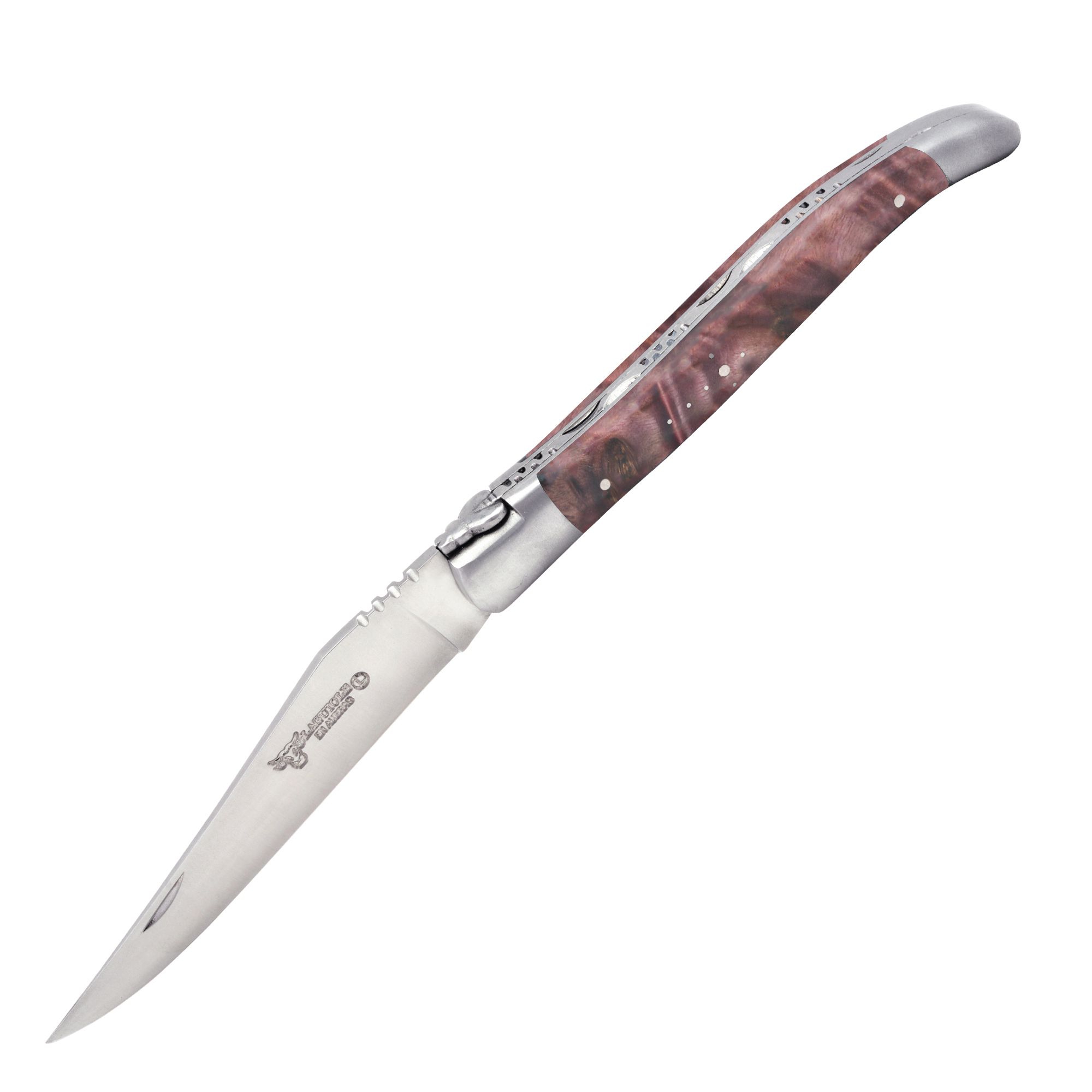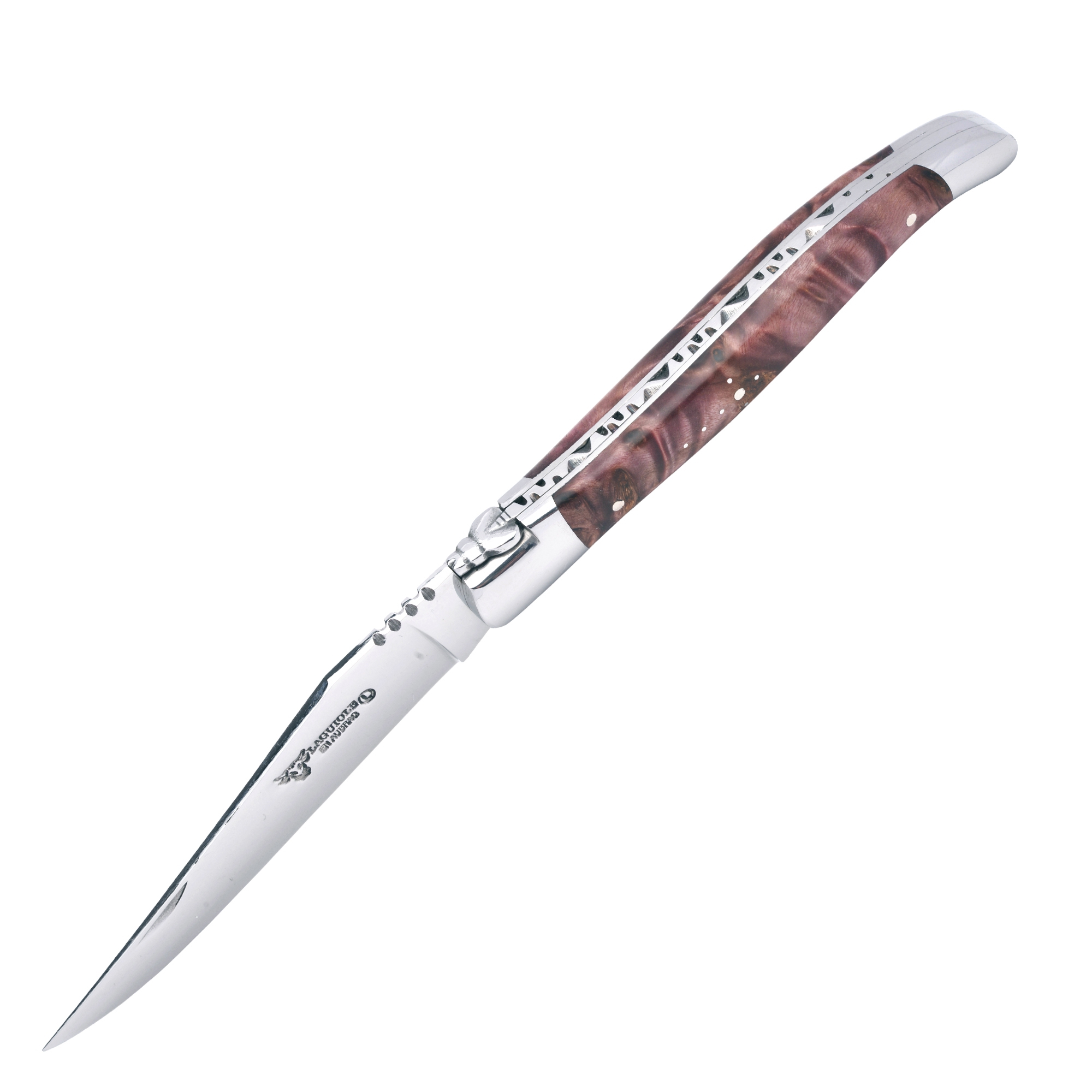Laguiole - hunting knife horn tip damascus blade
Traditional craftsmanship forging at the highest level! The knives made in Aubrac demonstrate the highest level of traditional craftsmanship. Each knife bears the bull's head as an unmistakable symbol, pointing to the famous breed of cattle native to this area, which also goes by the name Aubrac.
The Laguiole folding/pocket knife is a loyal and invaluable companion for leisure and work in your life and sits comfortably in the hand. Ideal for everyday use or when collecting mushrooms or simply for carving.
Please note: Due to the elaborate individual production of each Laguiole en Aubrac product, delivery times may be extended if we do not have them in stock. Please inquire about product availability in advance by email to lager@culinaris.eu or by telephone!
Your daily companion - cut-proof, practical and functional. The shape of the handle scales allows the knife to fit well and securely in the hand.
Blade length: 10 cm
Total length: 22 cm
Important! This is a natural product. Appearance of the handle may vary! Clean by hand only!
Material: Blade made of carbon damascus (line damascus), handle made of horn tip
Manual decoration (guillochage) of the blade and feather
The origin of the Laguiole en Aubrac knives
The ancestor of today's Laguiole knife was similar to a Spanish-Arabian knife, the Navaja. Workers who went to Spain in the winter brought back this knife as a souvenir. The local cutlers combined the shape of the Navaja with the regional knife, the Capouchadou, and so the Laguiole knife was born. The first “Laguiole” was made from bone or horn (the hardest materials available at the time). You can see how much has changed in the use of the materials. In the beginning, bones and horn were primarily used in the processing, but today, among other things, fine woods from all over the world are used. Today, instead of ivory, people prefer to use mammoth ivory to protect living animals.
1840: Introduction of the awl, used to pierce the bloated stomachs of cows from eating too much soft grass (flatulence).
1880: Manufacture of the corkscrew that the North Aveyronaises need, since many of them work as waiters in Paris cafes.
The Shepherd's Cross on the handle is the mini version of the symbol of the Holy Cross. The Laguiole was put into the bread so that even those who were traveling for a few months could pray.
Authenticity of your knife
There are many manufacturers, mainly in the two main regions of knife production: in the area of origin around the town of Laguiole, the cradle of the Laguiole knife, and Thiers, capital of French knife production. In each of these areas there are different types of production:
Industrial, with mechanical adjustment and decoration, and assembly on the assembly line.
Handmade, whereby all work steps are carried out by one and the same person, including the decoration of the feather by hand and the adjustment with a sense of proportion, making each knife unique.
To ensure the authenticity of a Laguiole, check the exact origin, the length of the guarantee, the quality of the materials and the quality of the surface treatment. There are many inferior imported products sold under the "Laguiole Véritable" brand.
The knives from En Aubrac are marked with the LOG (Laguiole Origine Garantie) seal of quality, i.e. H. The knife was manufactured entirely by hand in Laguiole by a master blacksmith according to LOG quality criteria and manufacturing specifications. (on the blade). The blade shows the characteristic bull's head and an "L" as a symbol of production in the region of origin. Each blacksmith decorates the back of the blade with his personal engraving, the guilloche. It guarantees quality craftsmanship and makes each knife unique. You will also receive a certificate from the manufacturer. The feather (part (the long stem) and bee/fly) is forged from one piece and guilloched/patterned by hand - with arrows or small circular saws. The pattern (the so-called guilloche) is the unique "signature" of the master blacksmith registered with the Puy-de-Dôme prefecture. Differs from master to master
Every Laguiole must be unique
109 steps for a one-piece model, 166 for a two-piece model and 216 for a three-piece model; This is the way in which the blacksmith's hands make a knife from the raw materials. In this long journey lies the difference between industrial production and artisanal production, which alone guarantees that each Laguiole is a unique work.
Processing the precious woods
Wood, a simple material, was used very early in the production of "Laguiole" knives. If production at that time was limited to local types of wood, today, thanks to creativity and design, precious and exotic essences are used. These pieces, which delight collectors, are the visual testimony of the perfect marriage of steel, brass, stainless steel and wood.
The processing of the horn
The first "Laguiole" had a bone or horn handle (hardest materials available at the time). The latter offers a variety of colors and designs. It is important to distinguish between the tip of the horn and the lower part of the horn (or pressed horn).
The solid horn tip shows a beautiful grain, much finer and more harmonious than the pressed horn, which is hollow, is heated and shaped, which makes the pressed horn much more vulnerable and fragile.
Working on the blade and the spring
Blade and spring guilloched by hand.
The spring is consistent with the origin and is polished internally, with its solid forged fly and with its stop that prevents the blade from striking.
Main quality criteria of local artisanal production.
Individual hardening - adjustment by eye.
Assembly of each model from A-Z and by the same cutler
Recommendations for use and care instructions
Laguiole Knives are not tools (no screwdrivers, bottle openers, oyster crushers, etc.) and should only be used for cutting. The knives are not dishwasher safe - too much moisture damages the handle, blade and the mechanics of your knife. By carefully closing the knife, the connoisseur will carefully avoid letting the blade hit so as not to damage the grind or the spring, thereby respecting the "quiet spring gets very old". (The stop prevents the blade from breaking on the spring.) The master of the house was the only one who was allowed to “pop” the blade to ask the family to clear the table.
Handle care
Care instructions for the handle scales made of local or tropical wood
Polished, shiny wood, e.g. snakewood, occasionally wipe clean with a damp cloth
Rube matt woods such as olive wood from time to time with jojoba and orange seed oil or beeswax, which close the pores
Care instructions for the horn handle scales
Wipe occasionally with a damp cloth. Cautious! Too much moisture can cause the wood to split.
Care instructions for the handles made of aluminum, stainless steel and acrylic
These are more resistant and insensitive to water. Nevertheless, it is advisable to always dry these completely.
Blade care
Care instructions for the stainless steel knife blades (12C27 Sandvik steel, 14c28 or T12 steel)
Use of stainless Swedish steel in almost all Laguiole knives
Always wipe thoroughly with a damp cloth after use and allow to dry
Care instructions for the carbon steel knife blades
Are usually harder than stainless steels
Acidic foods, for example, can build up a patina over time
Please do not clean coarse dirt with scratching sponges - a damp wine cork or cold ash is also best suited for this.
Care instructions for the Damascus steel knife blades
After use, always wipe thoroughly with a damp cloth, dry and oil with e.g. apricot kernel oil.
Sharpening your knives
Before you sharpen your new Laguiole en Aubrac knife, we recommend trying it out on an old knife, as the whole procedure requires a little practice.
Wet grindstone medium grit approx. 800 and fine grit approx. 4000
Grinding angle 15 - 18 degrees
Sharpening using the sharpening steel is also possible if the sharpness is still present



